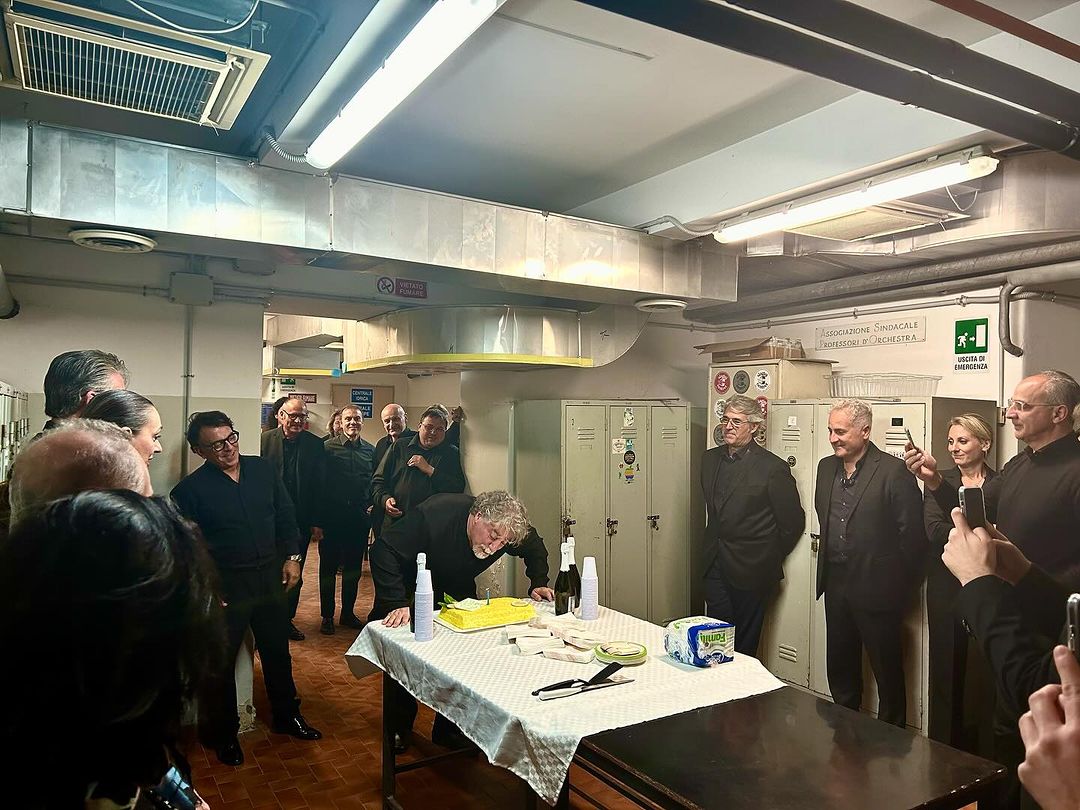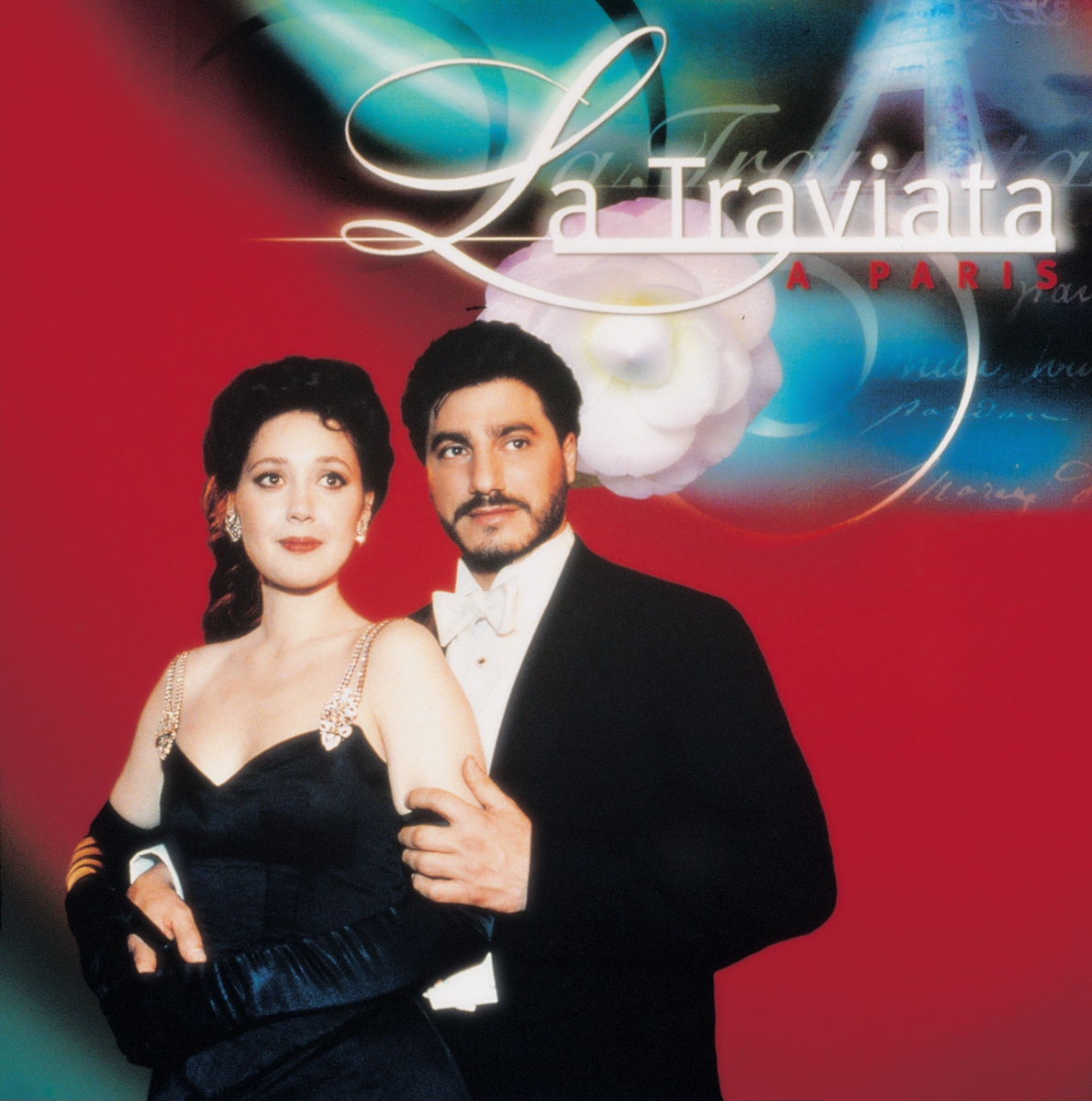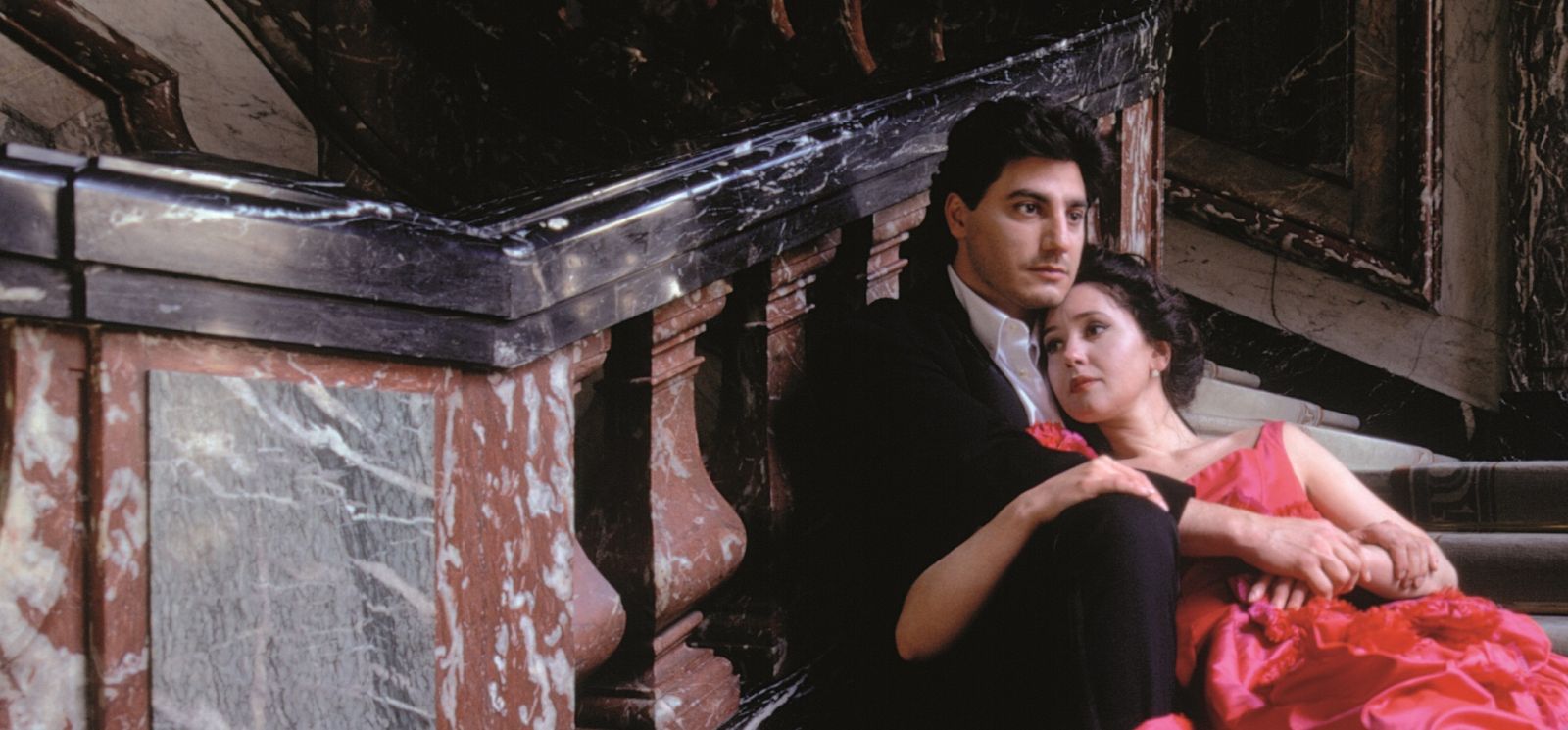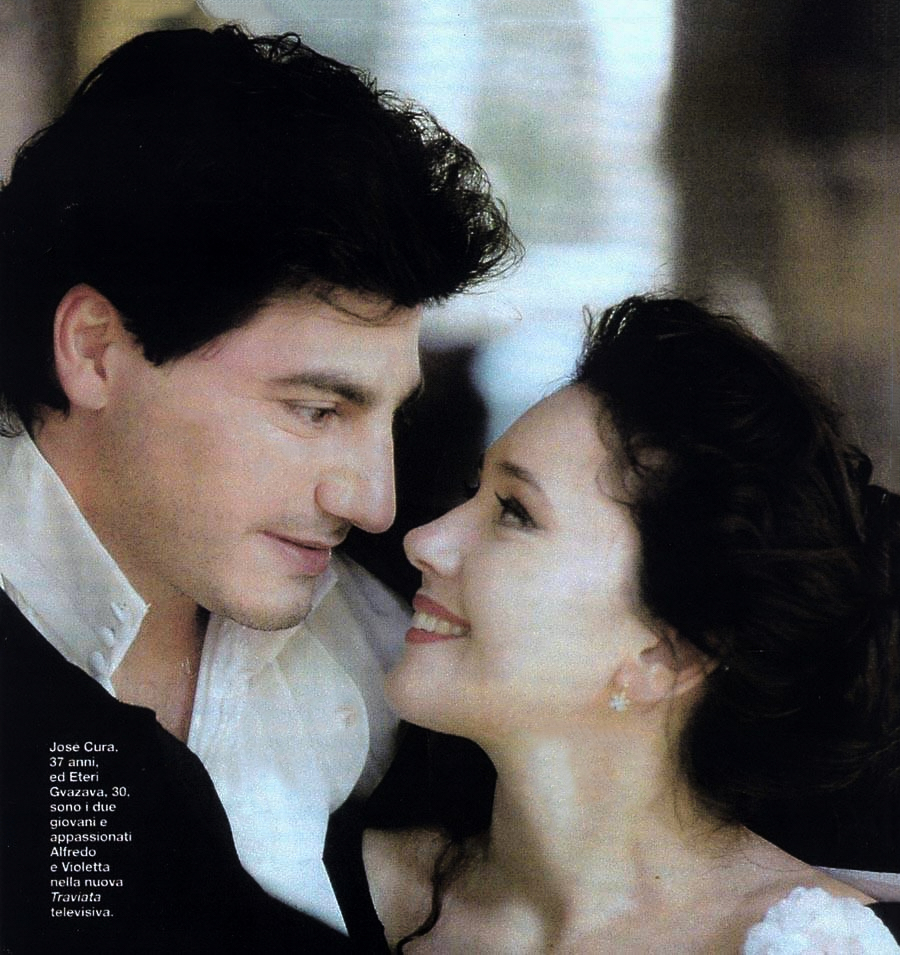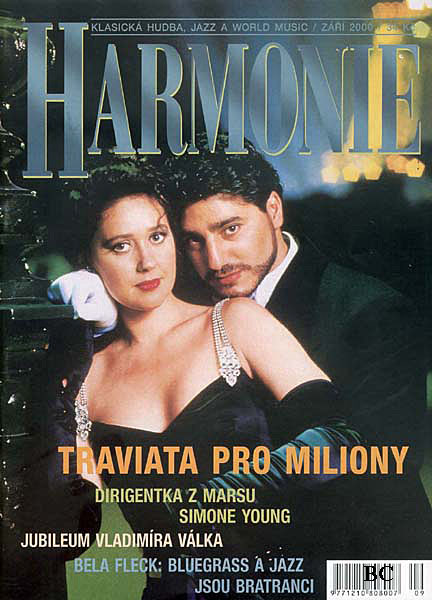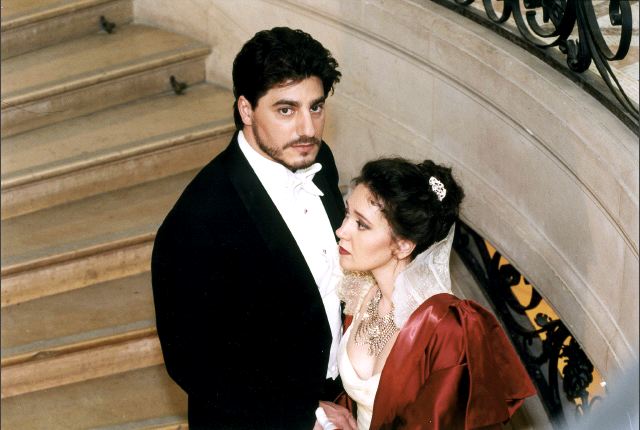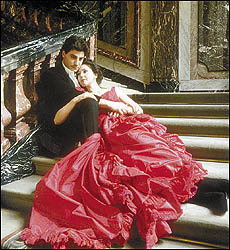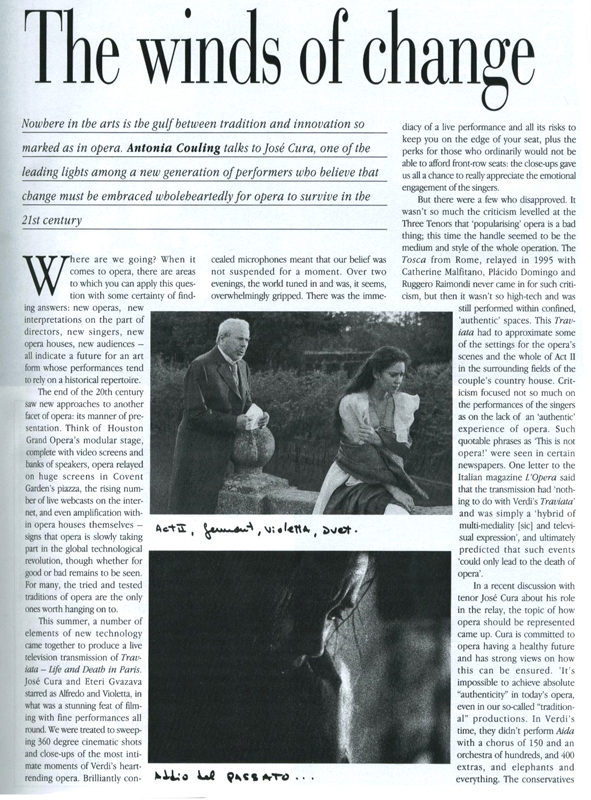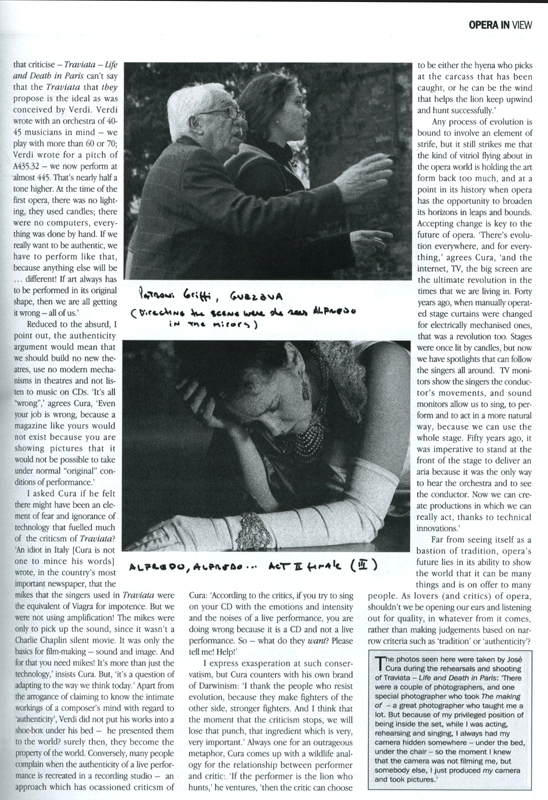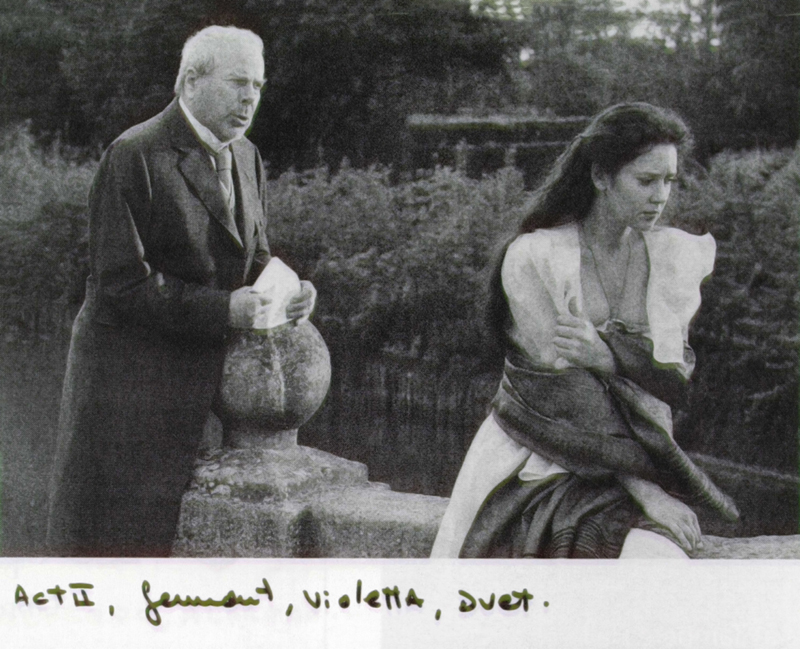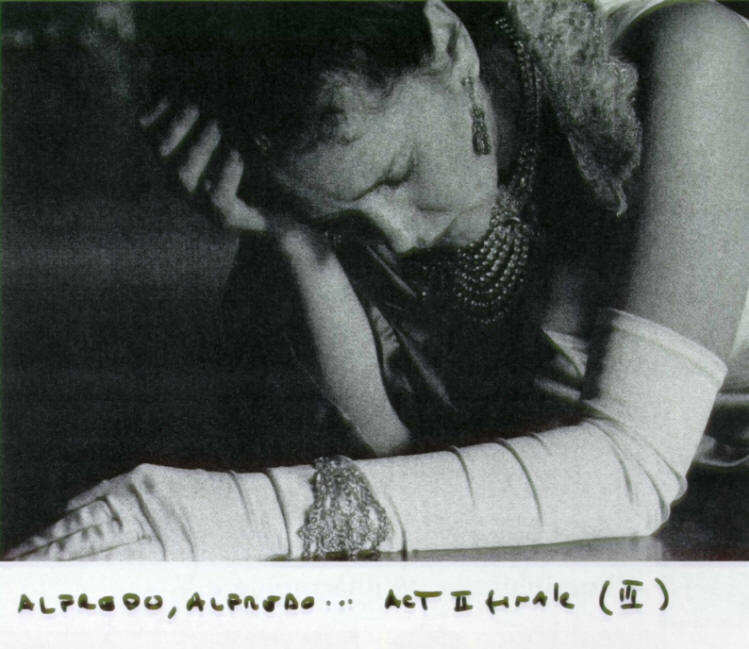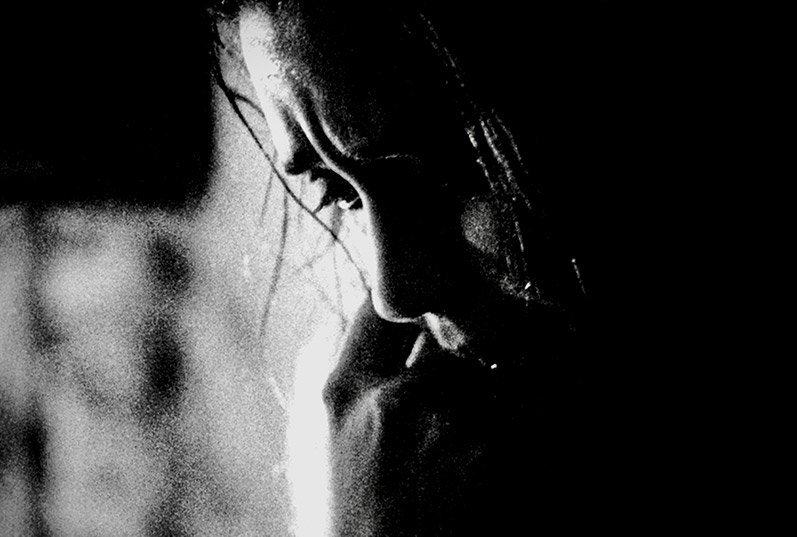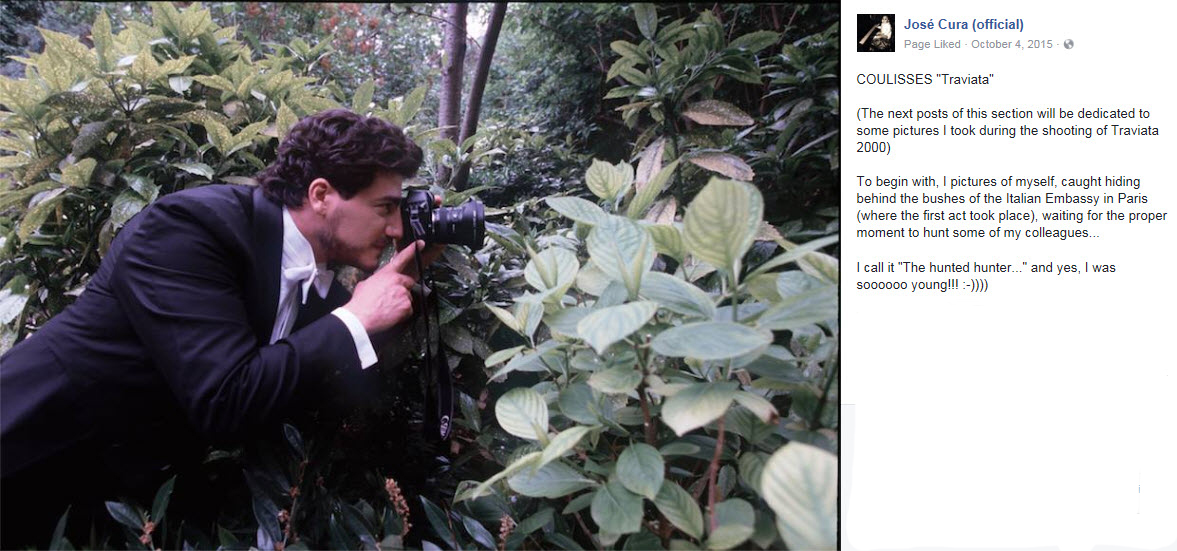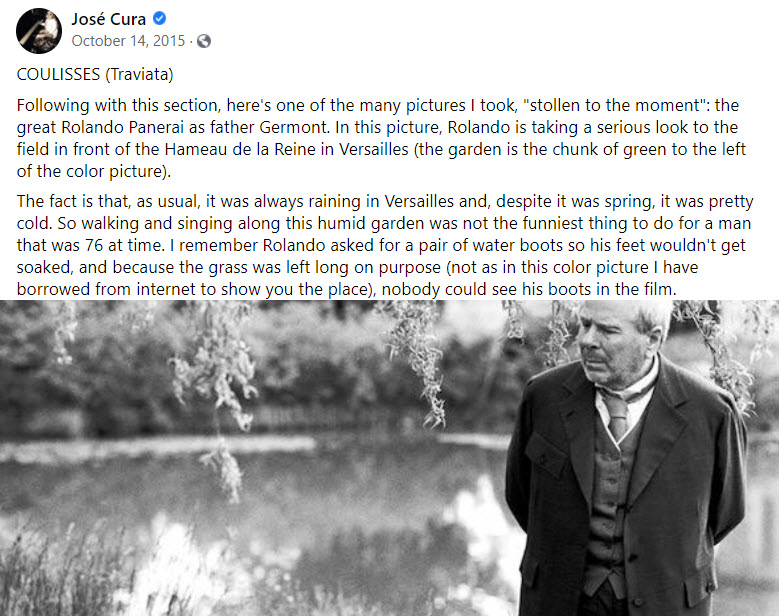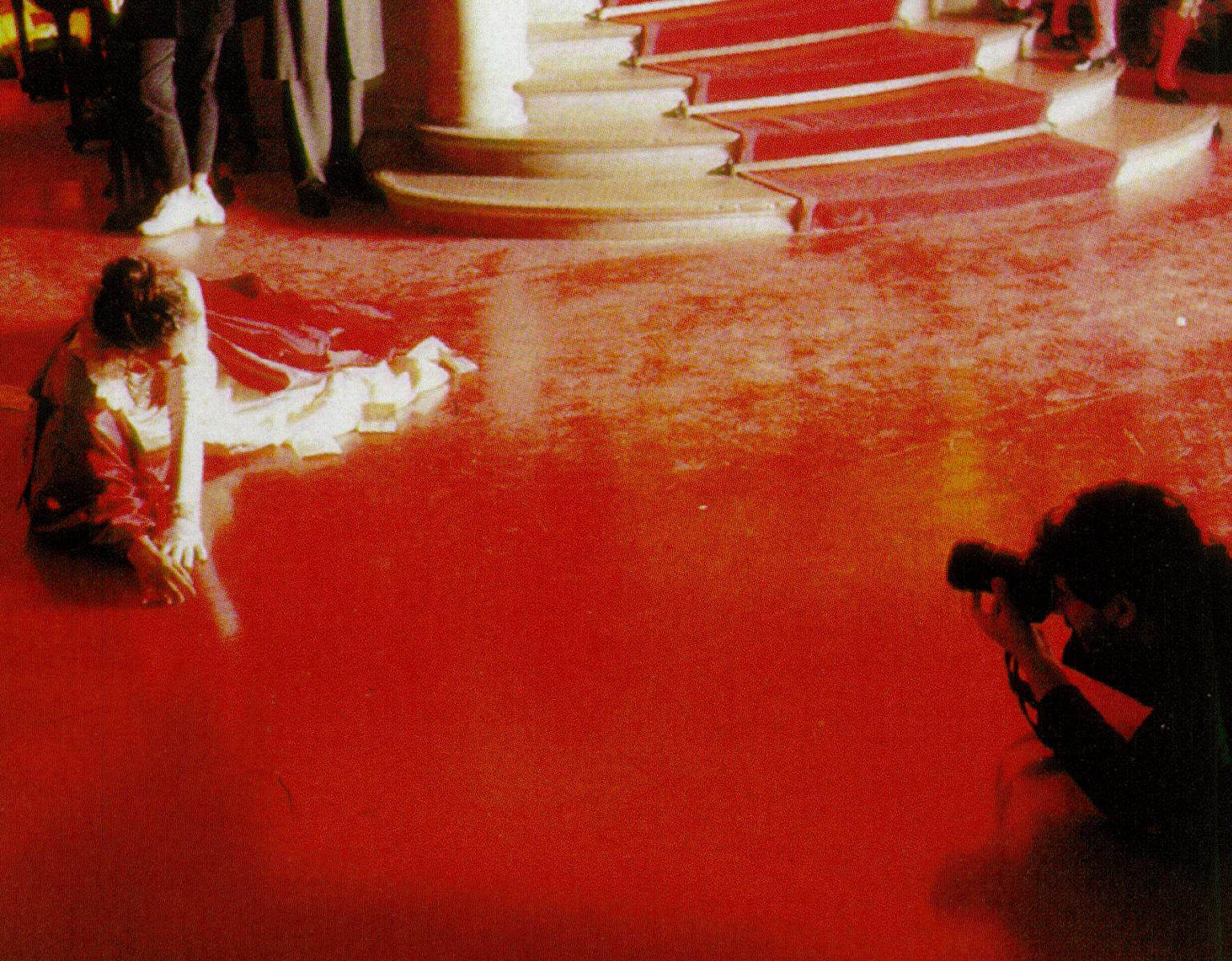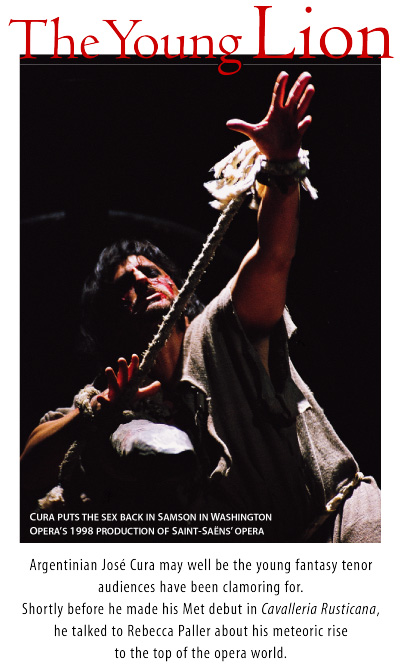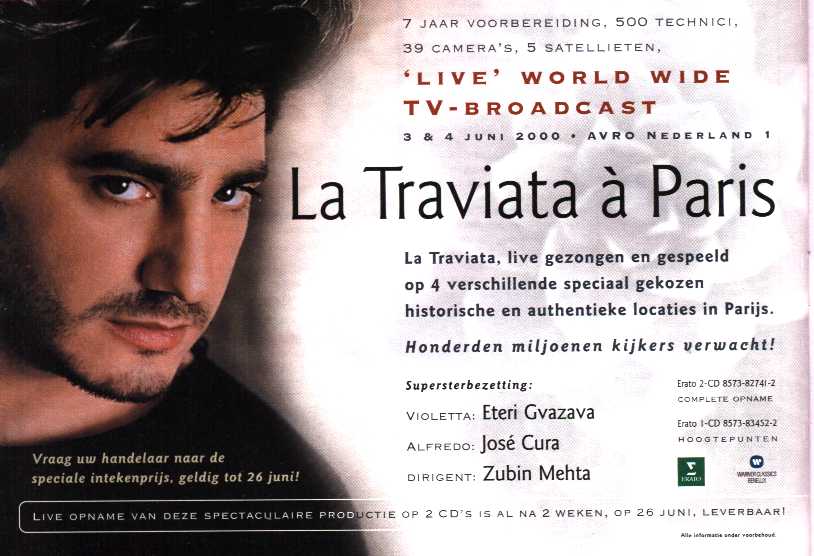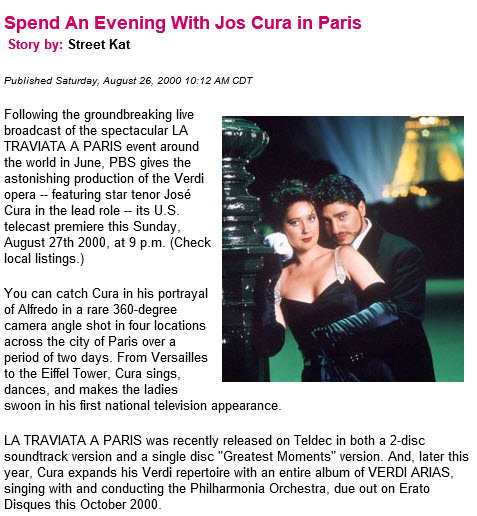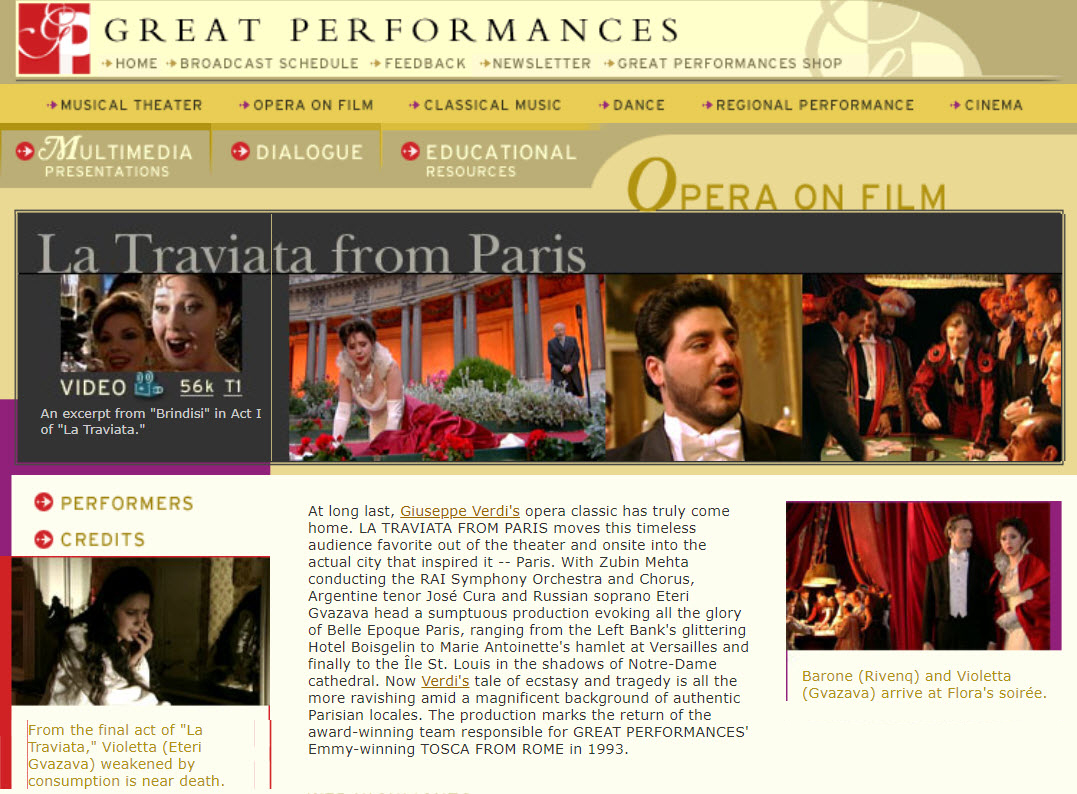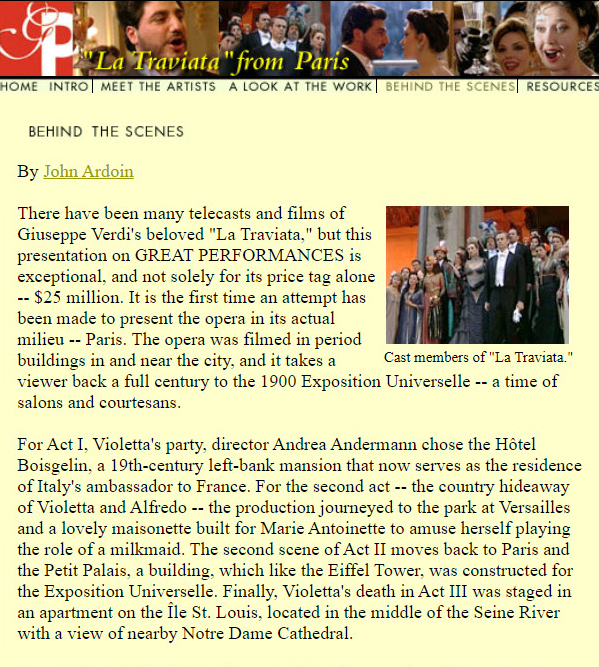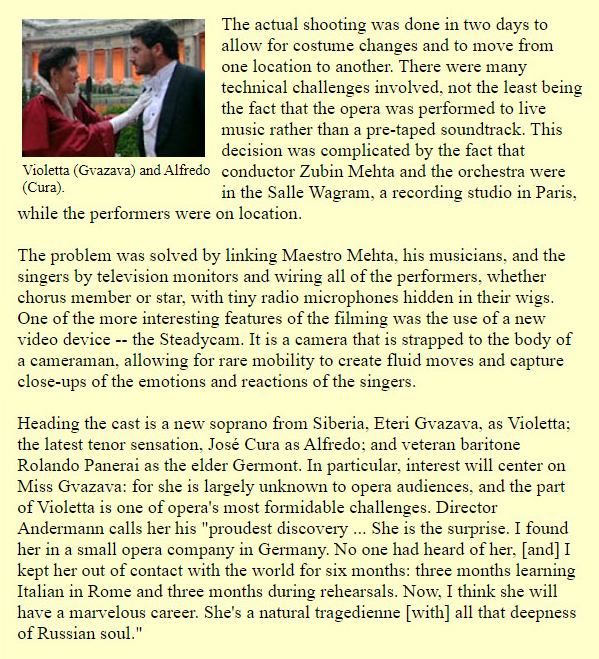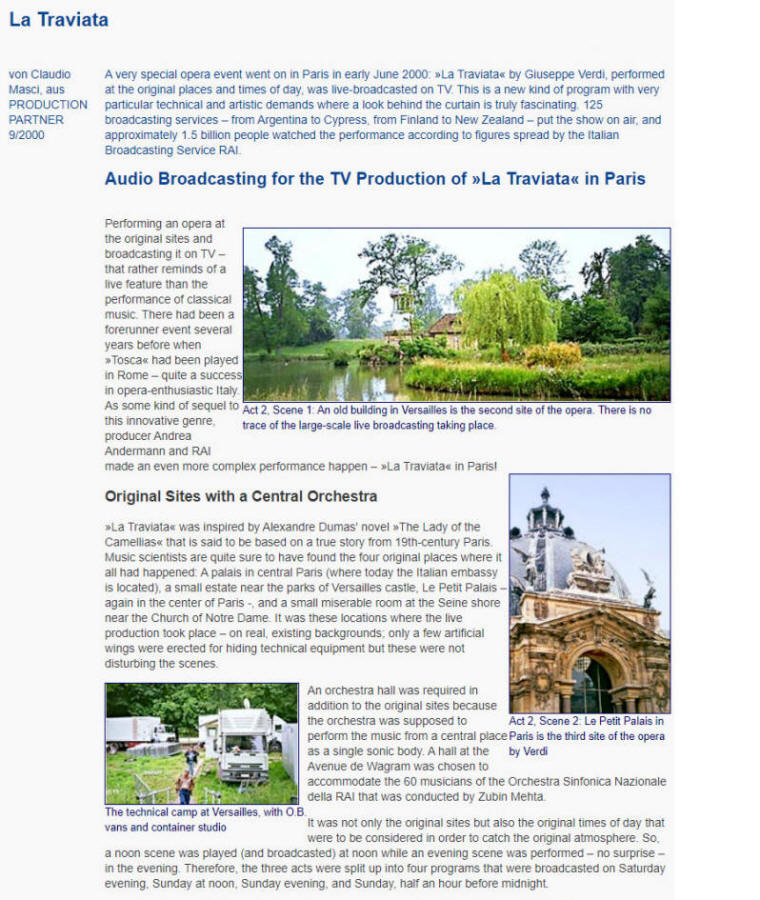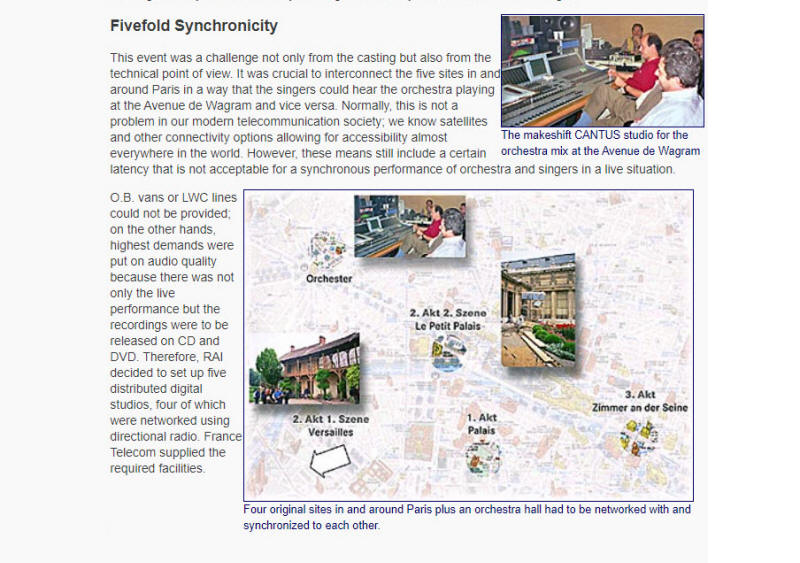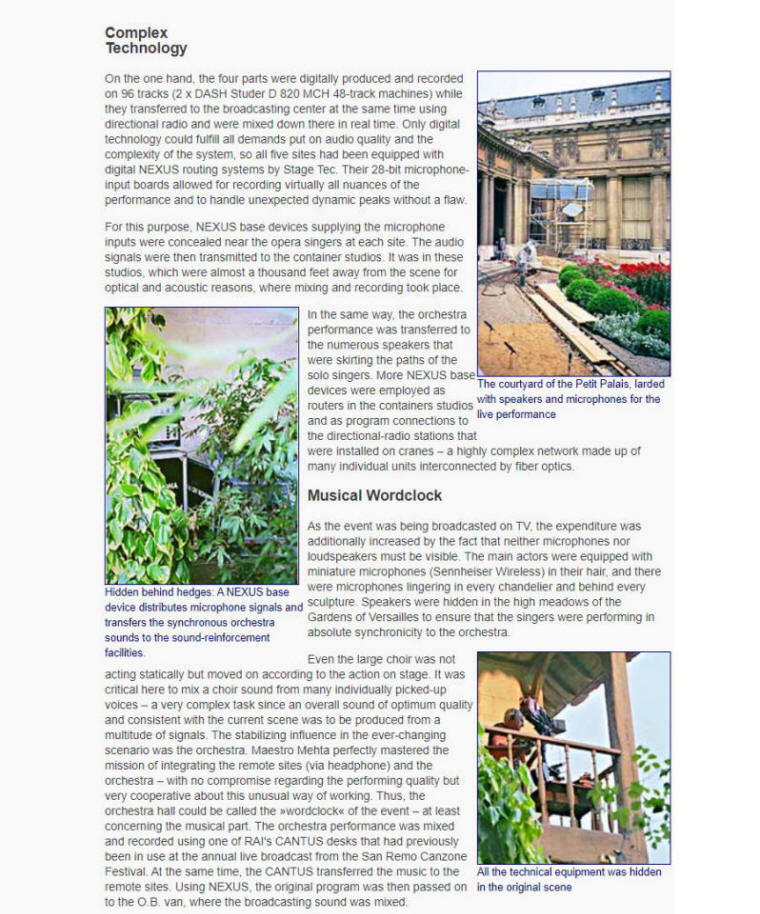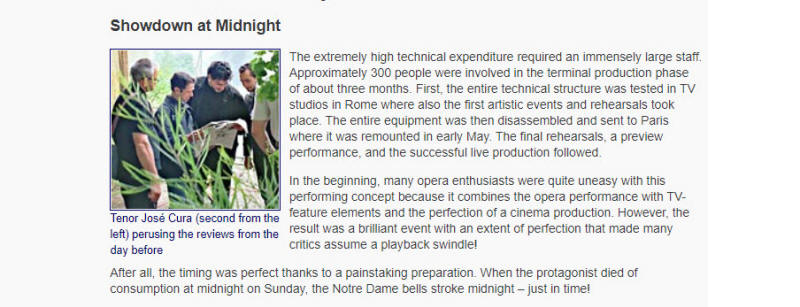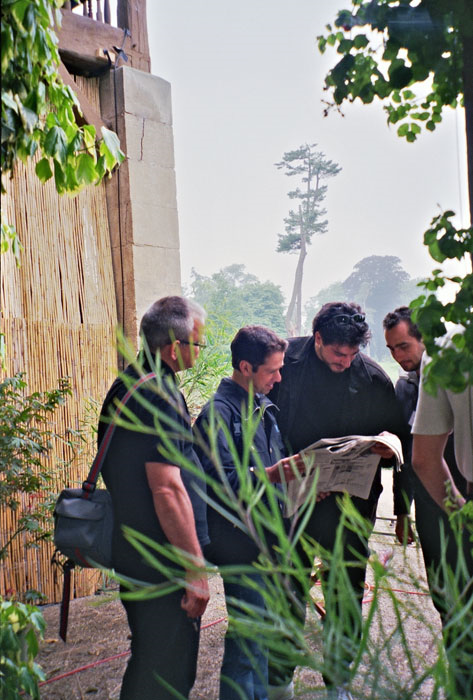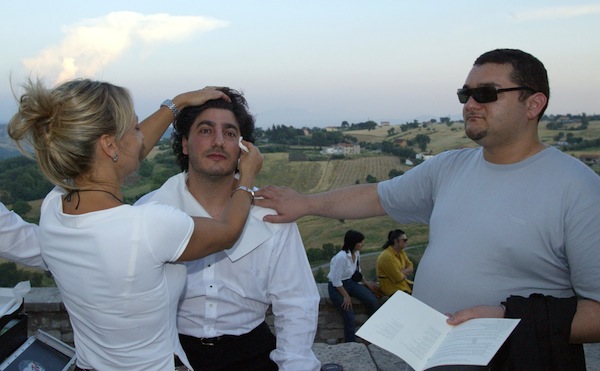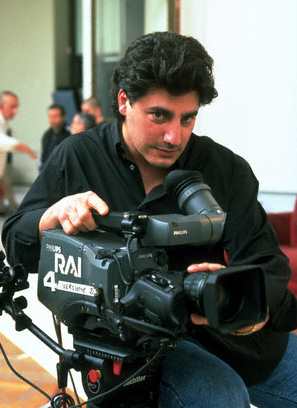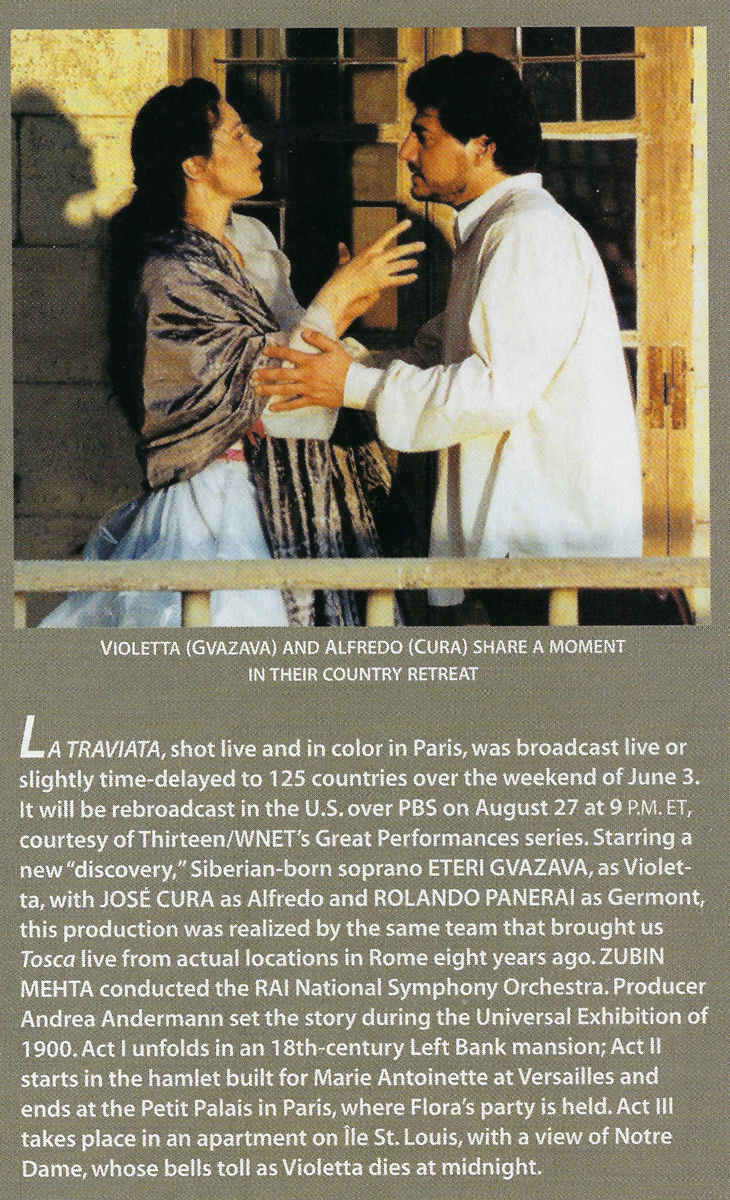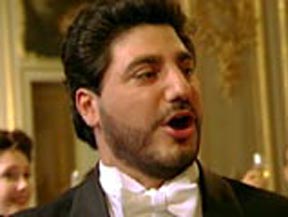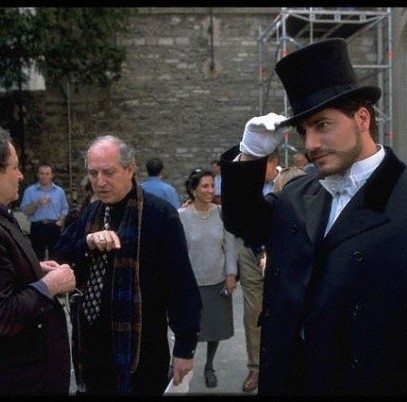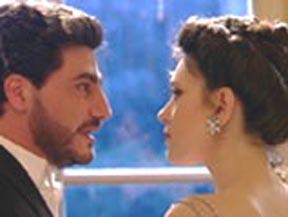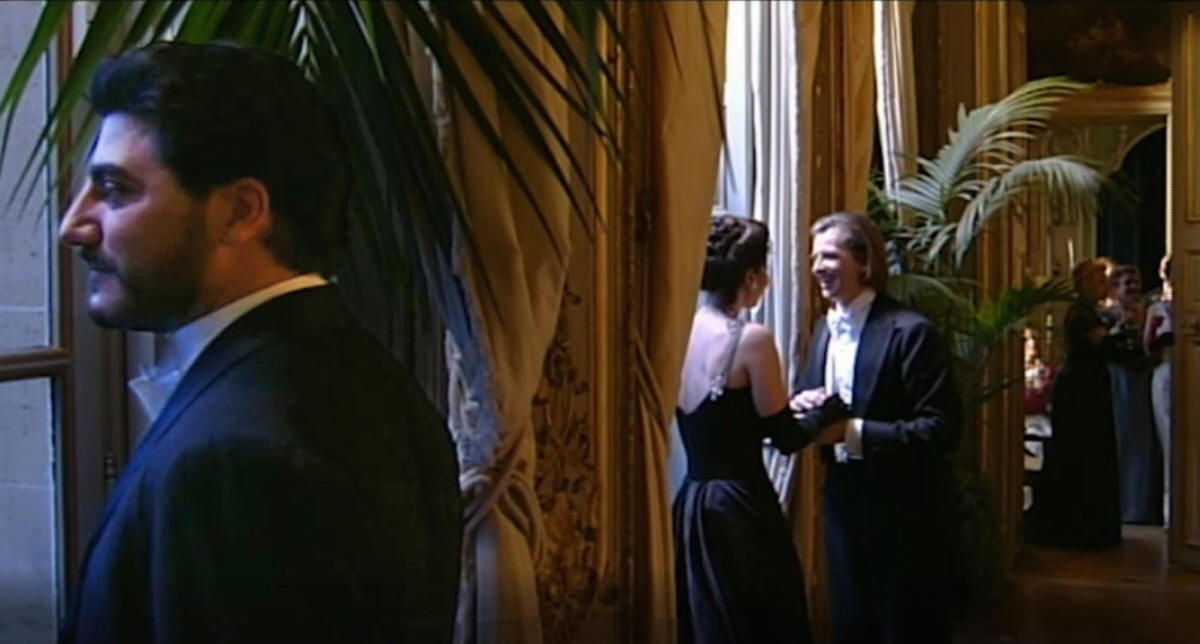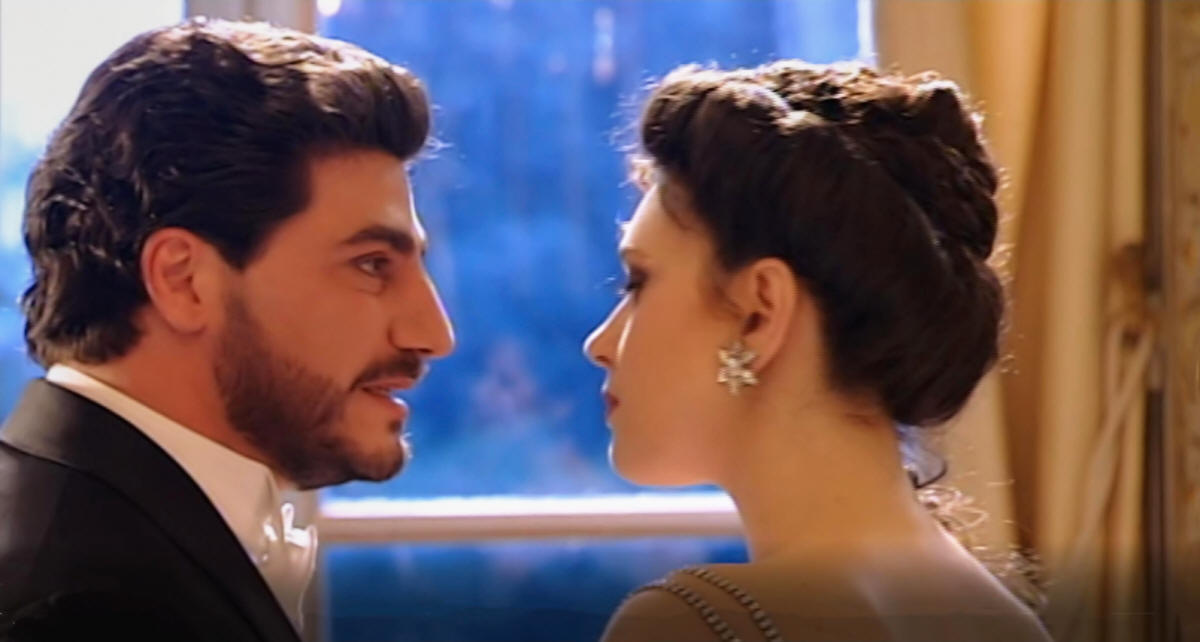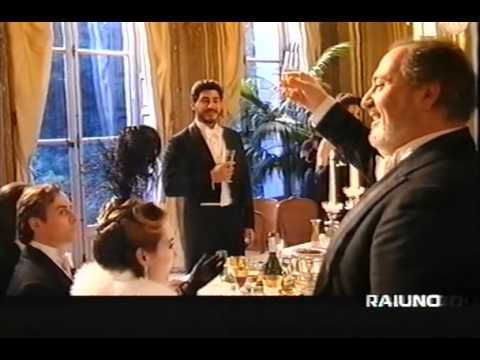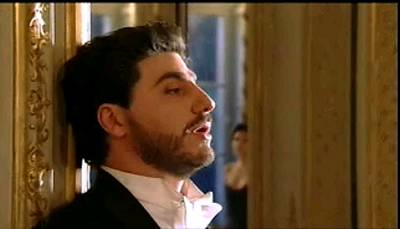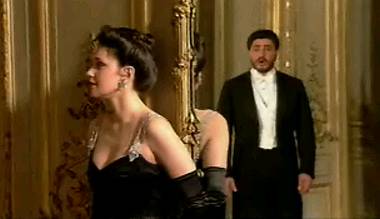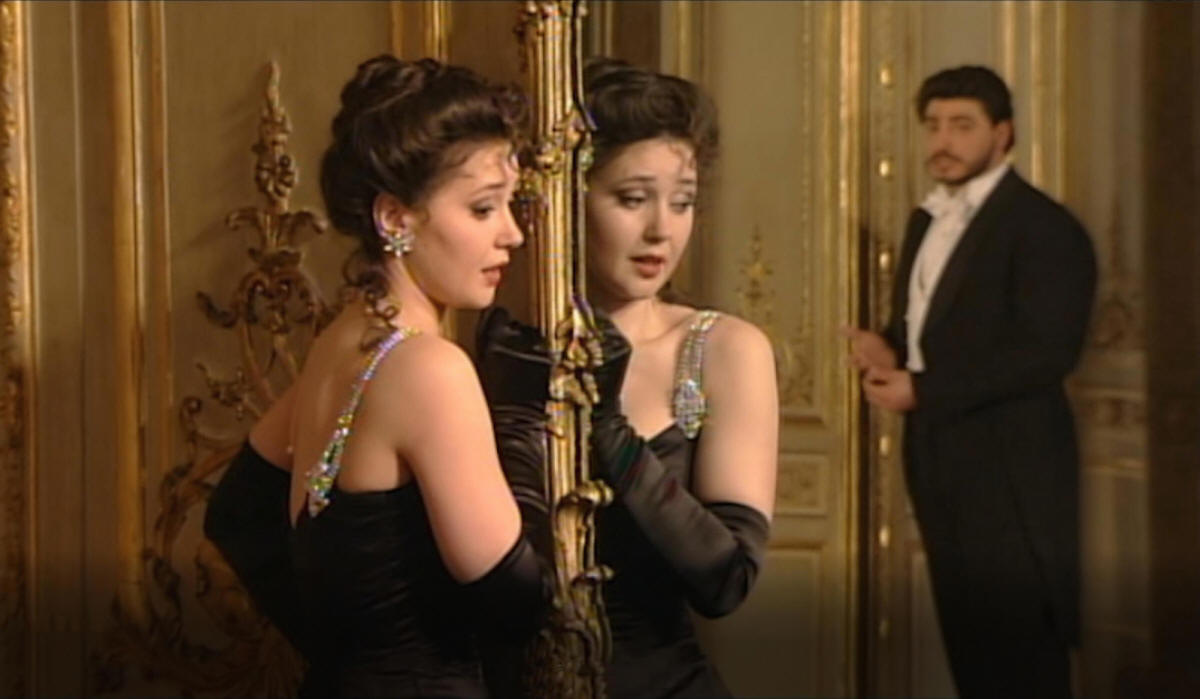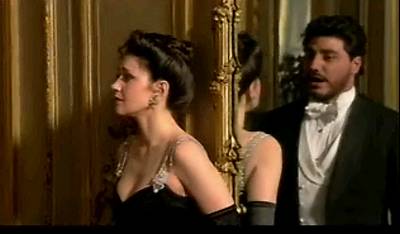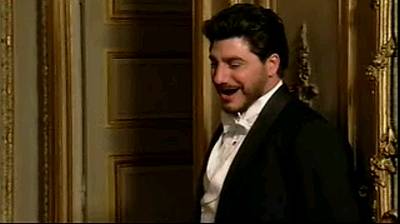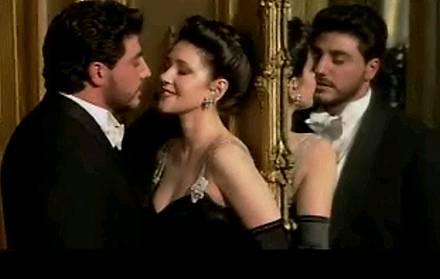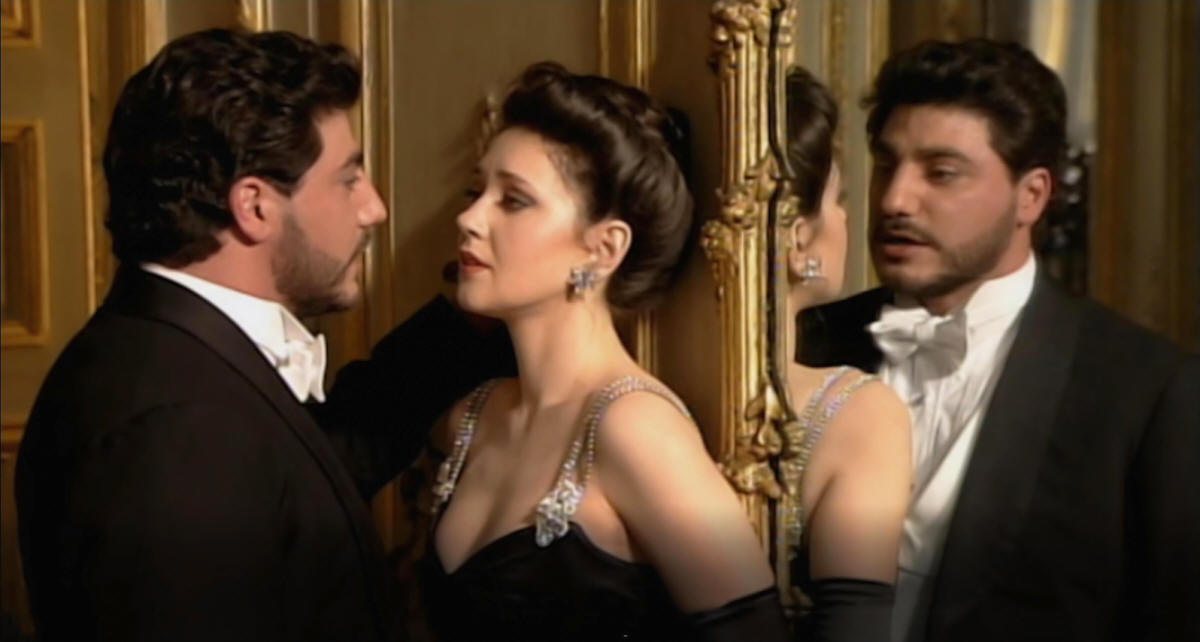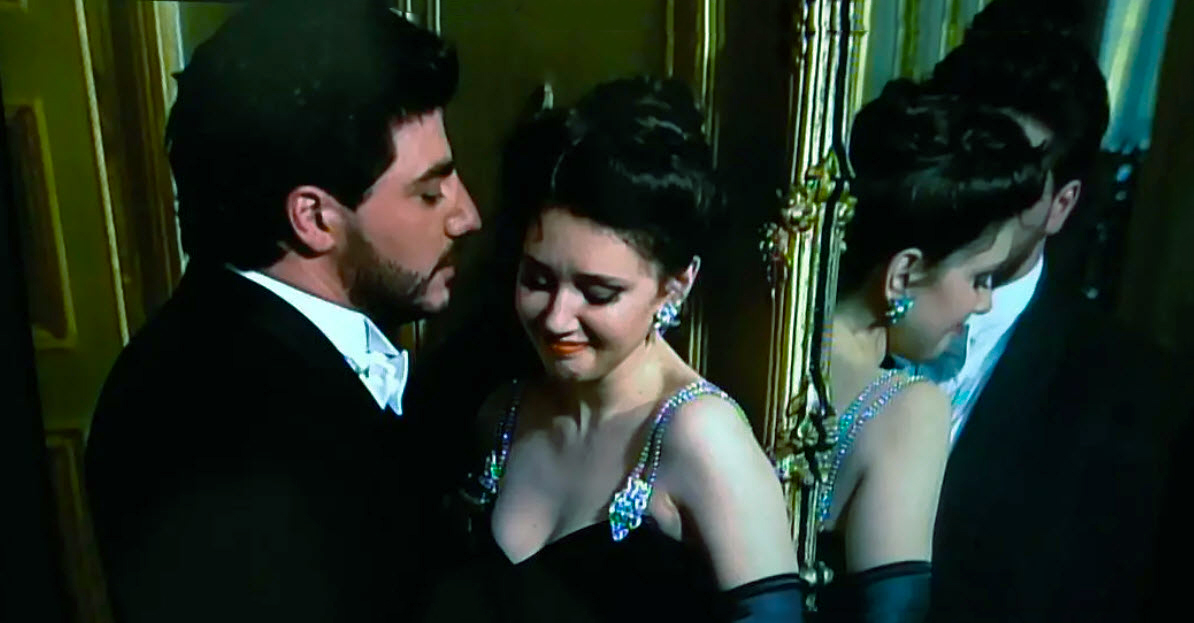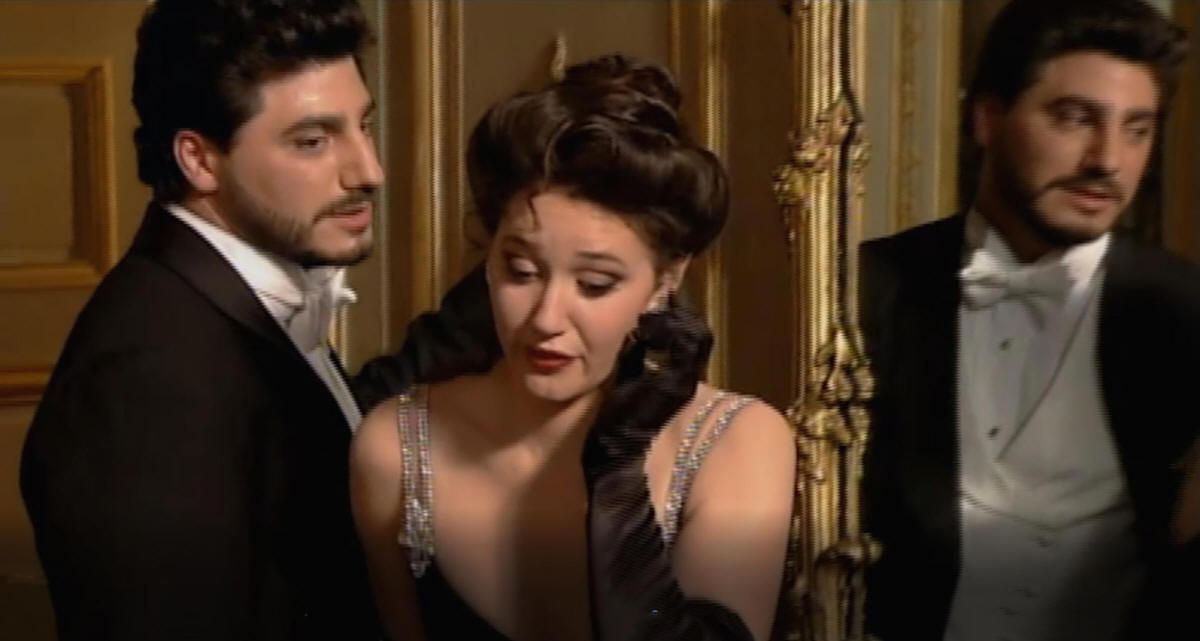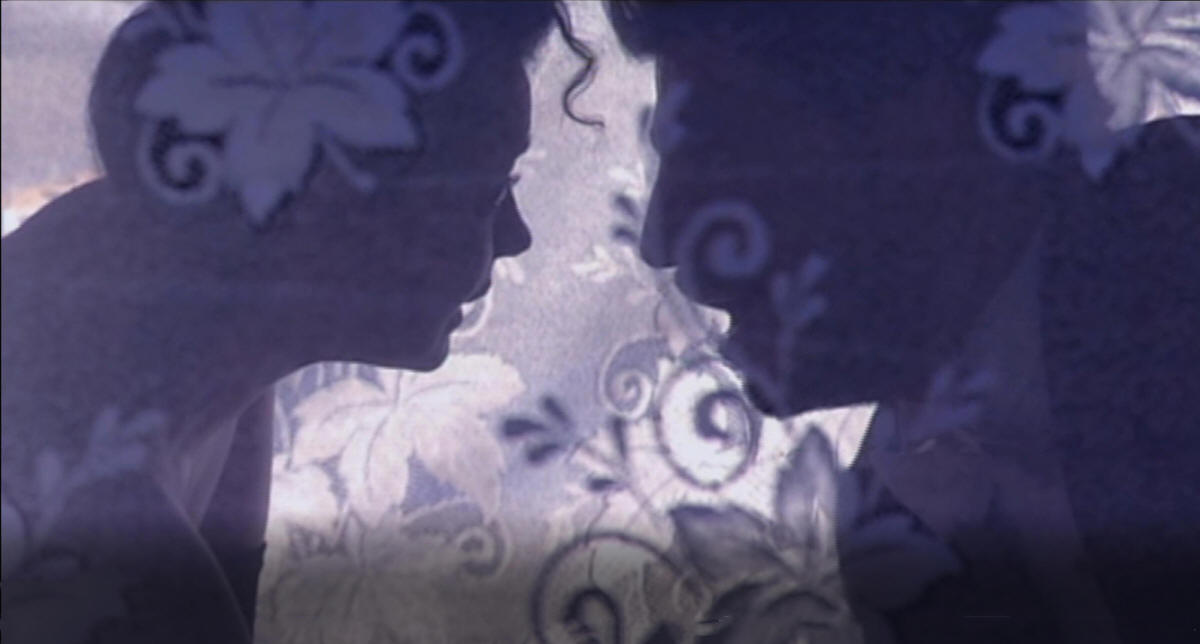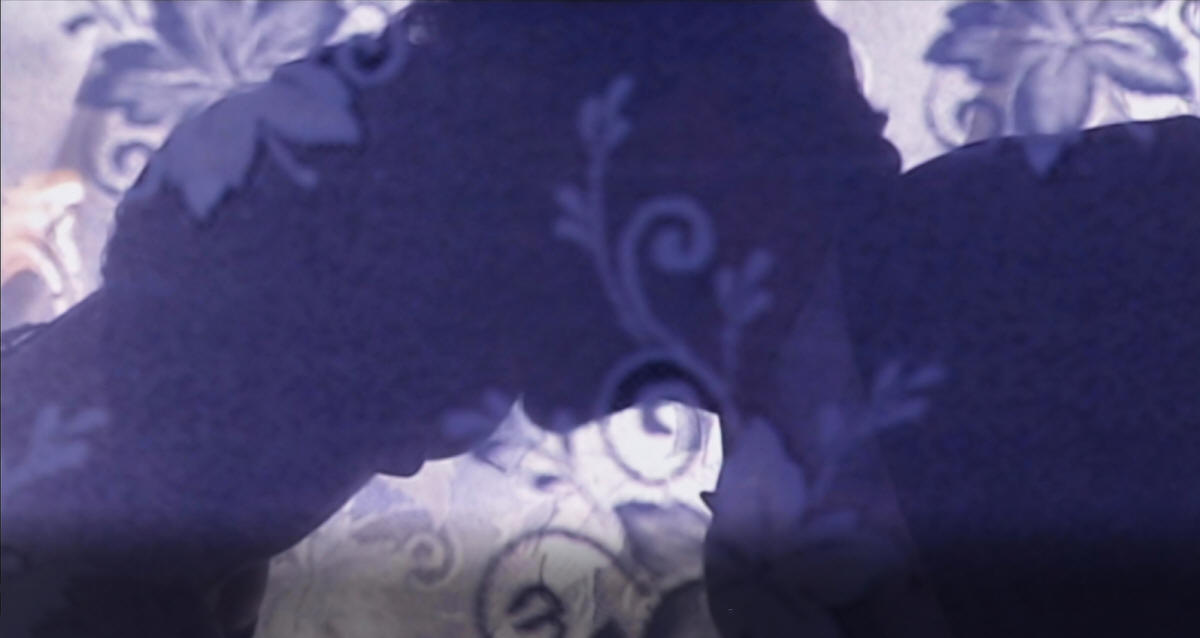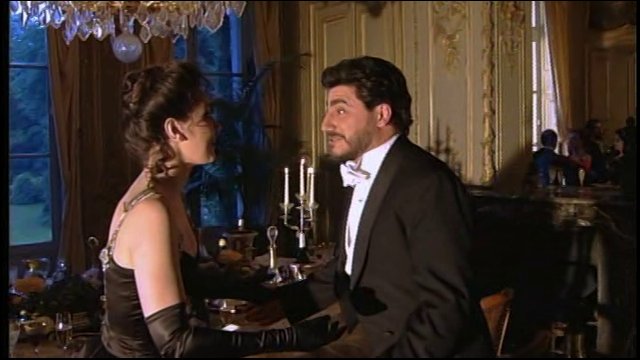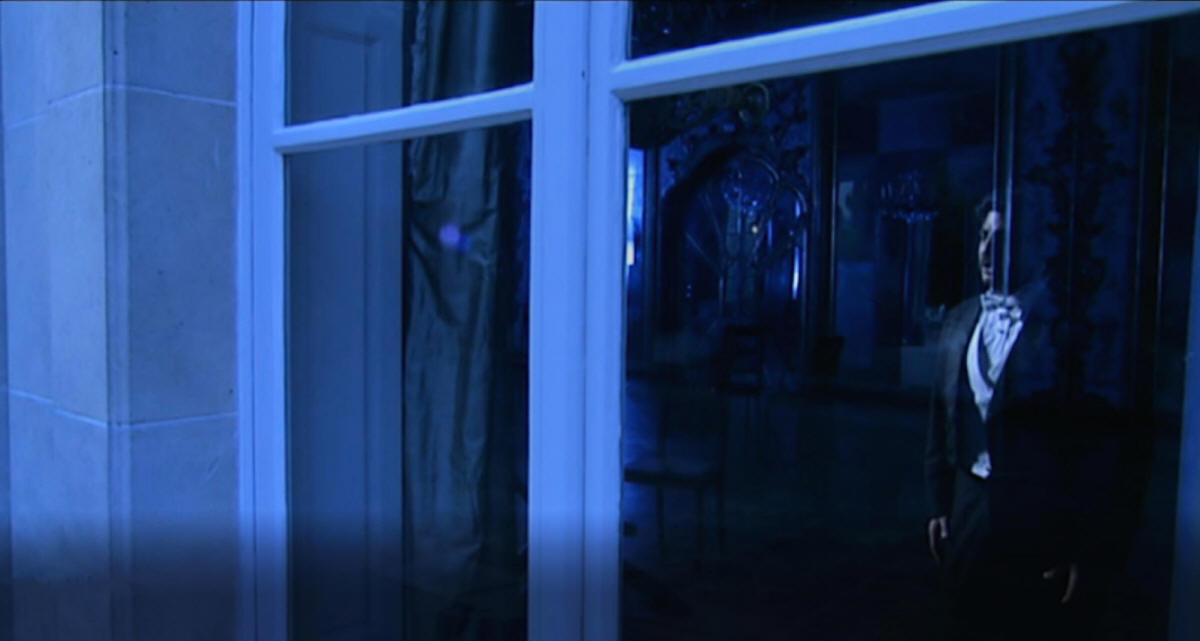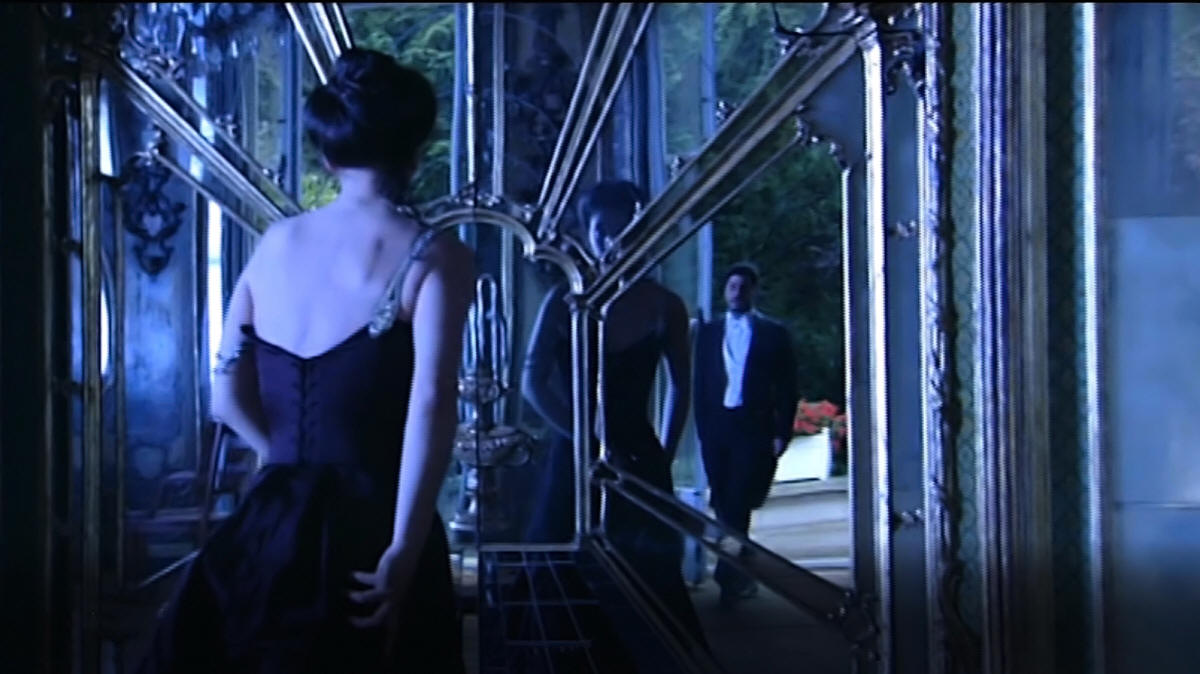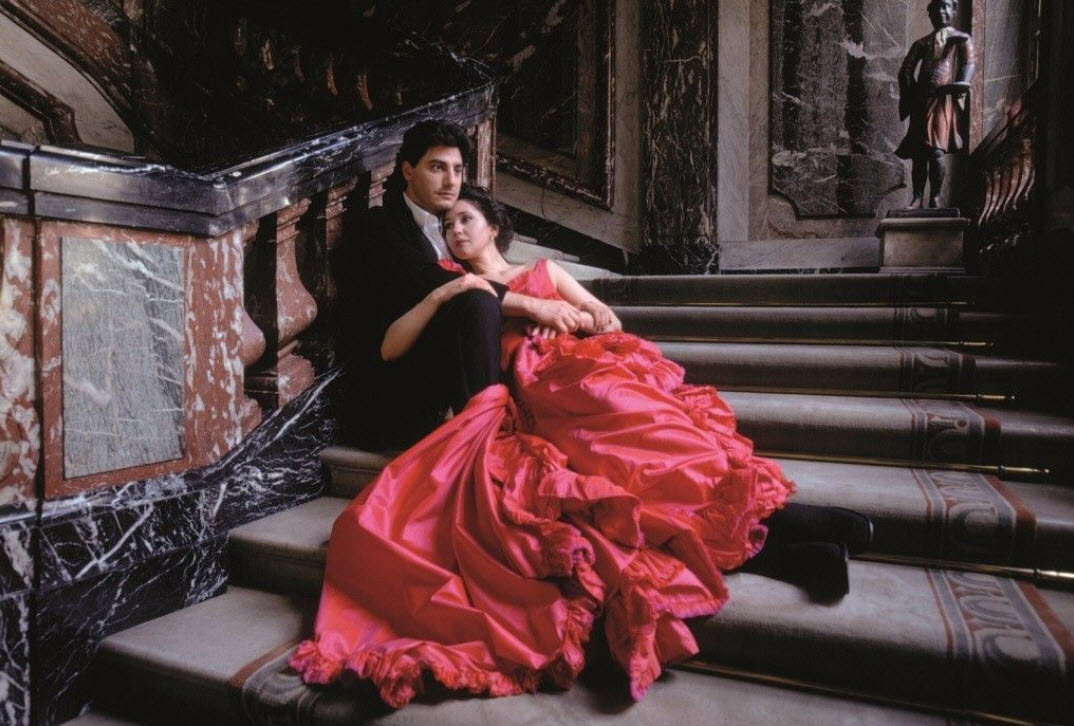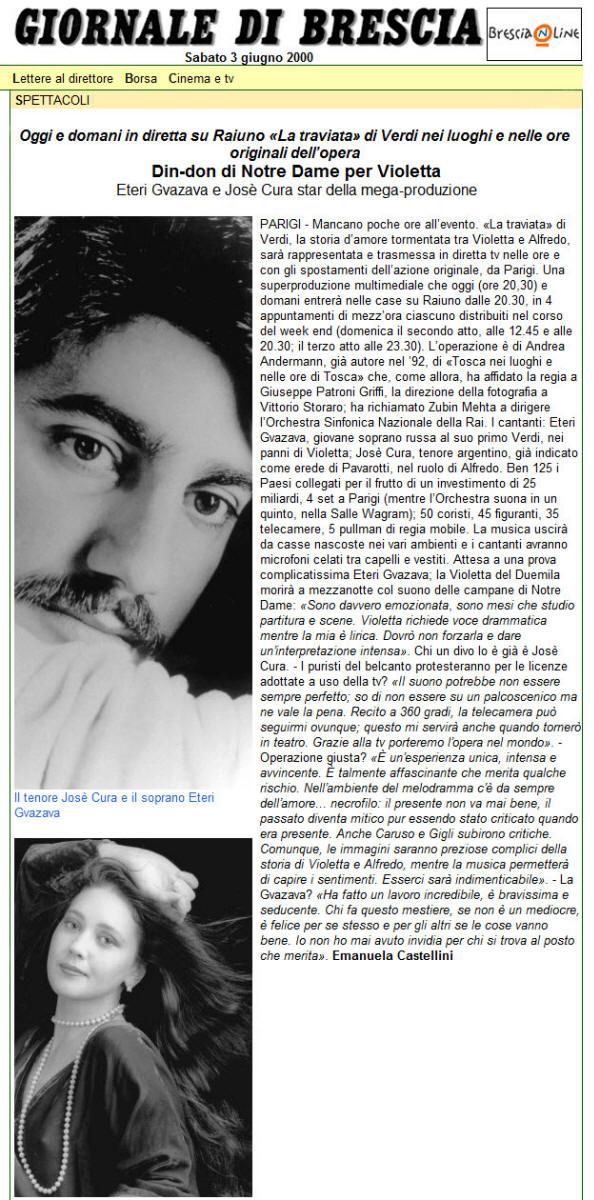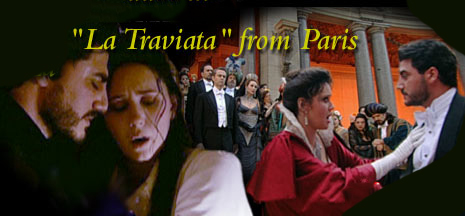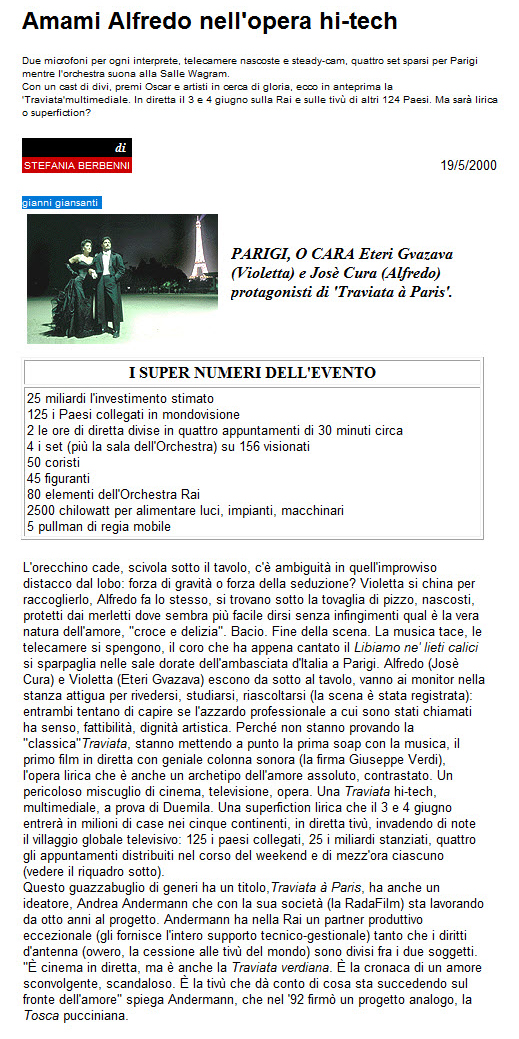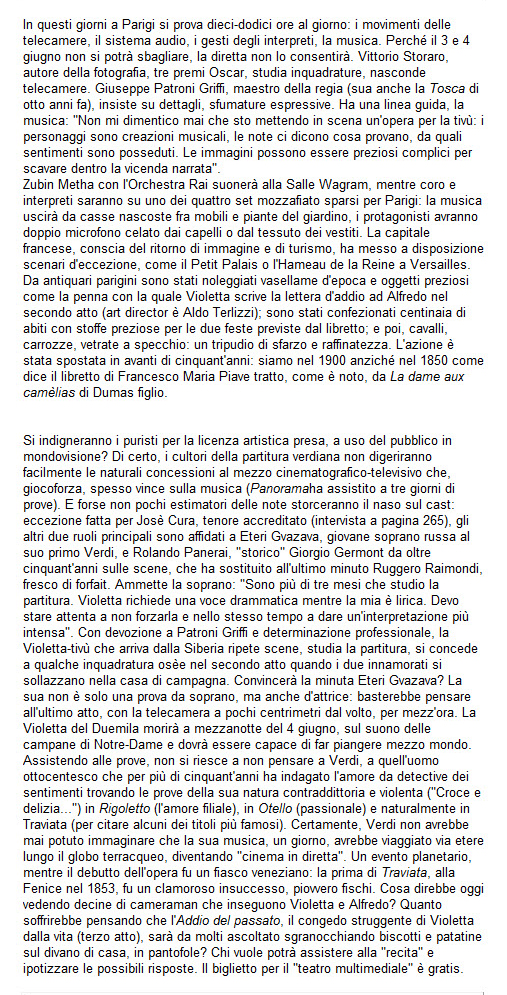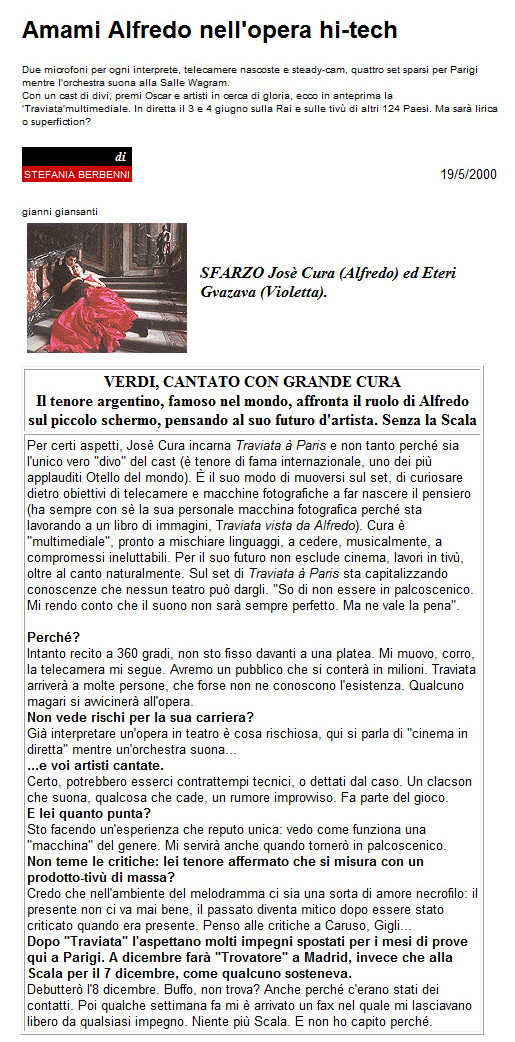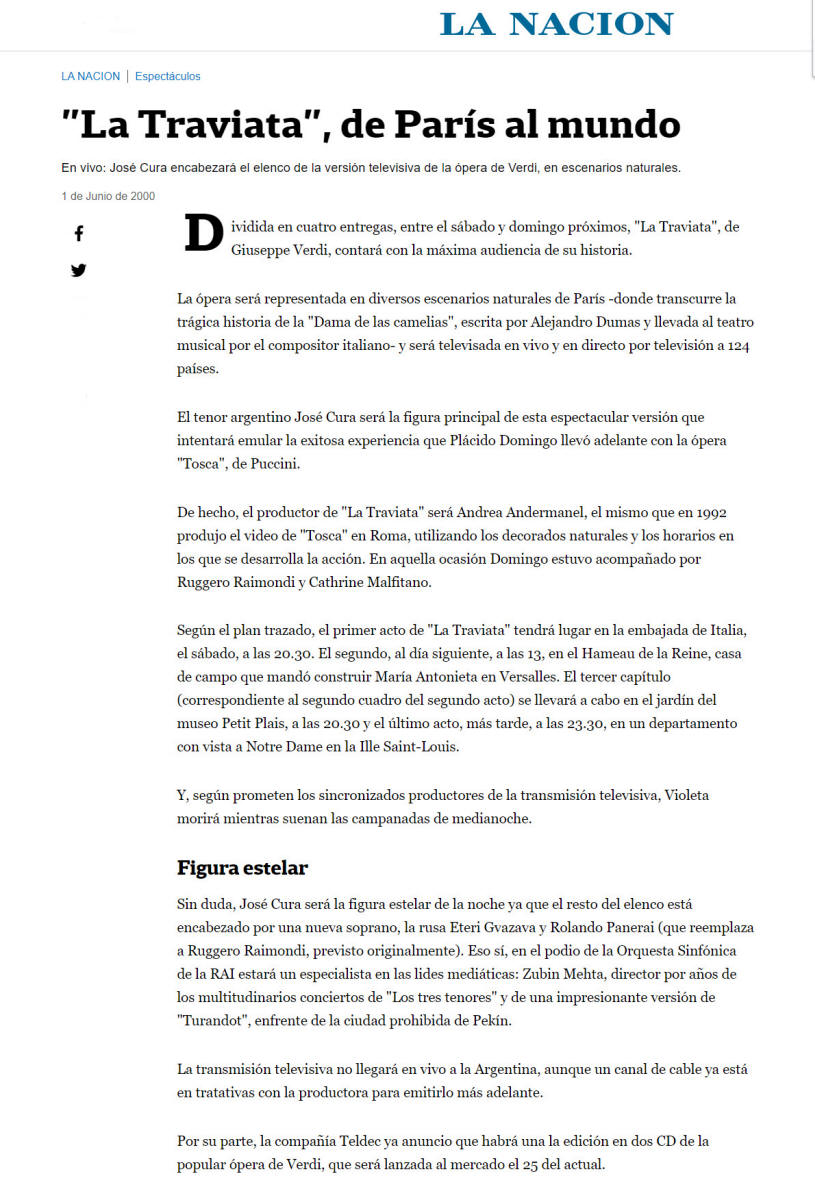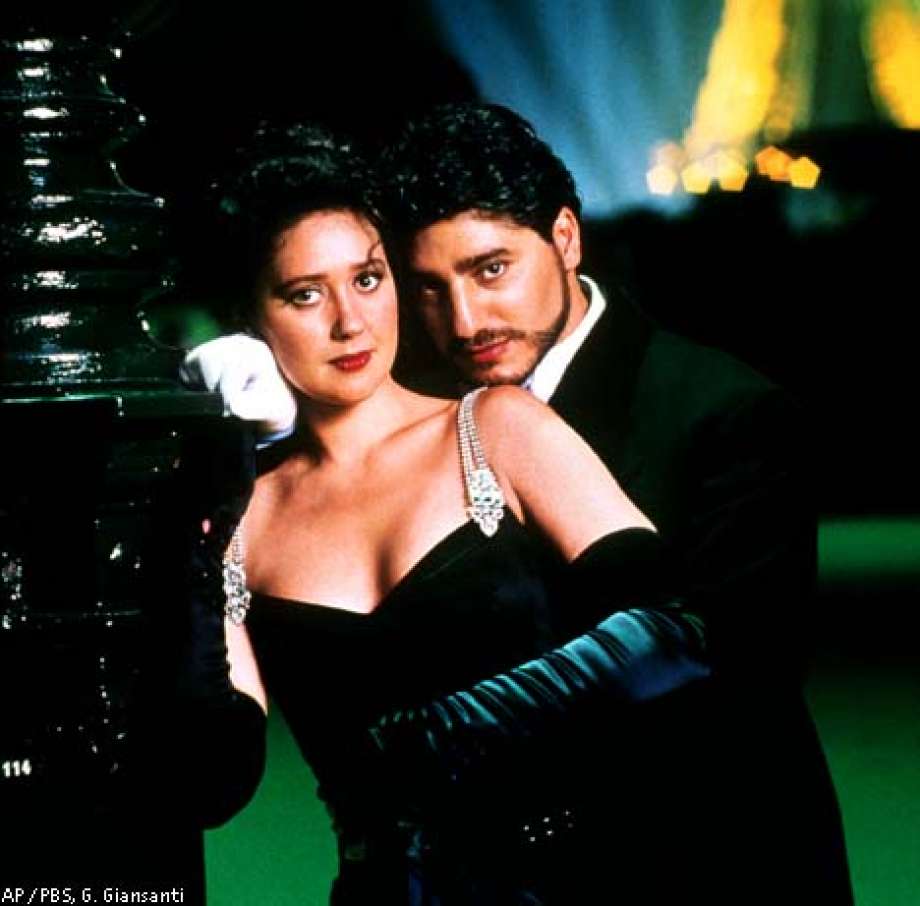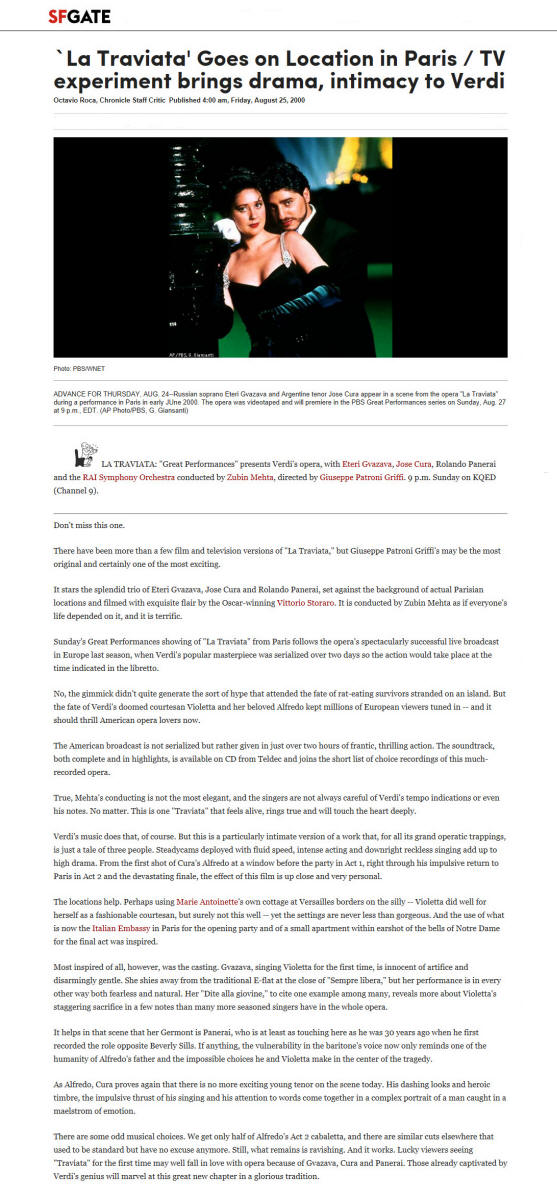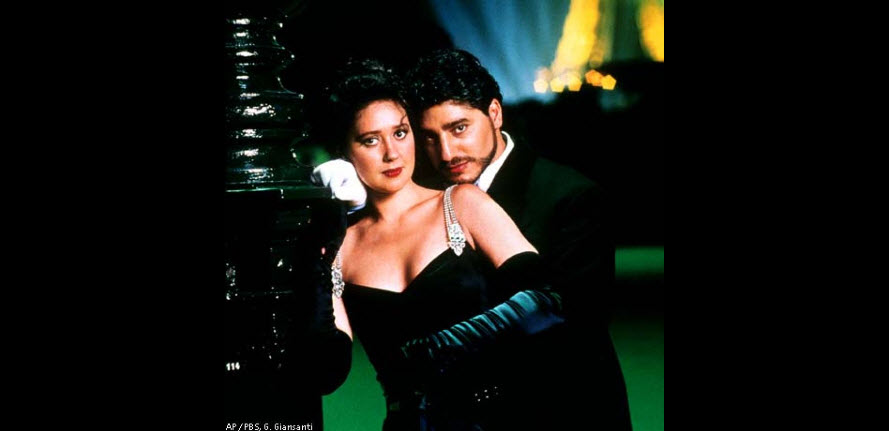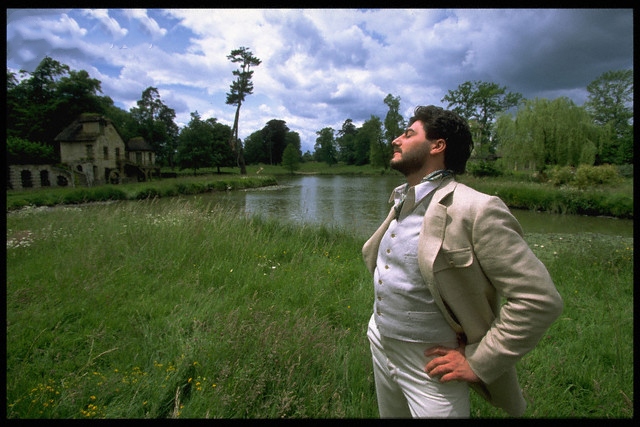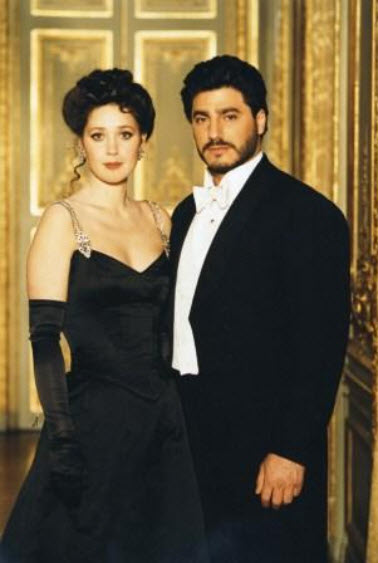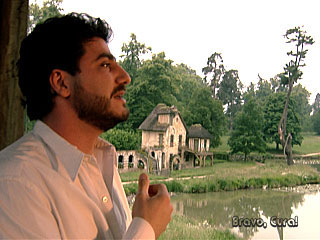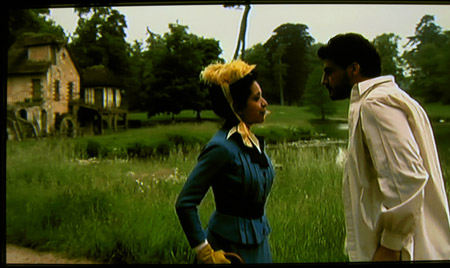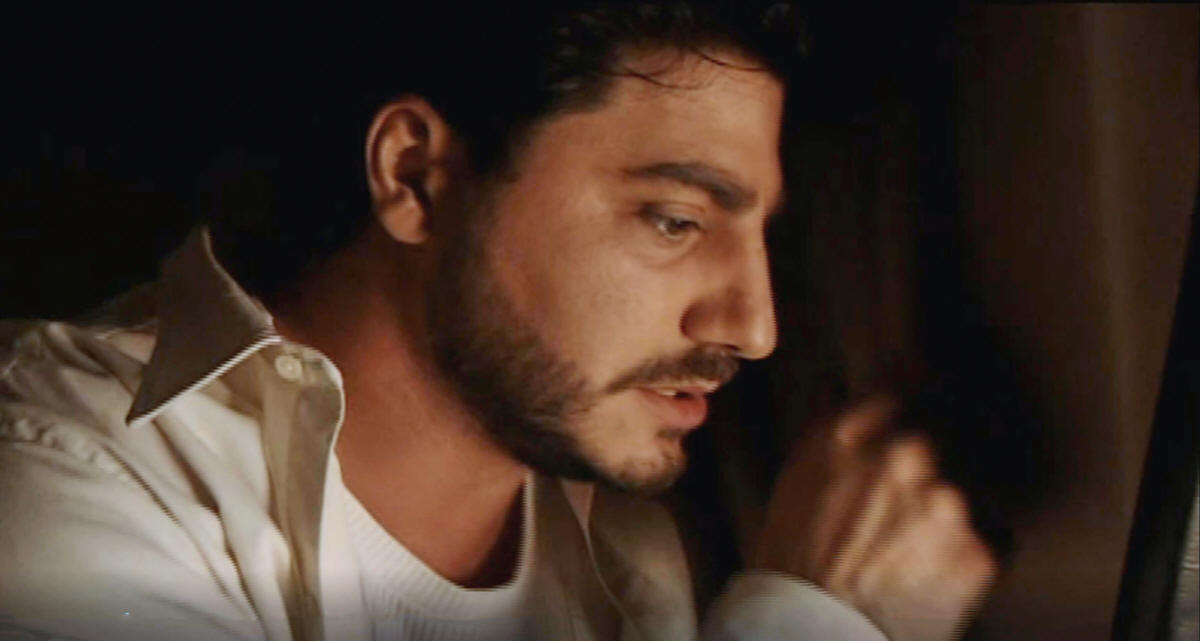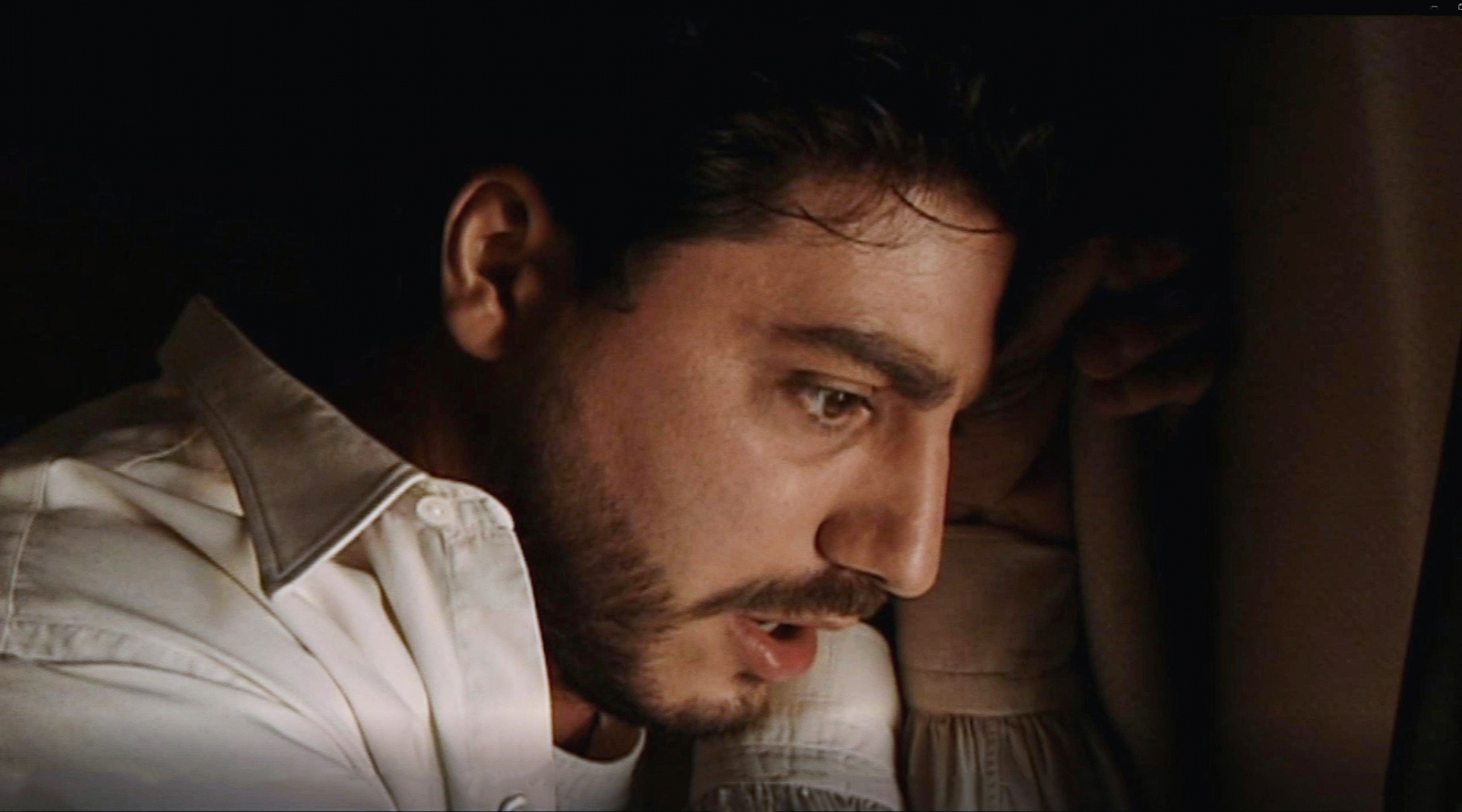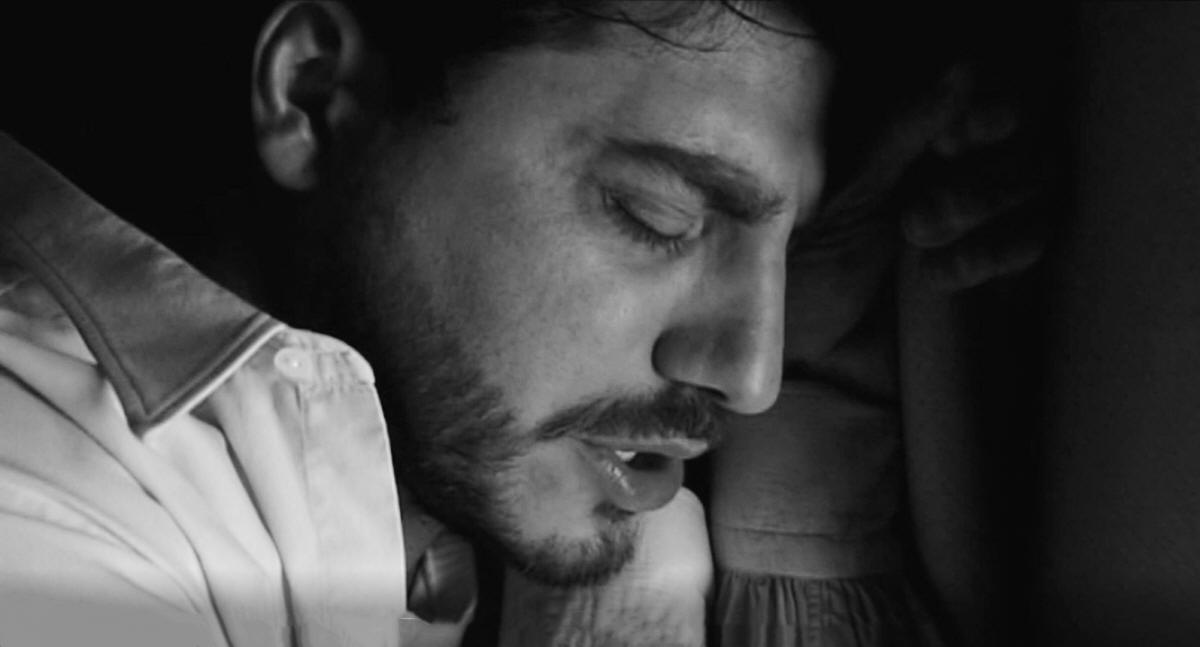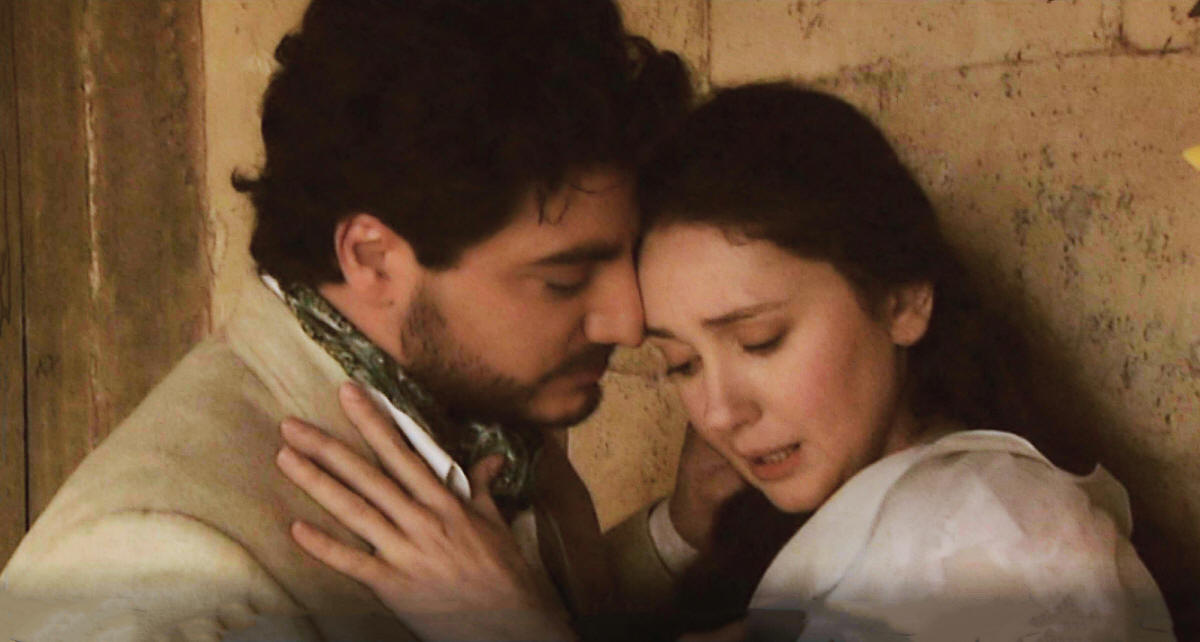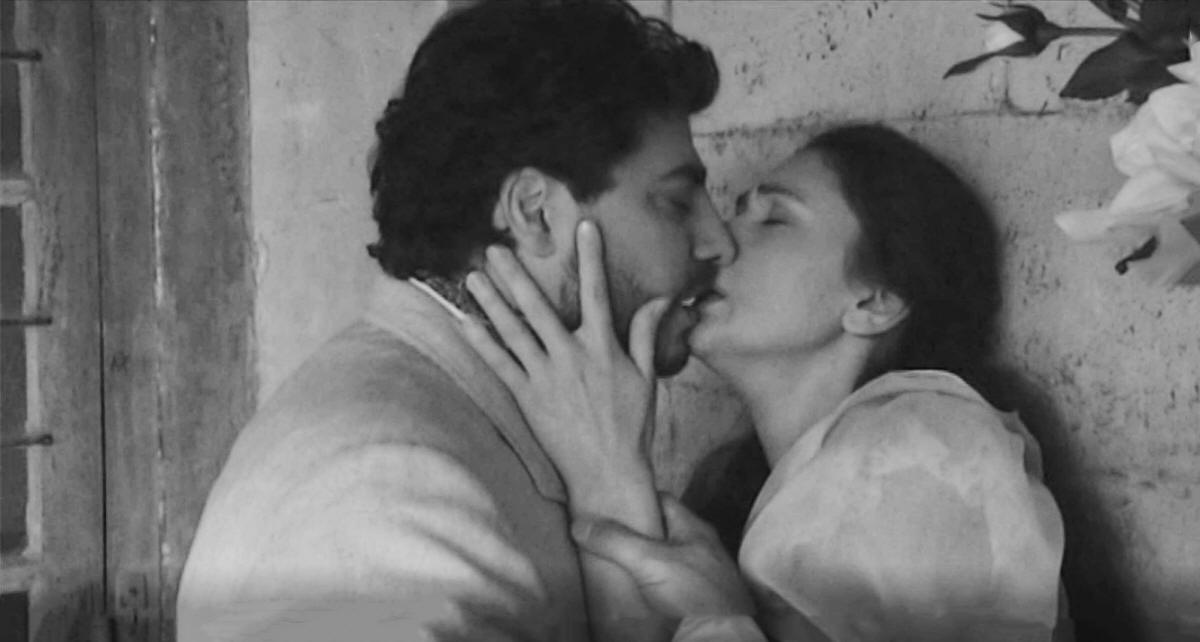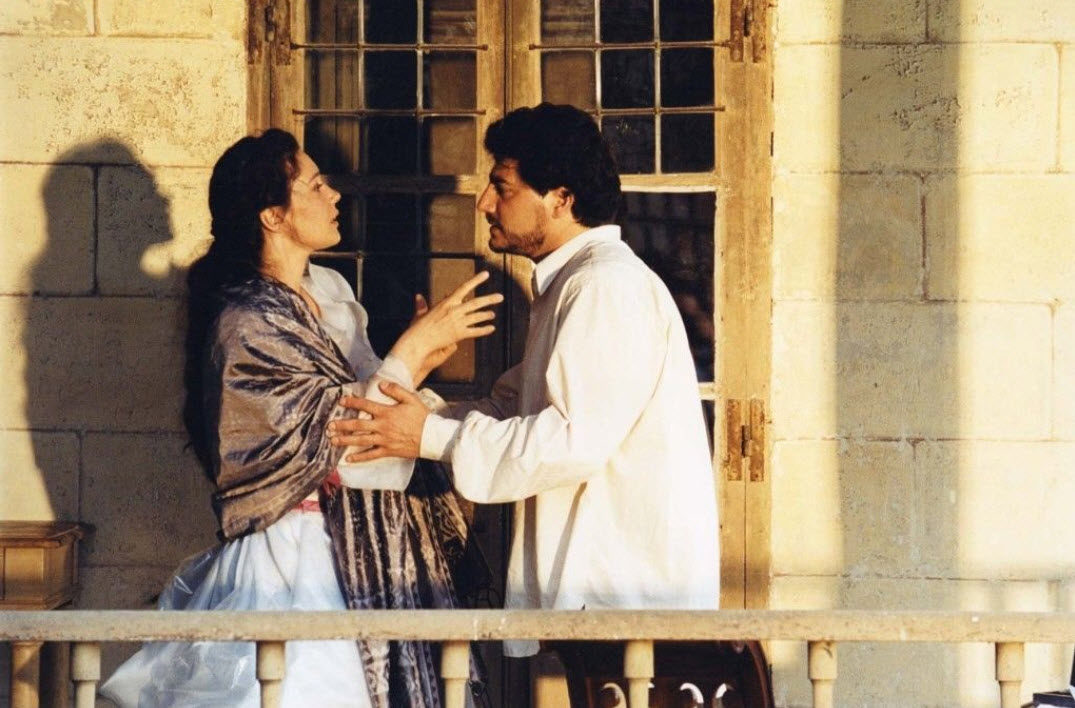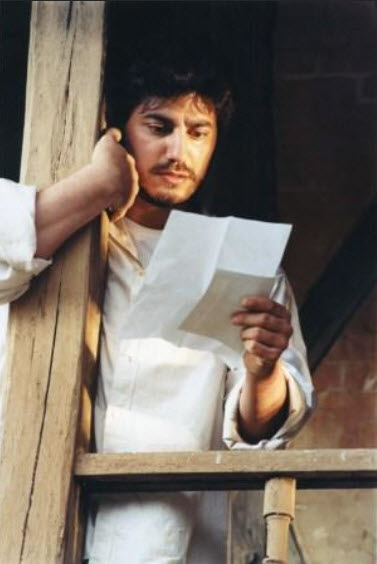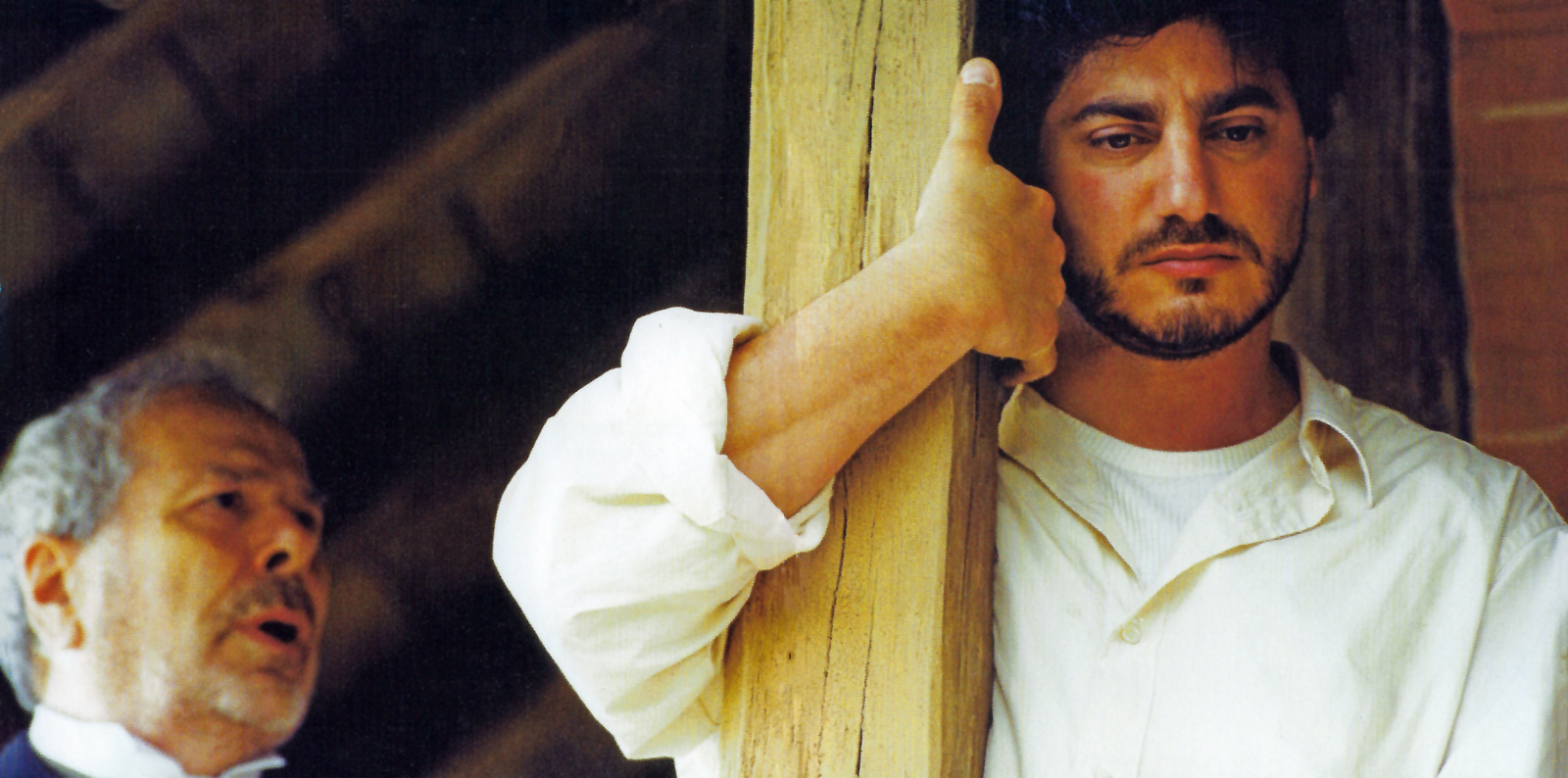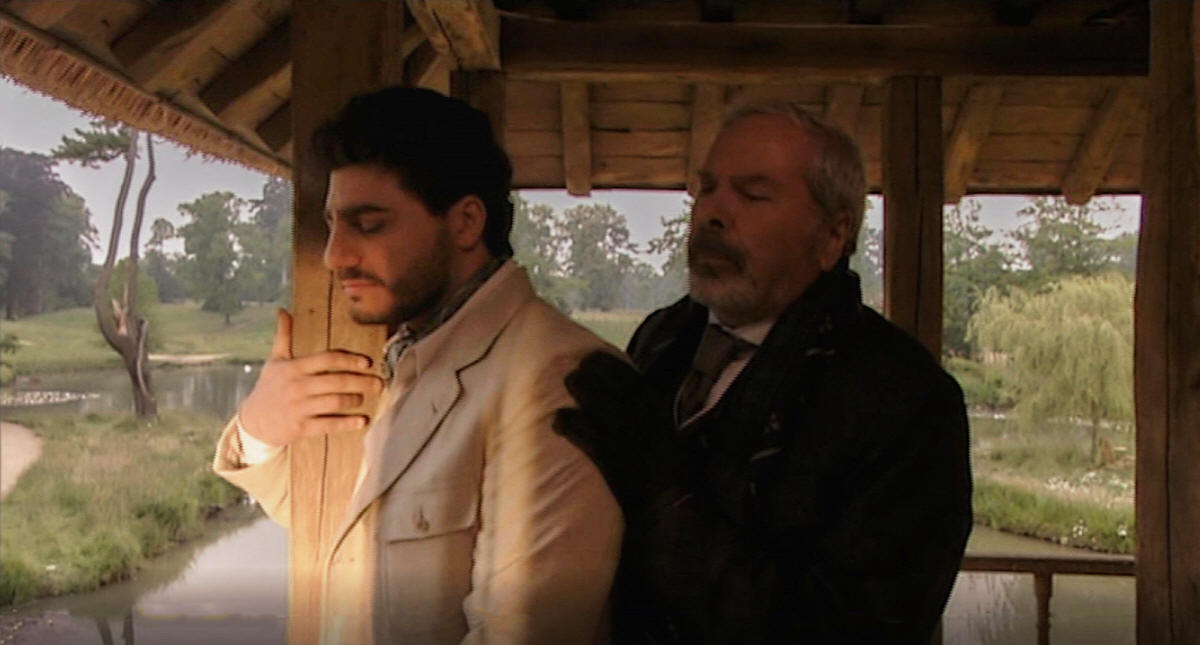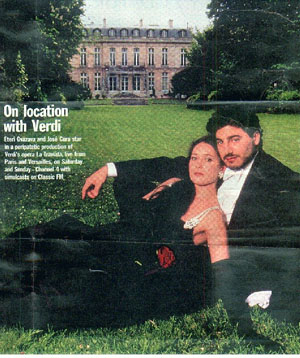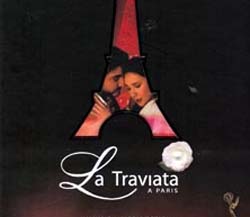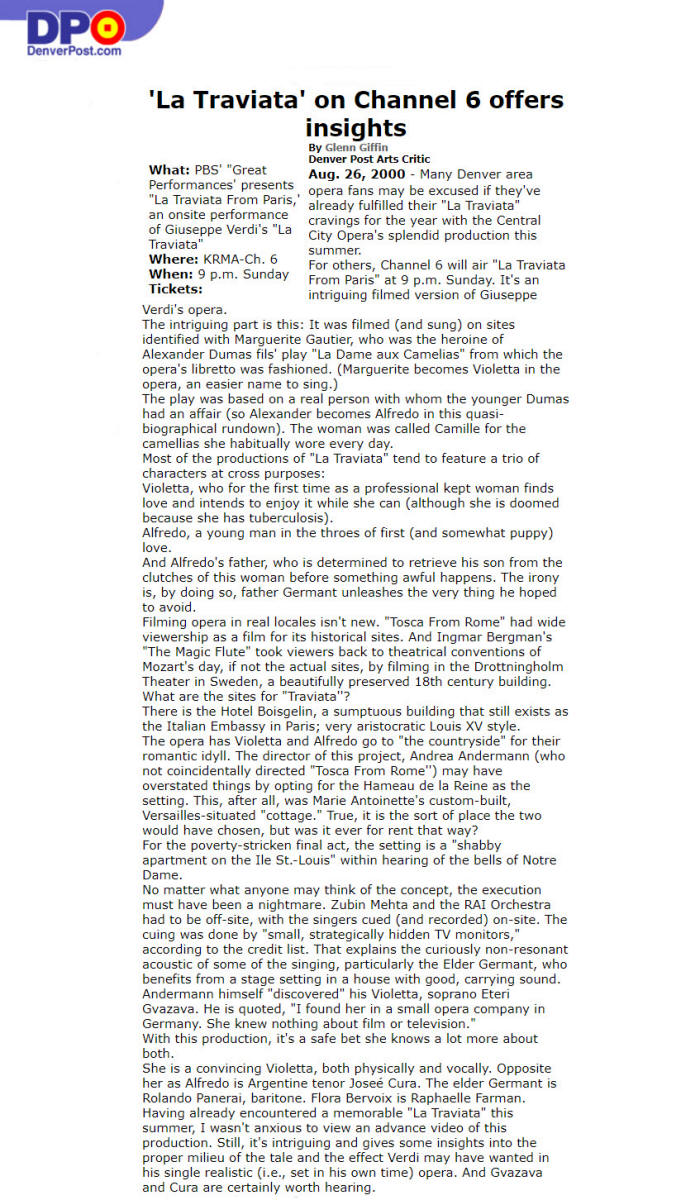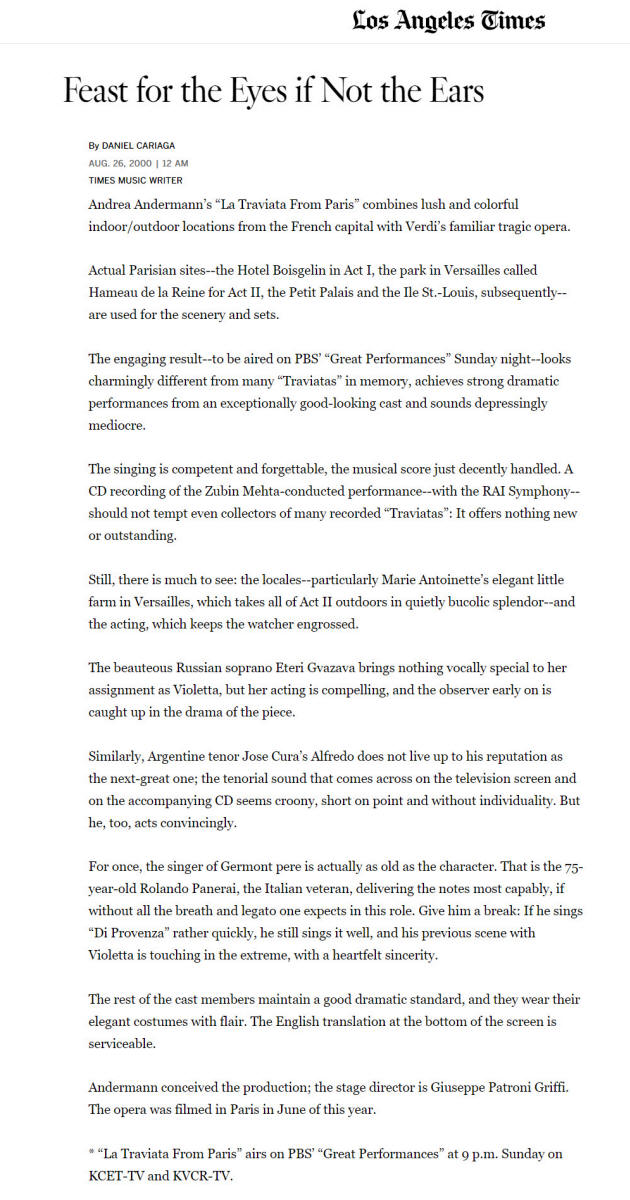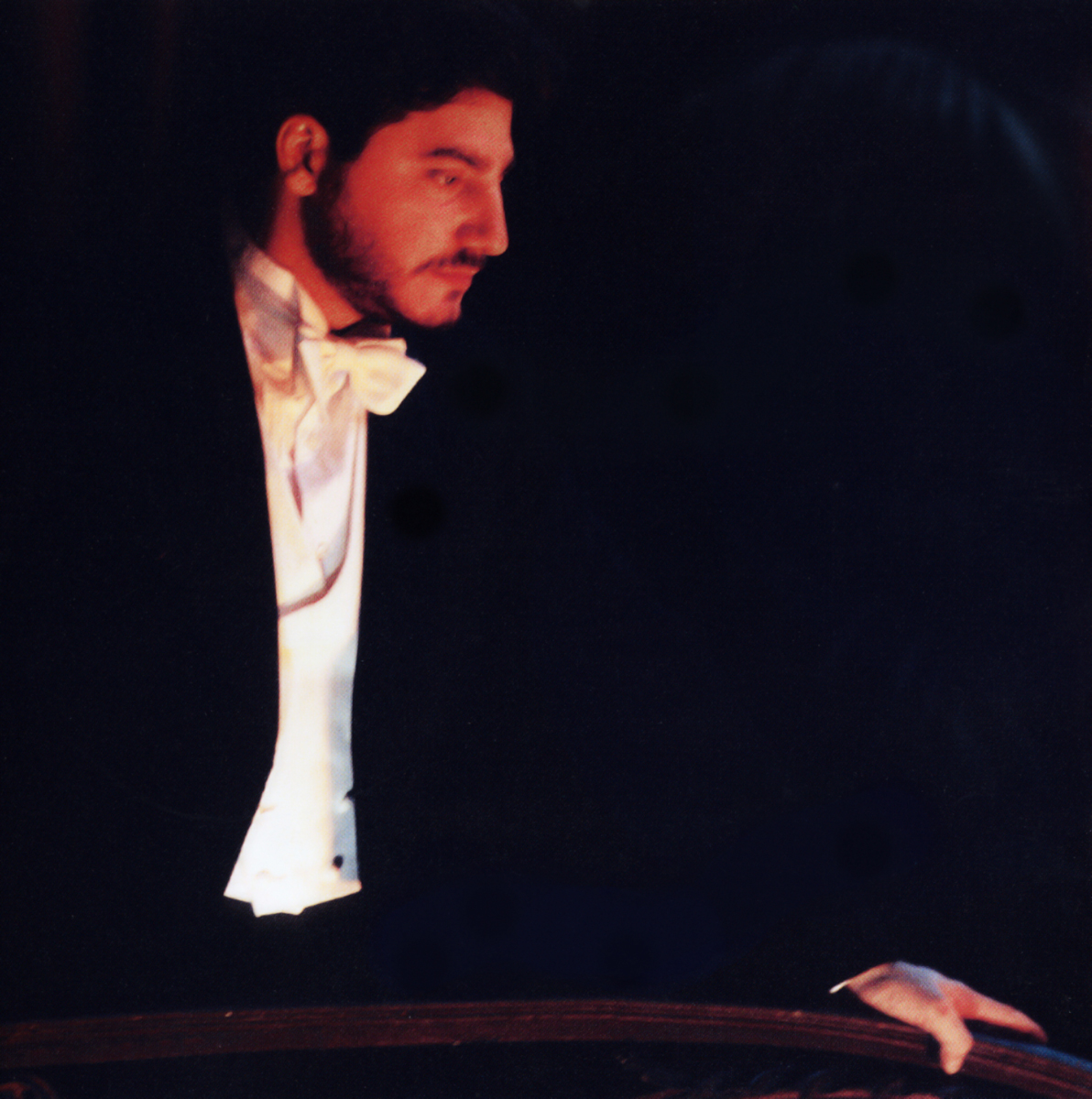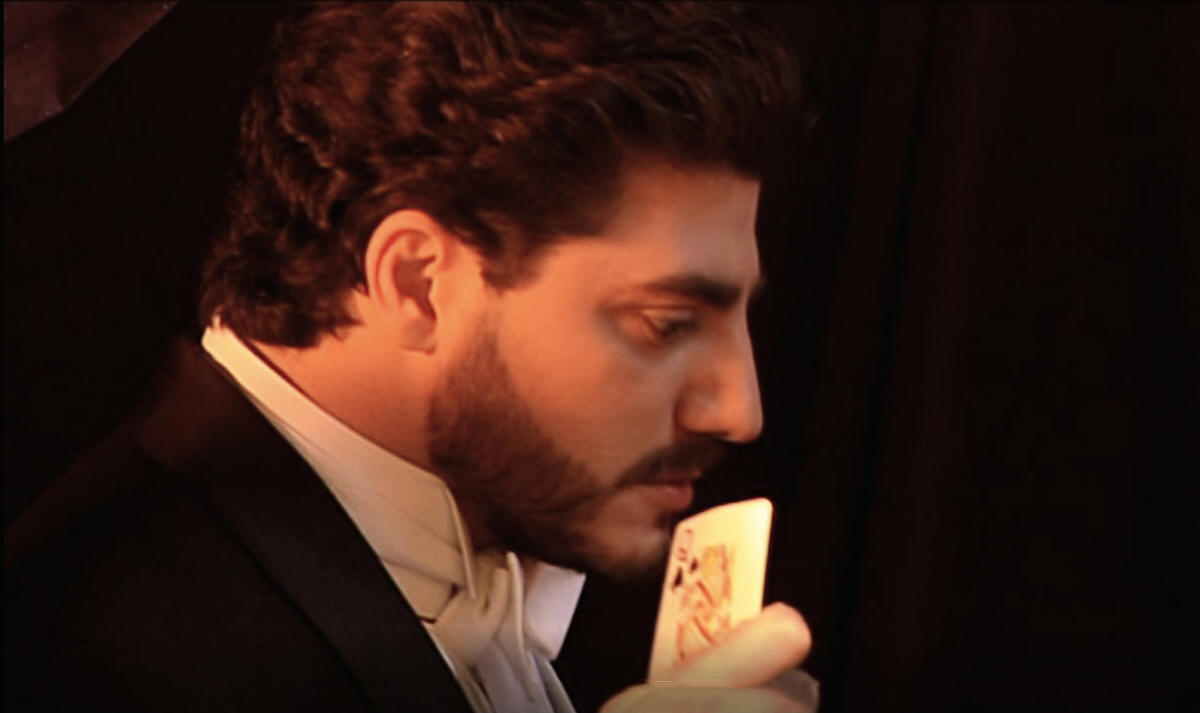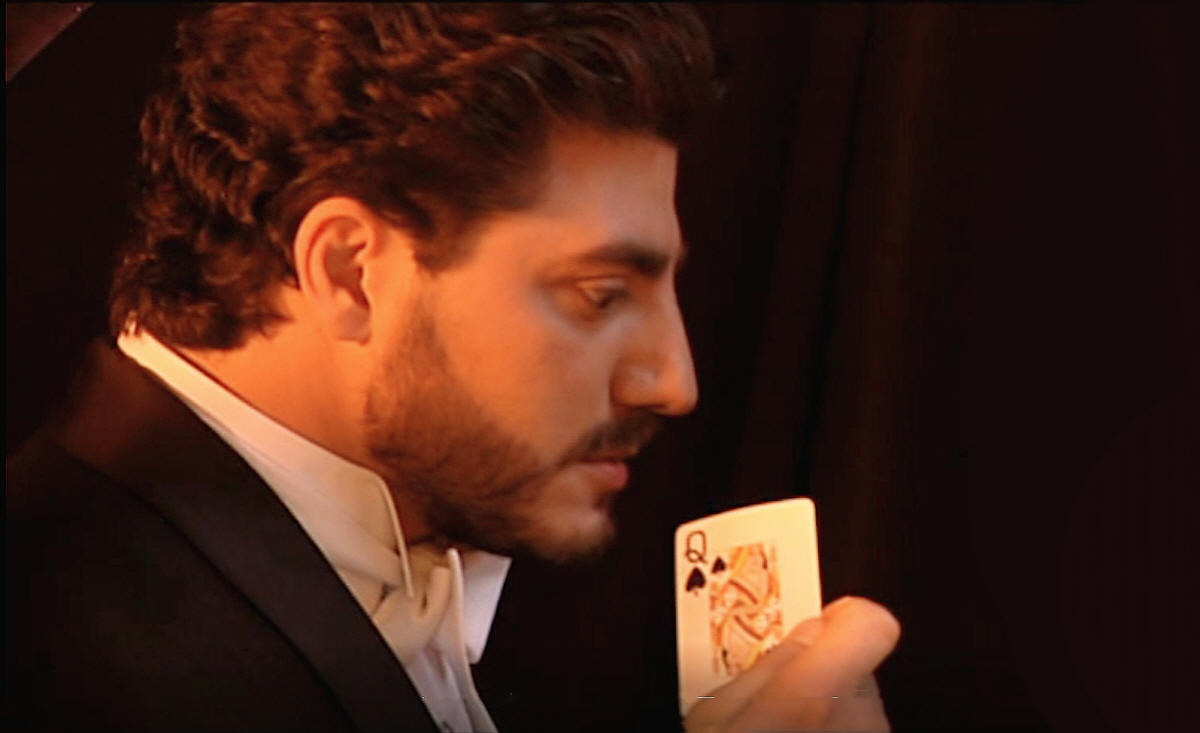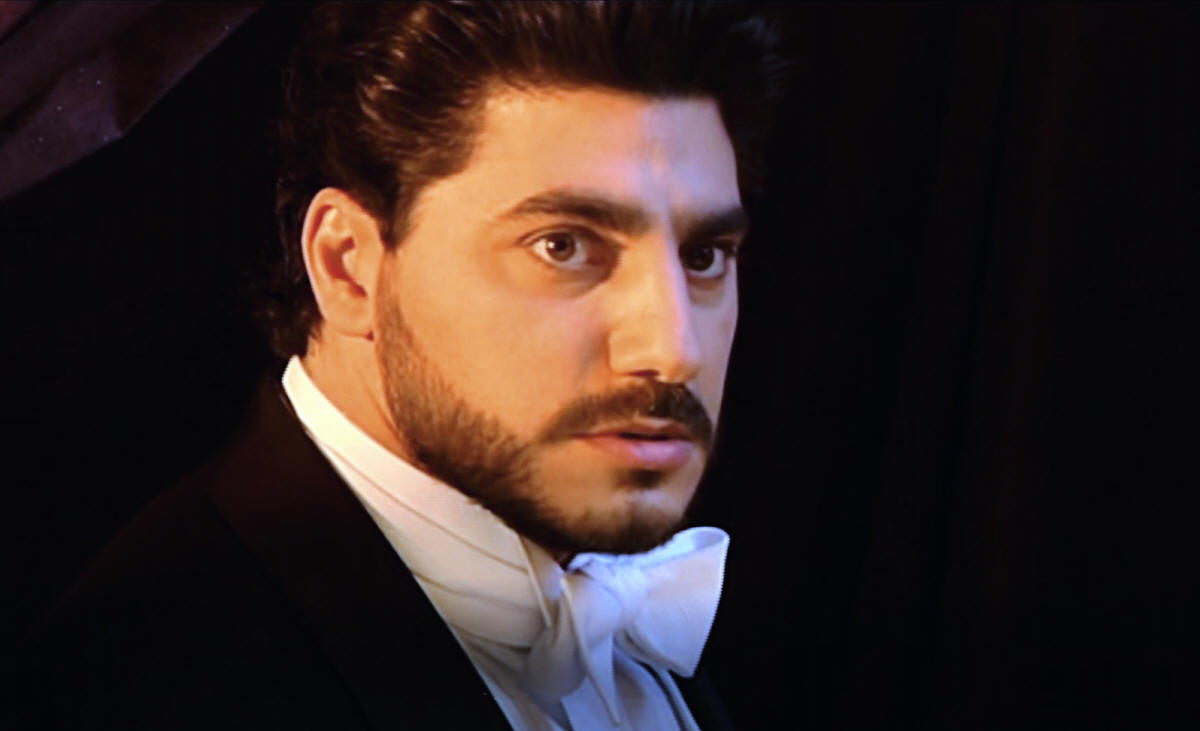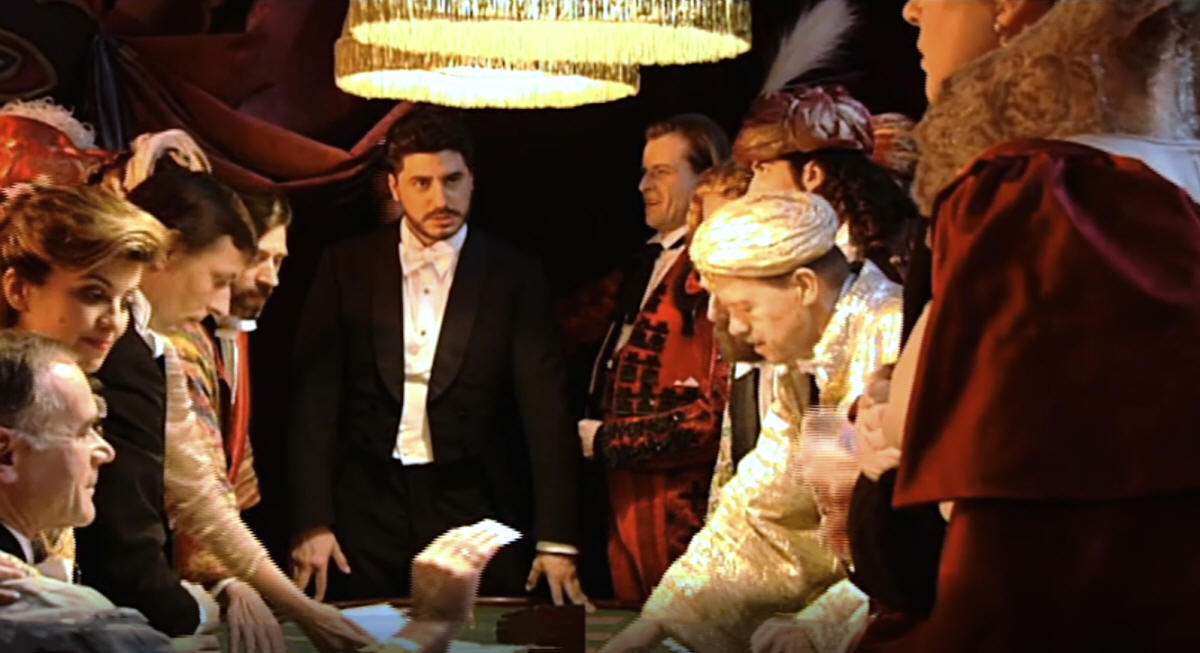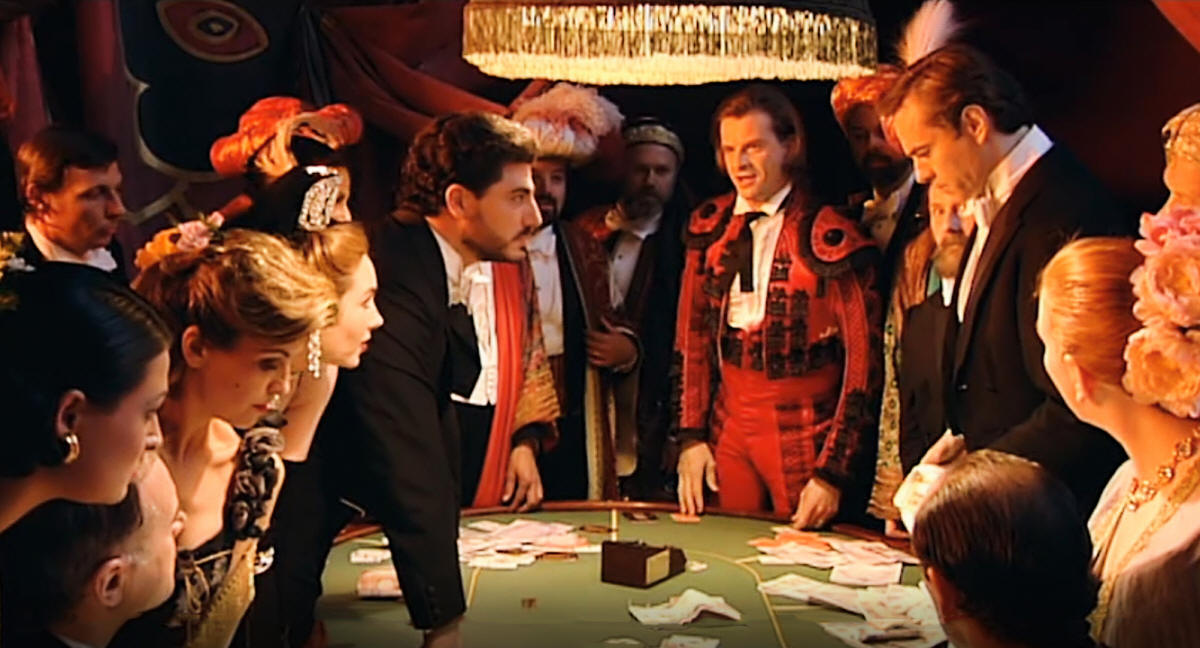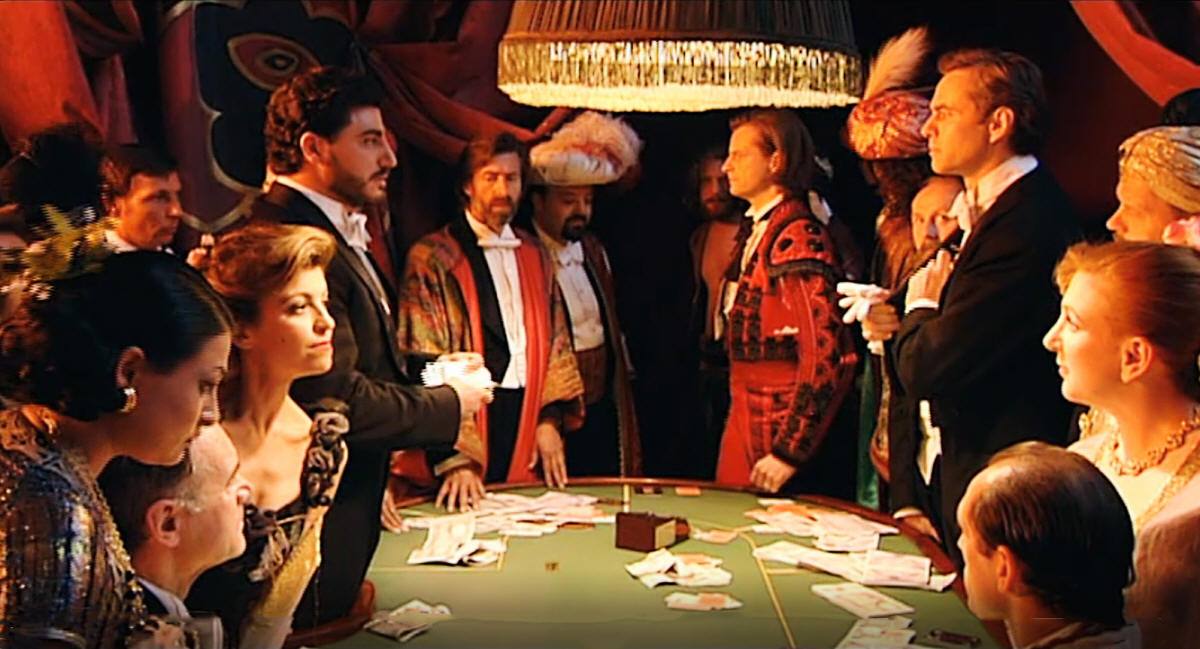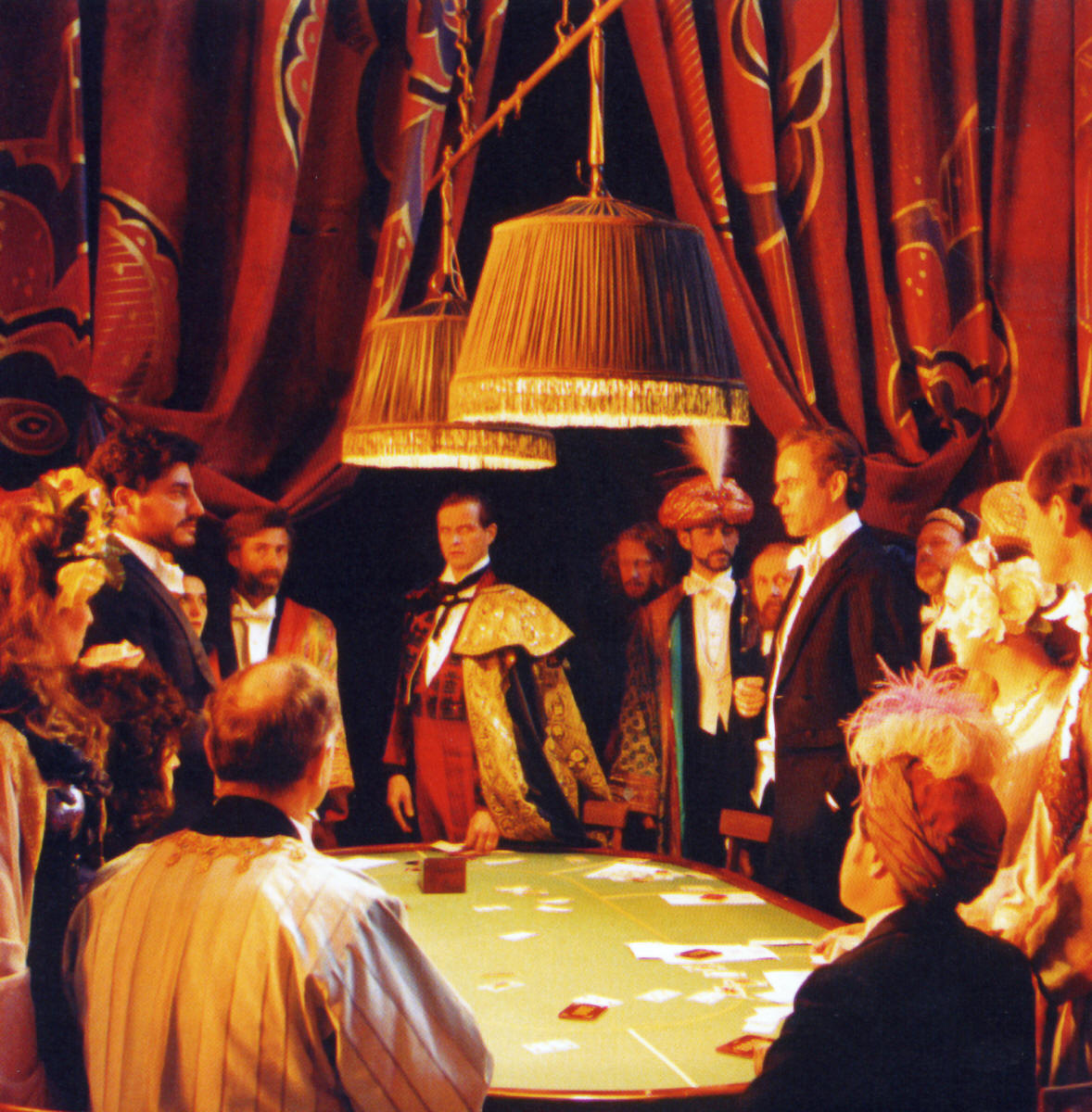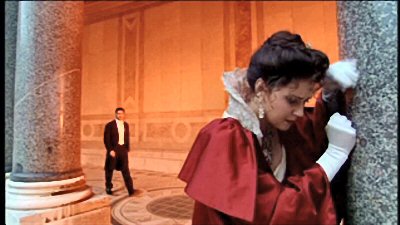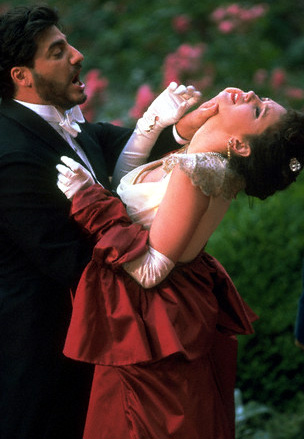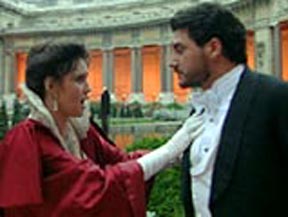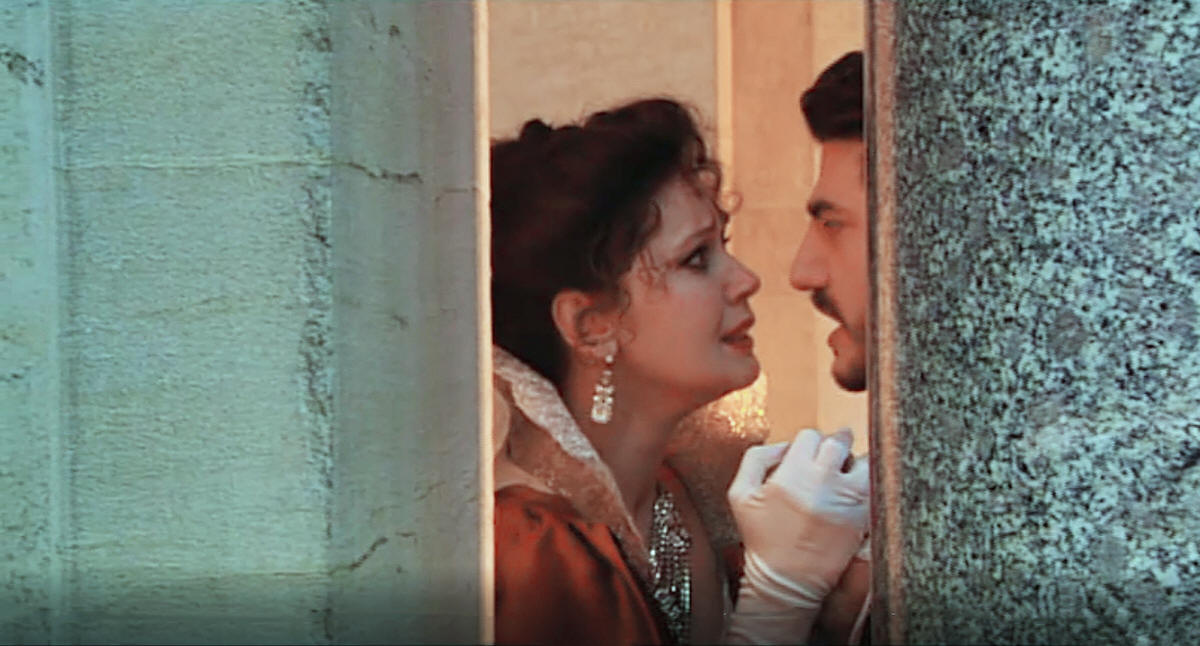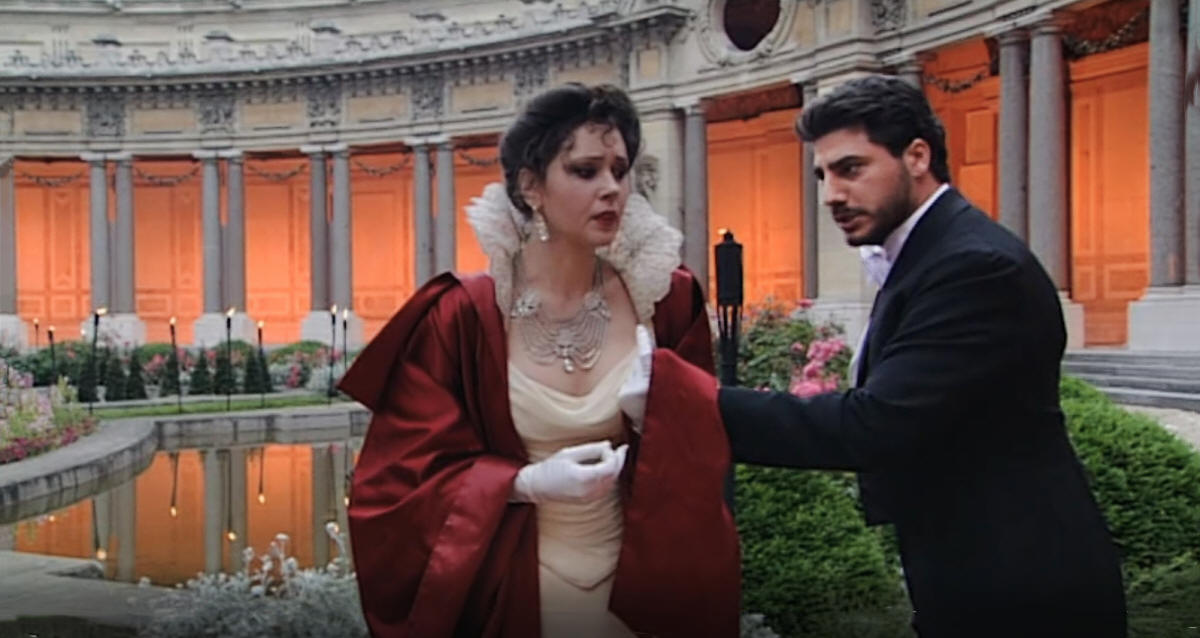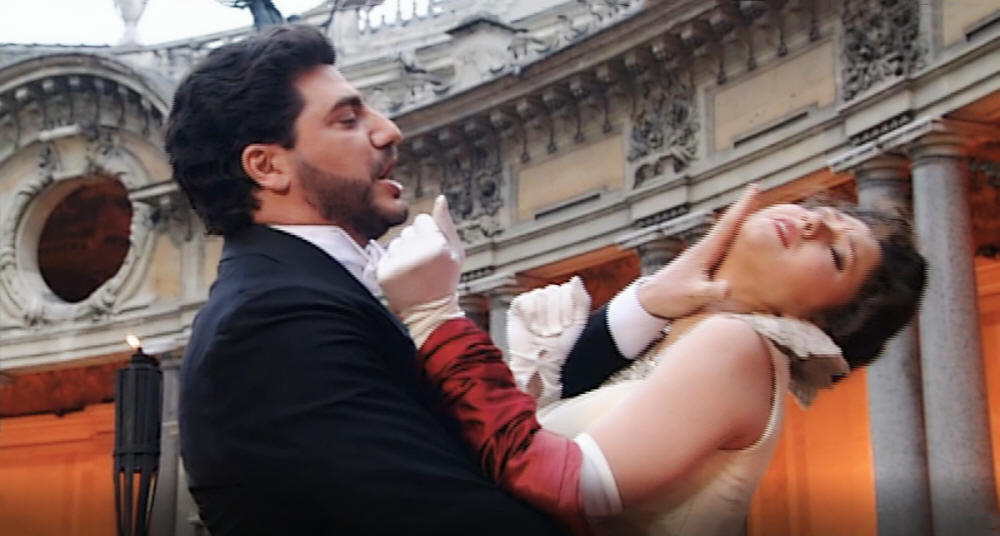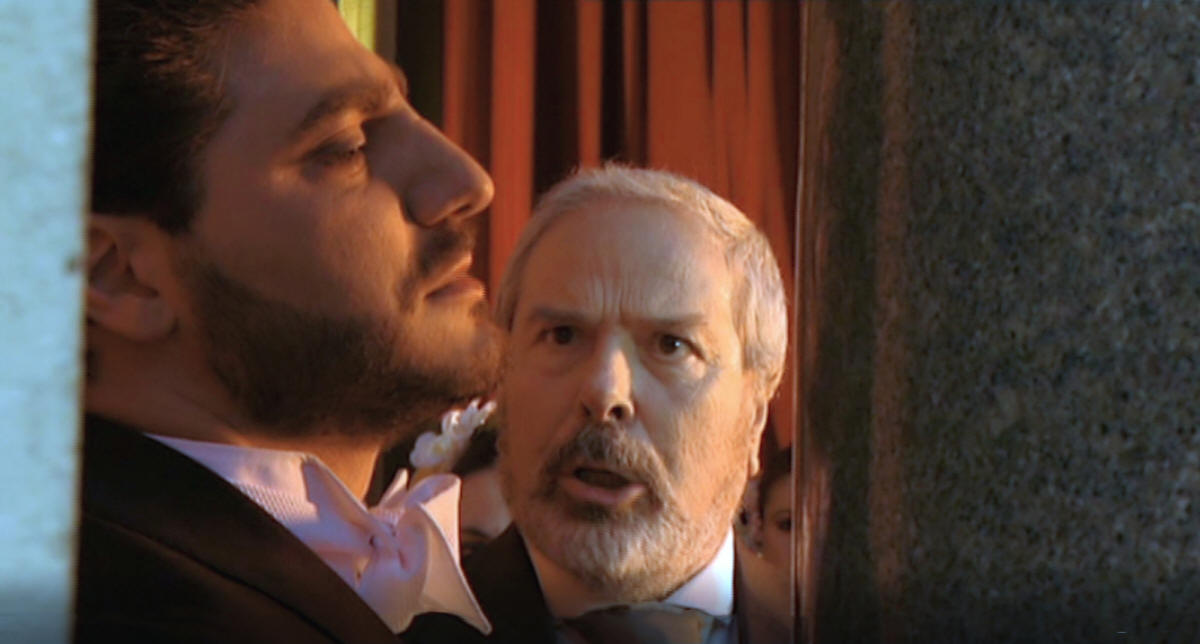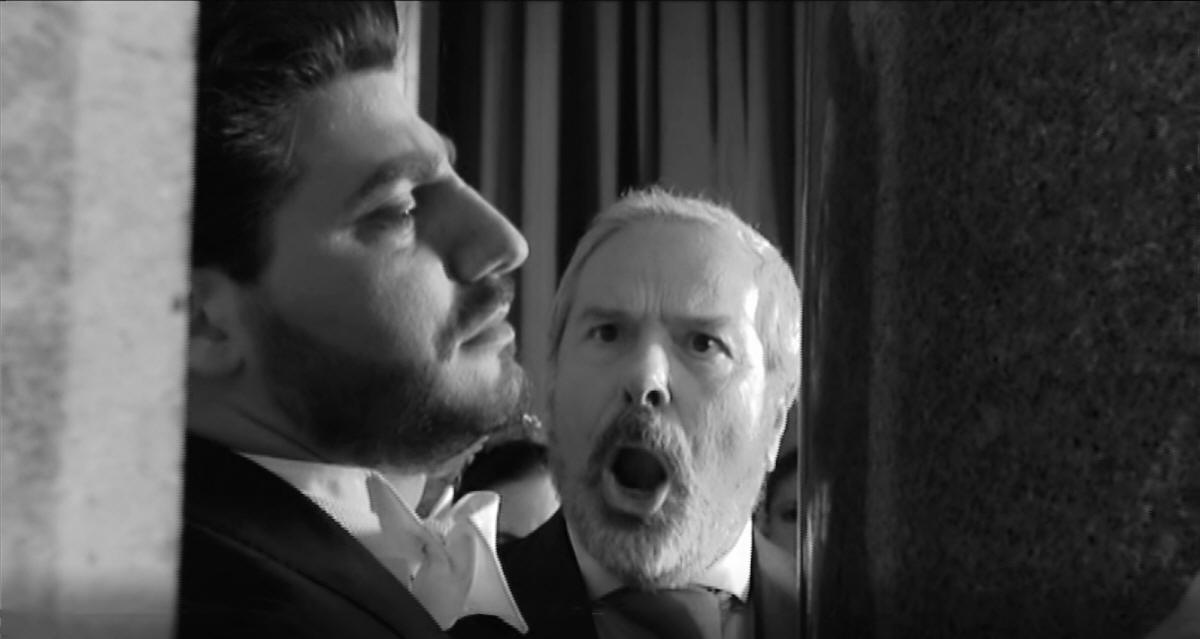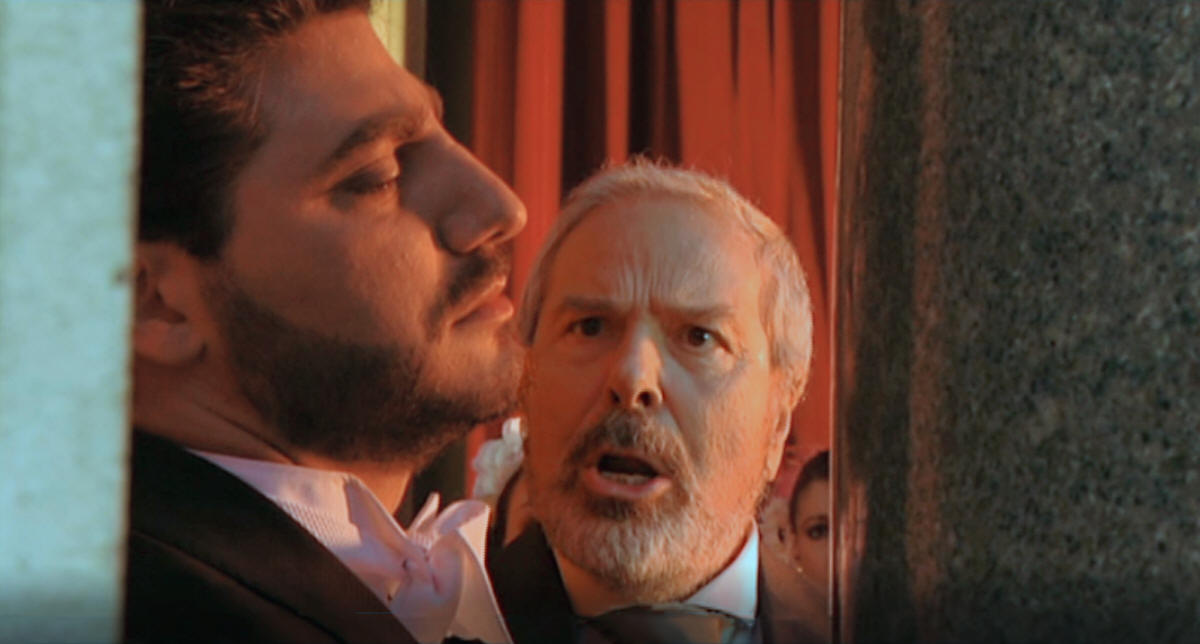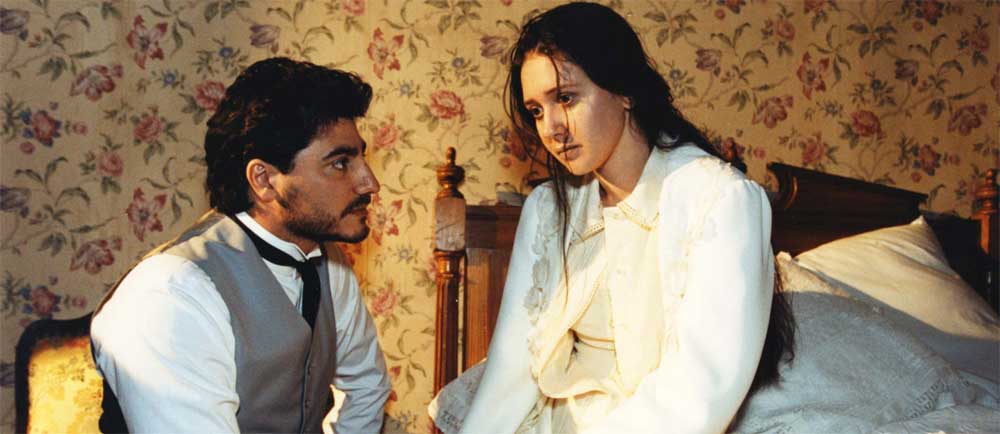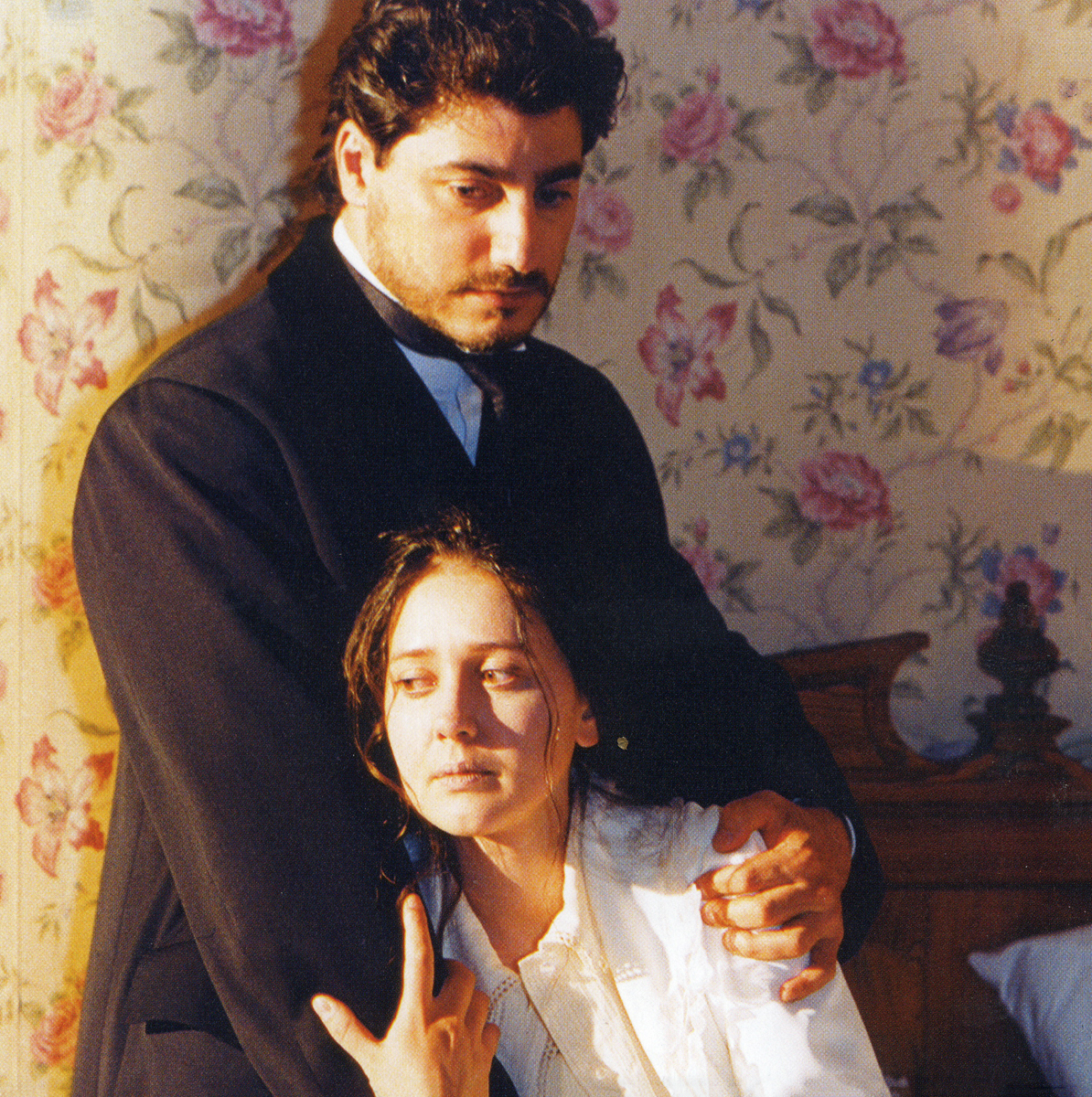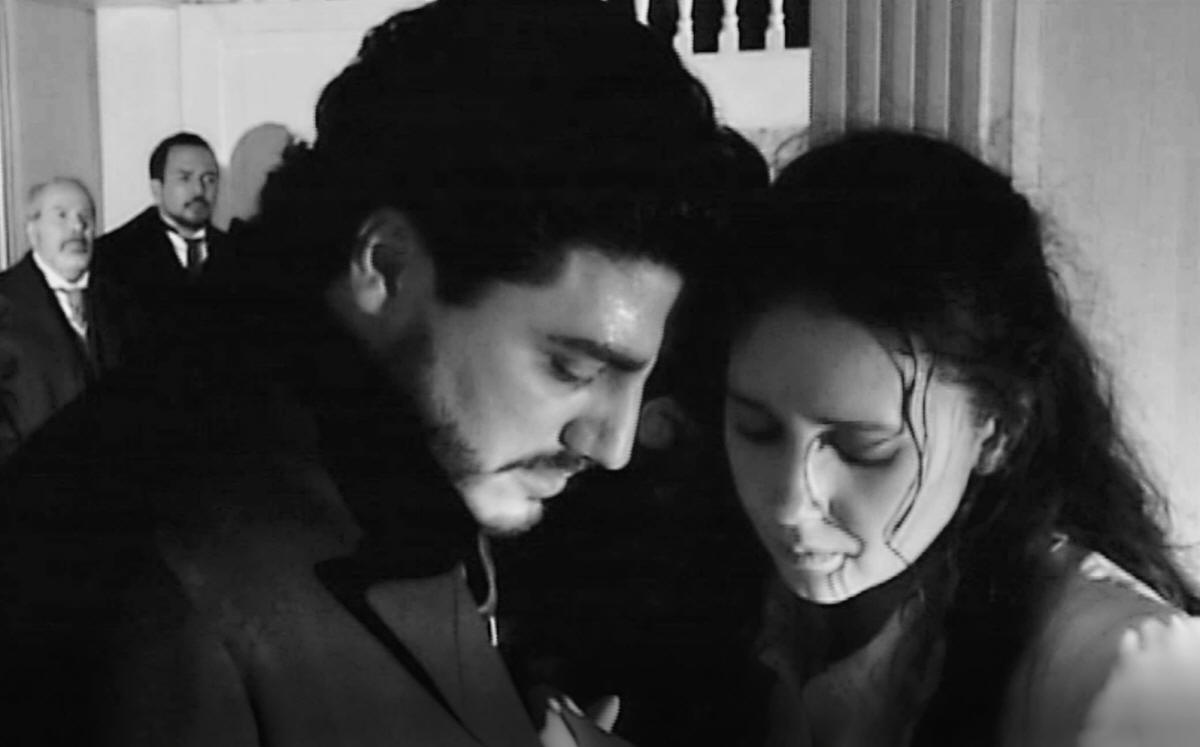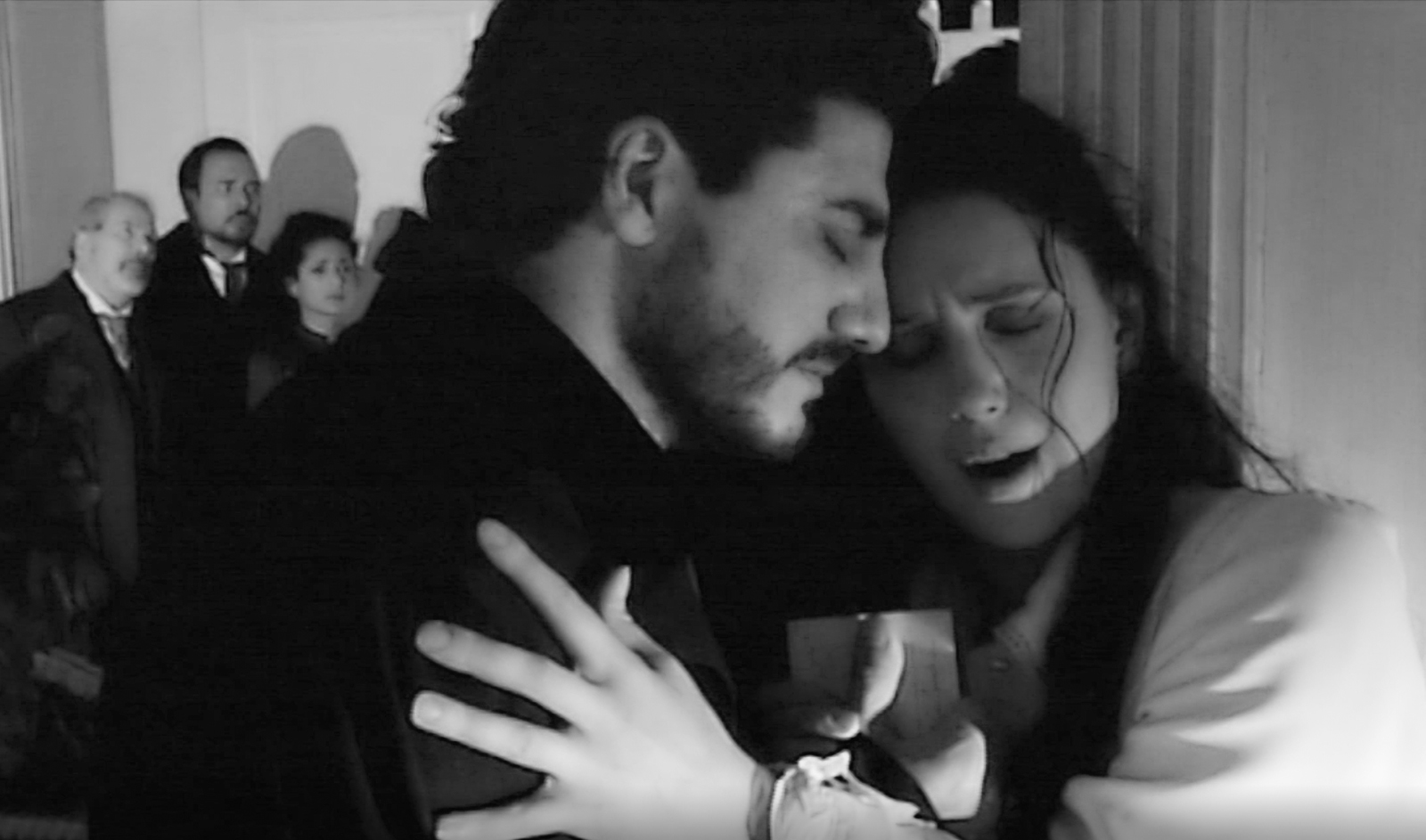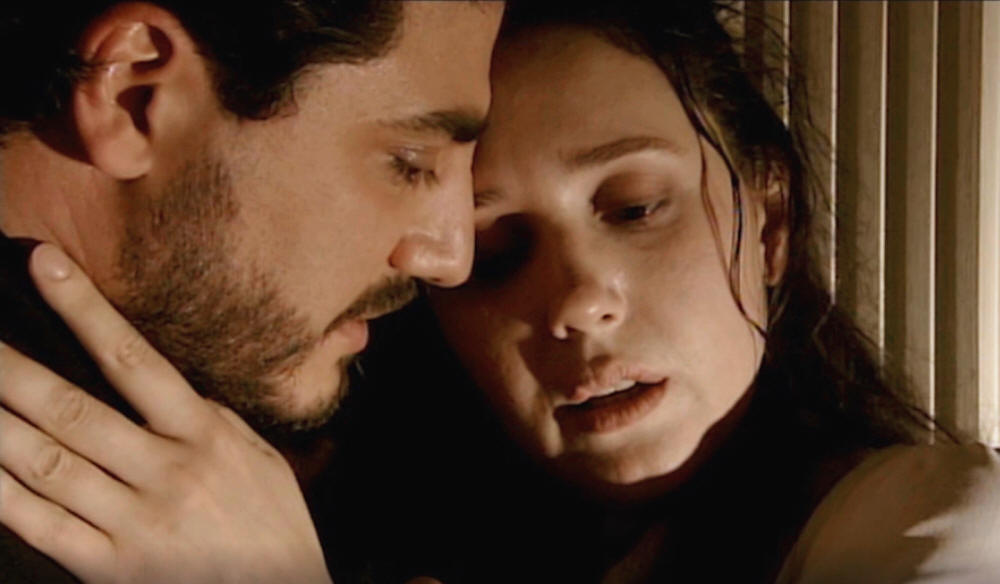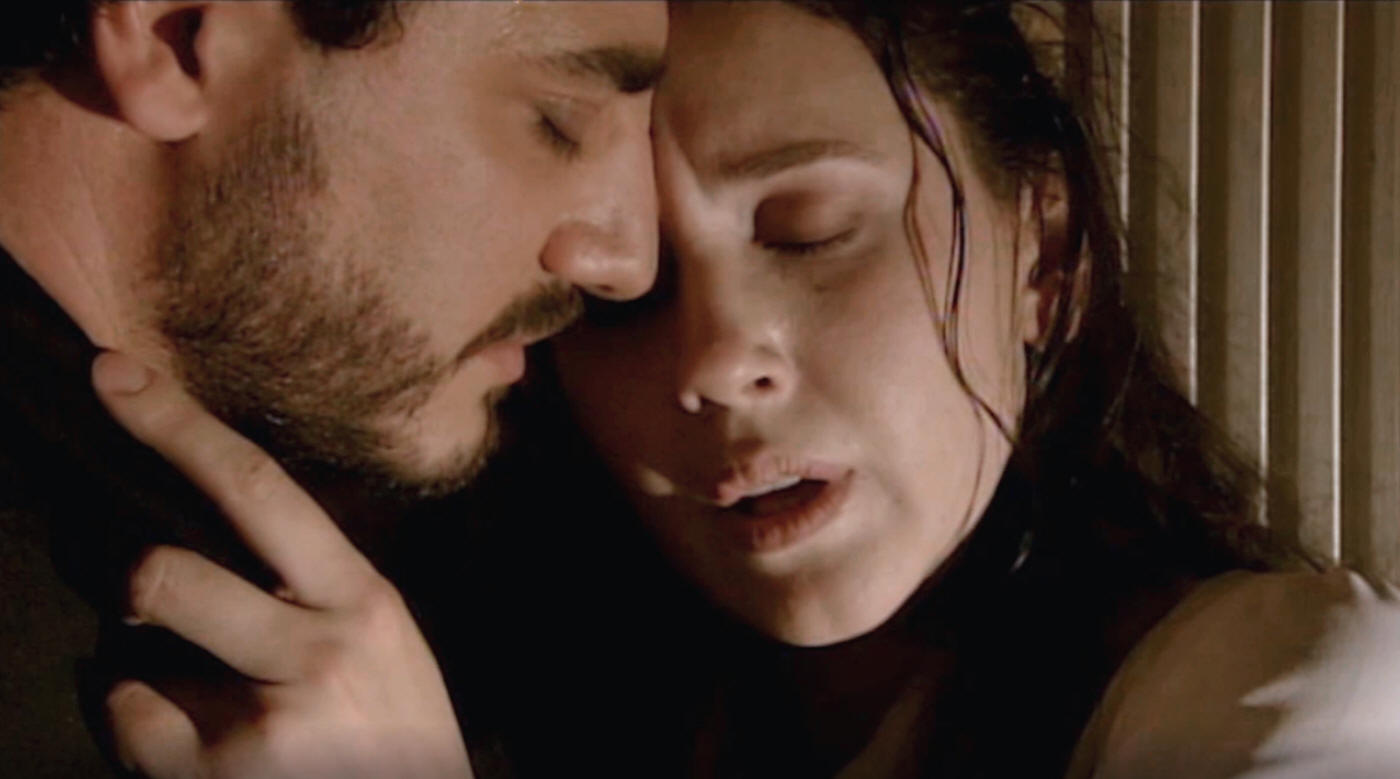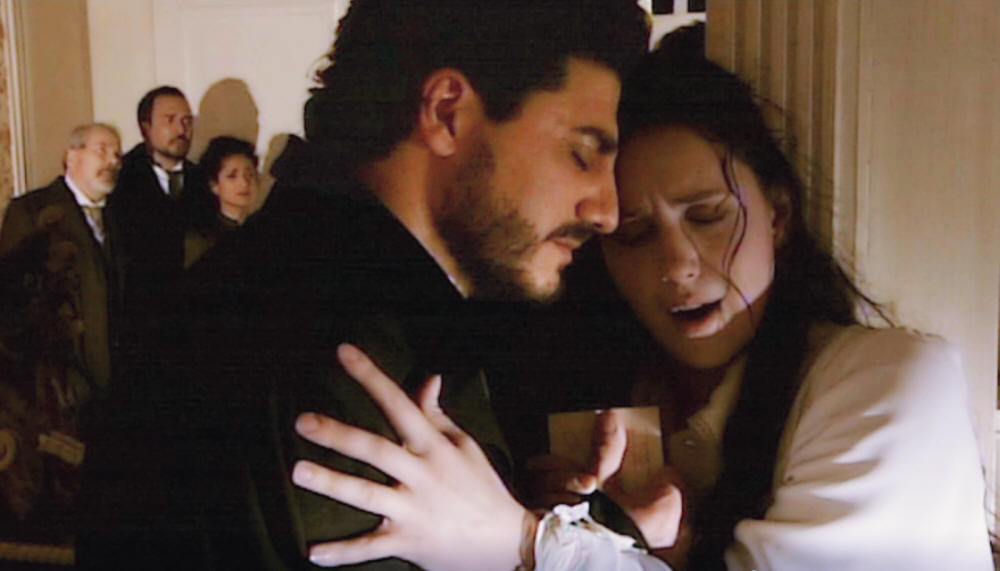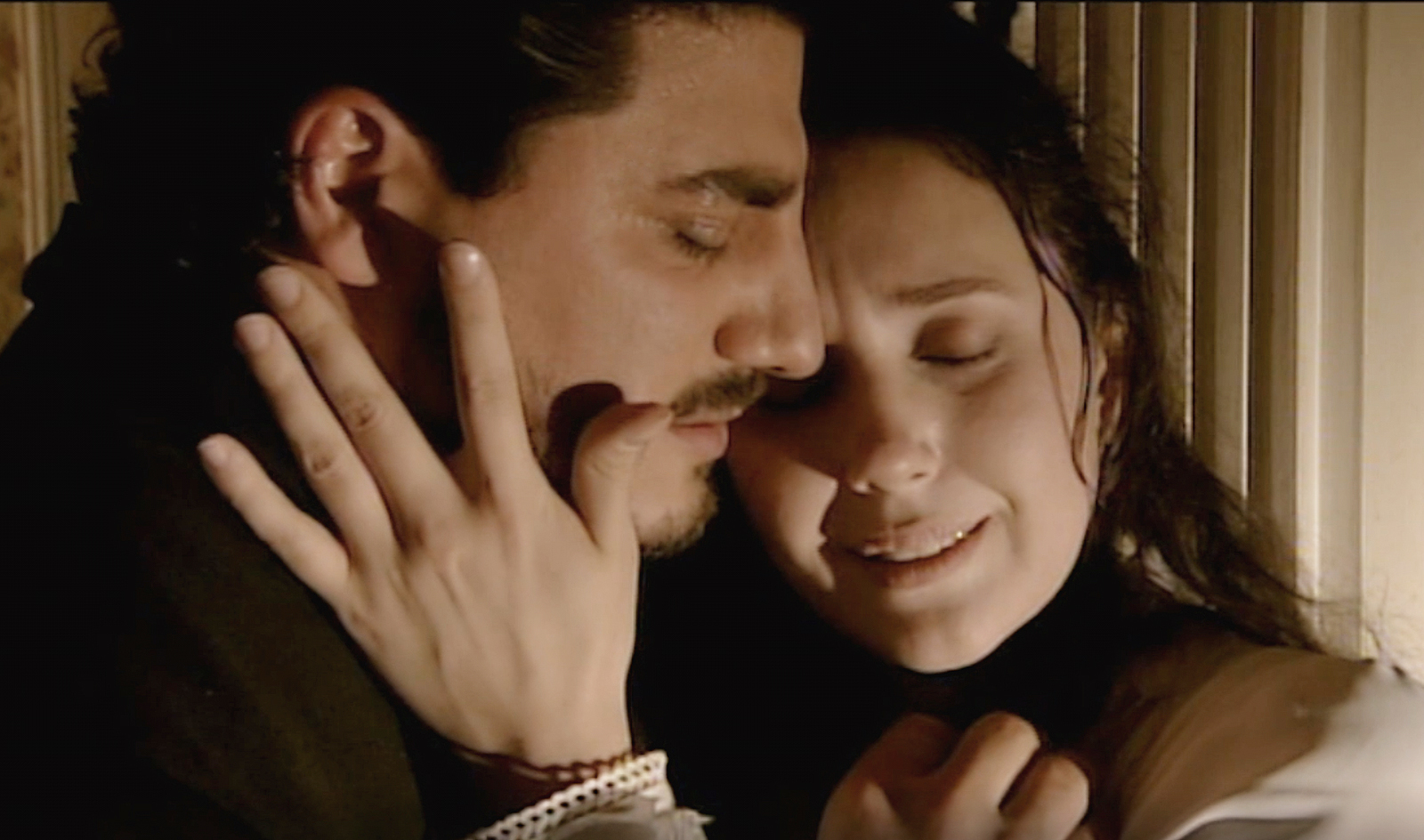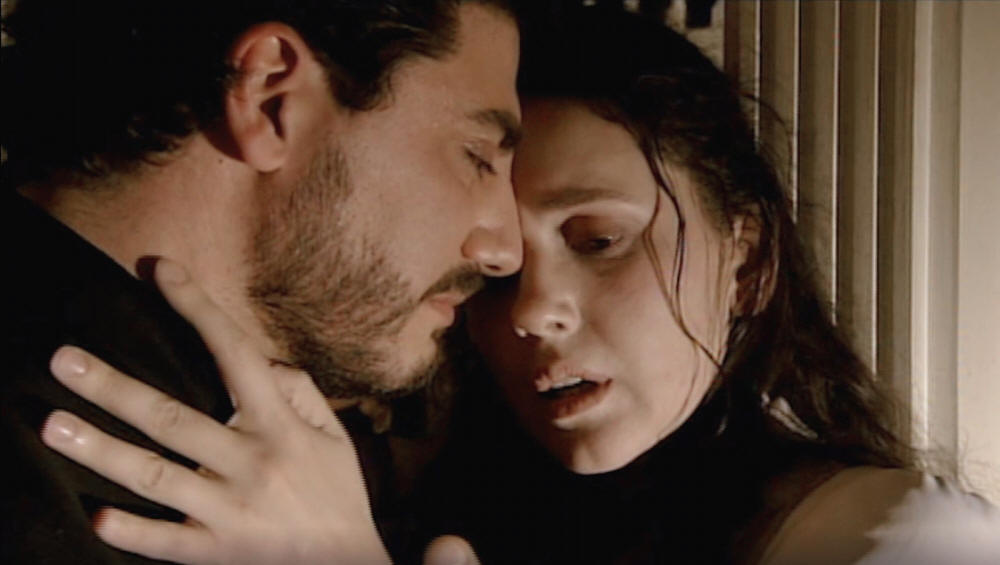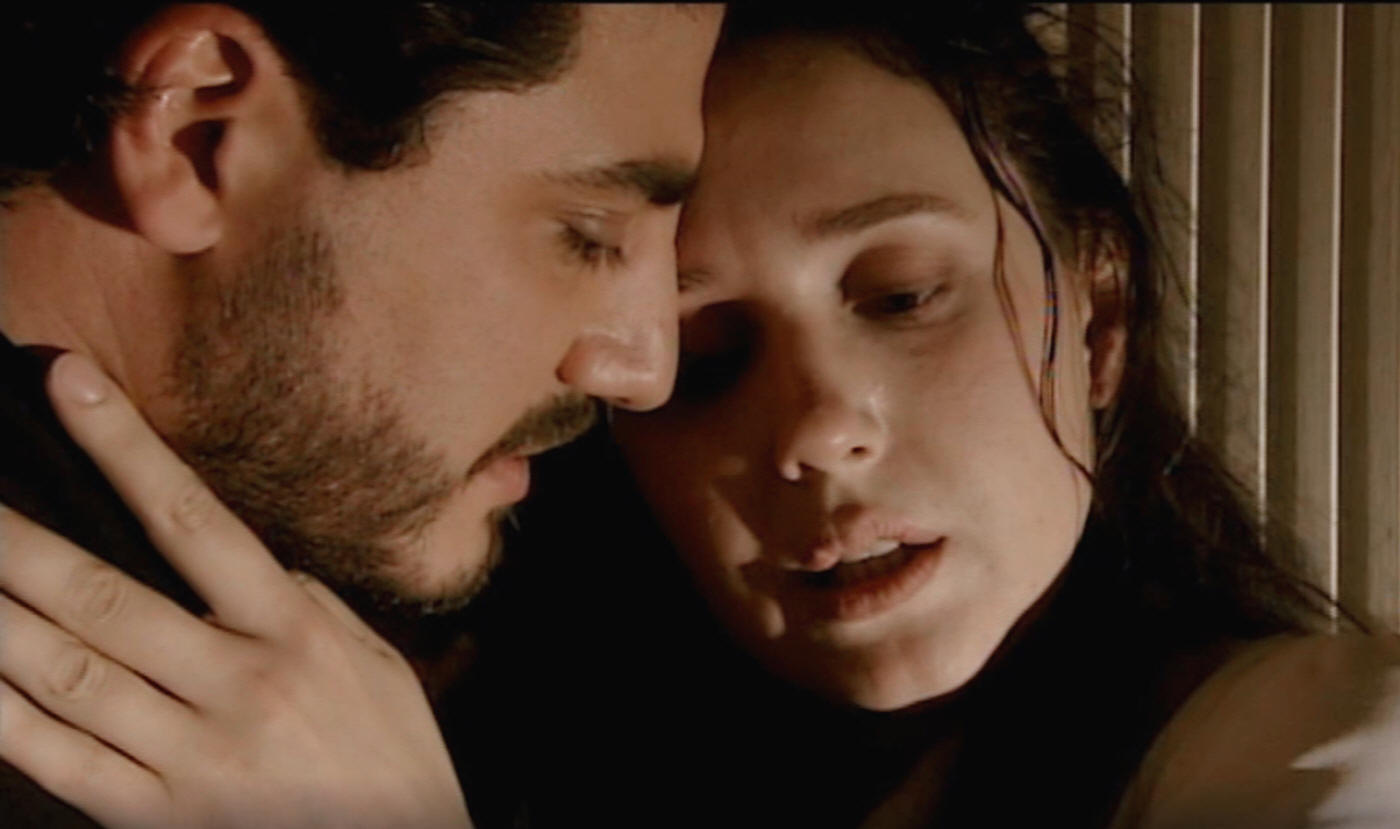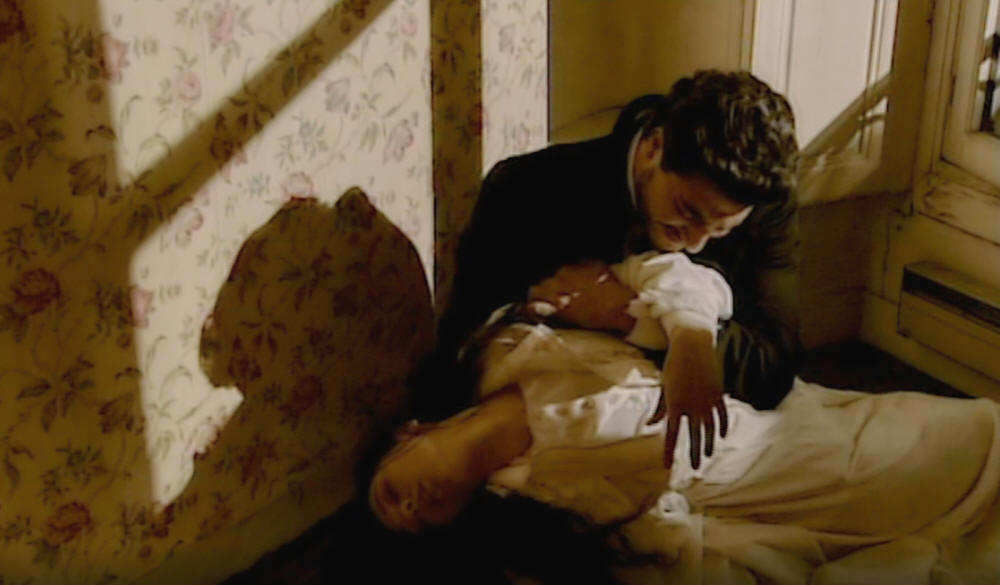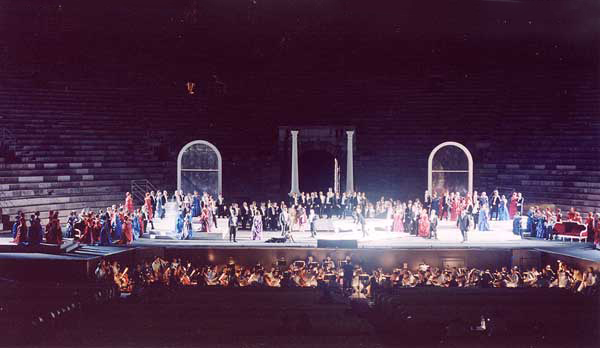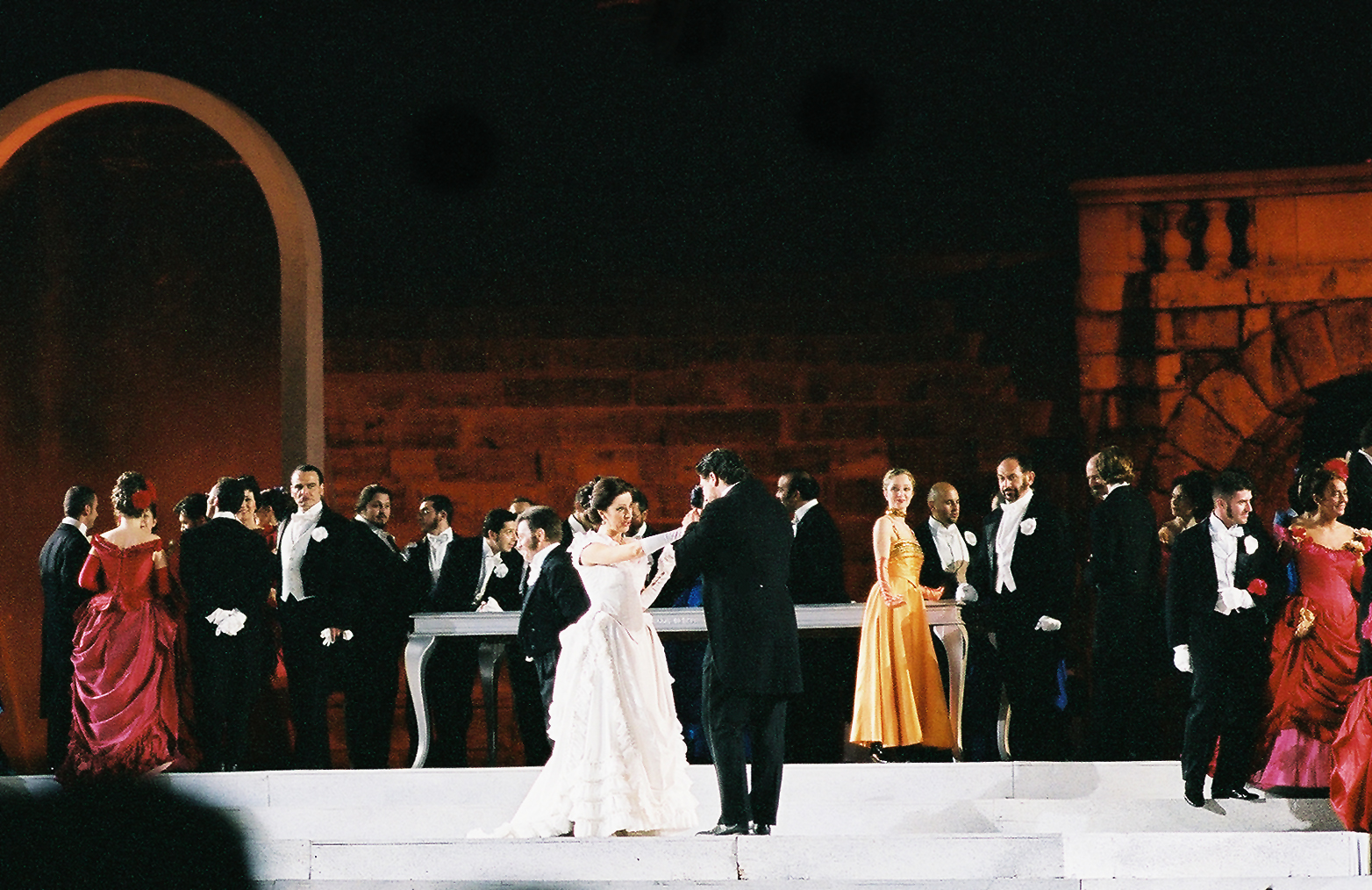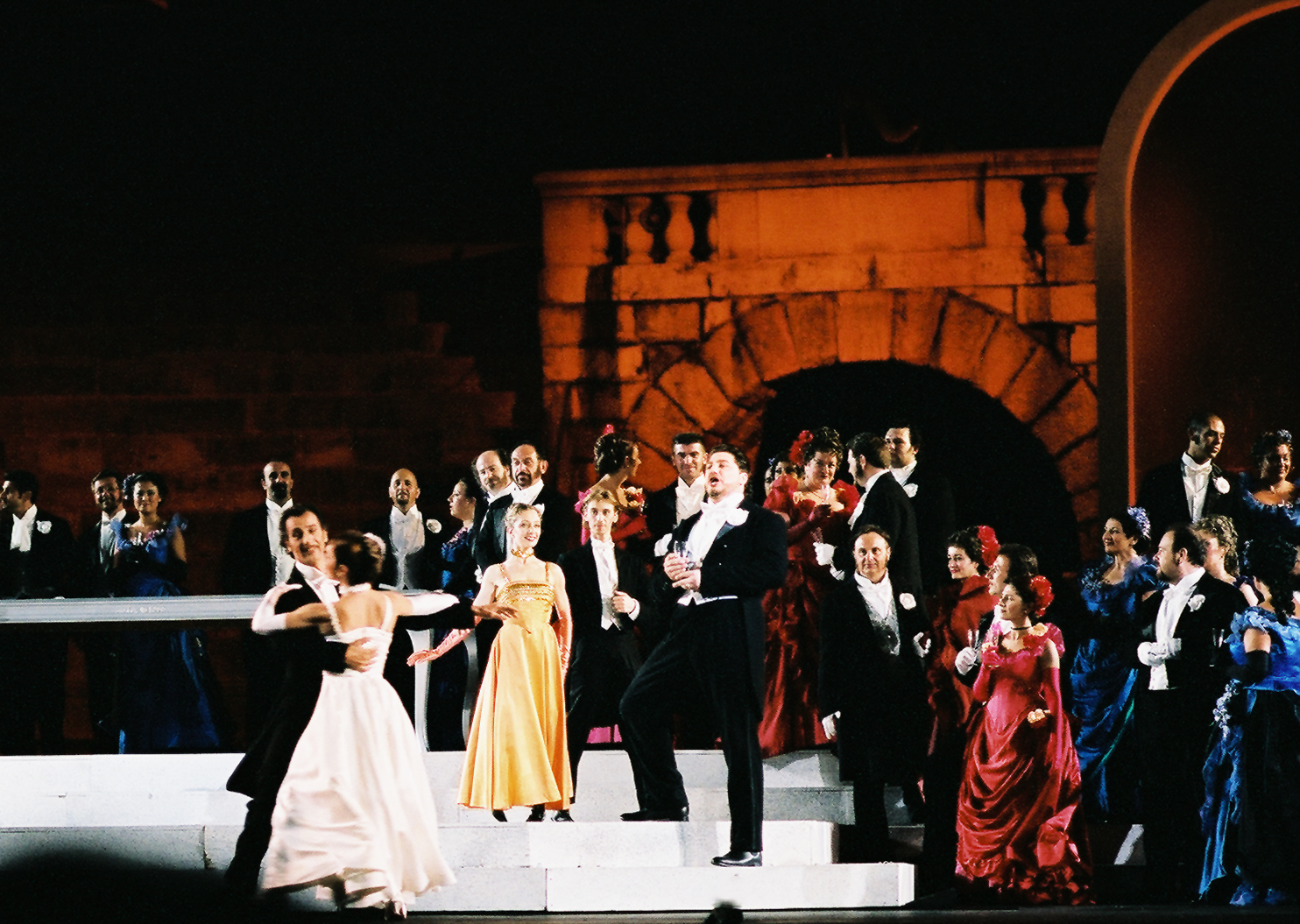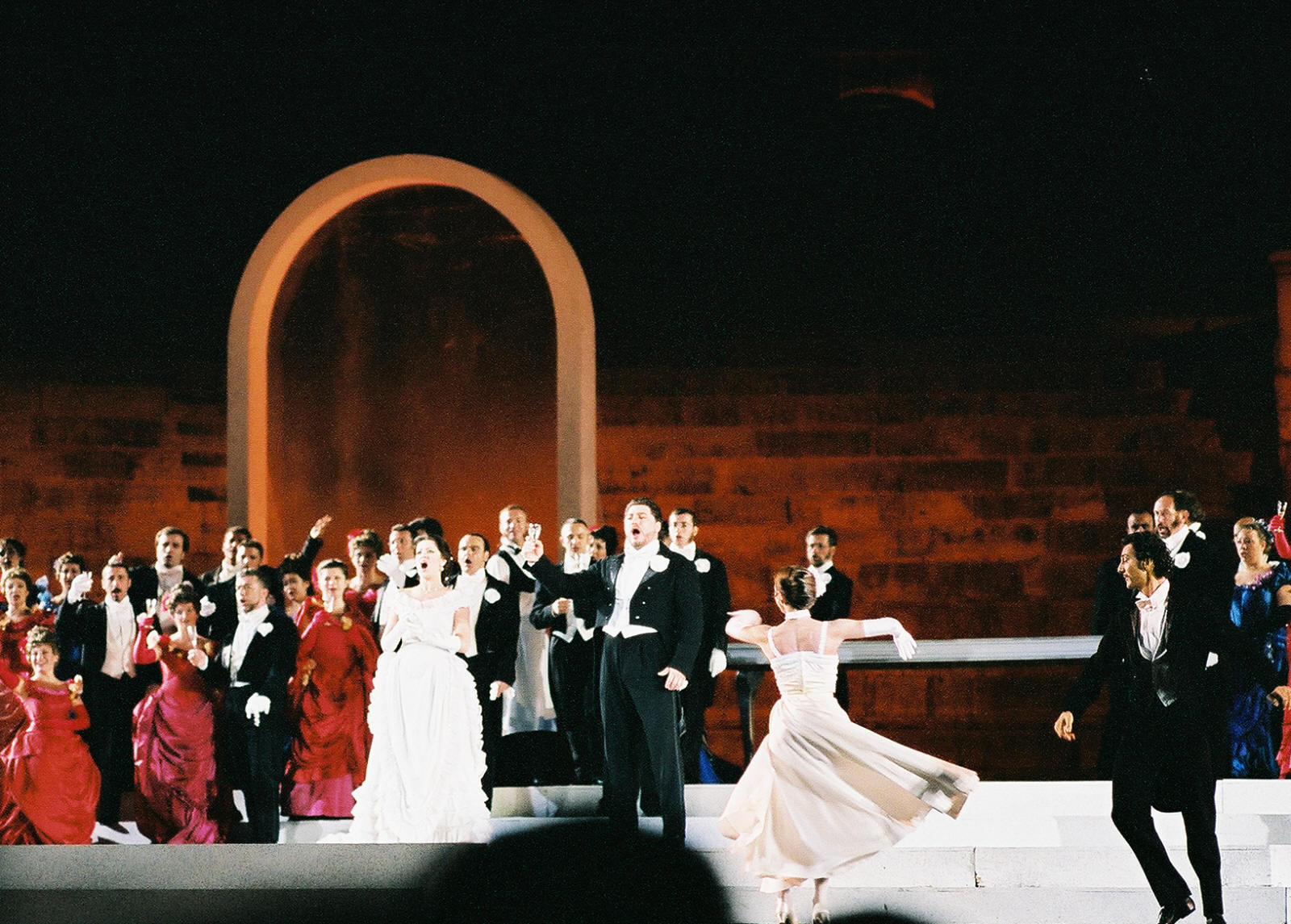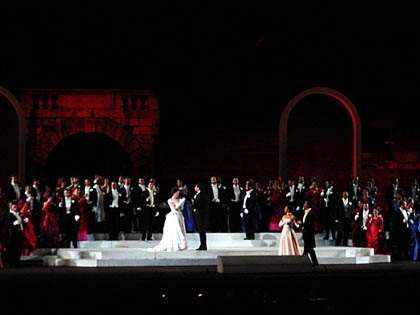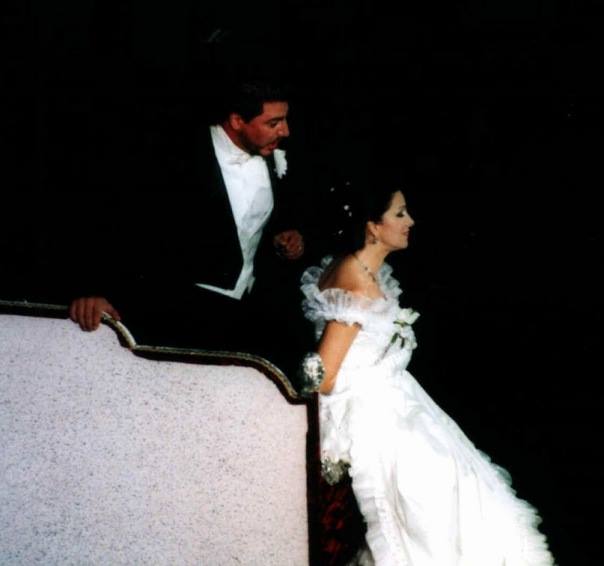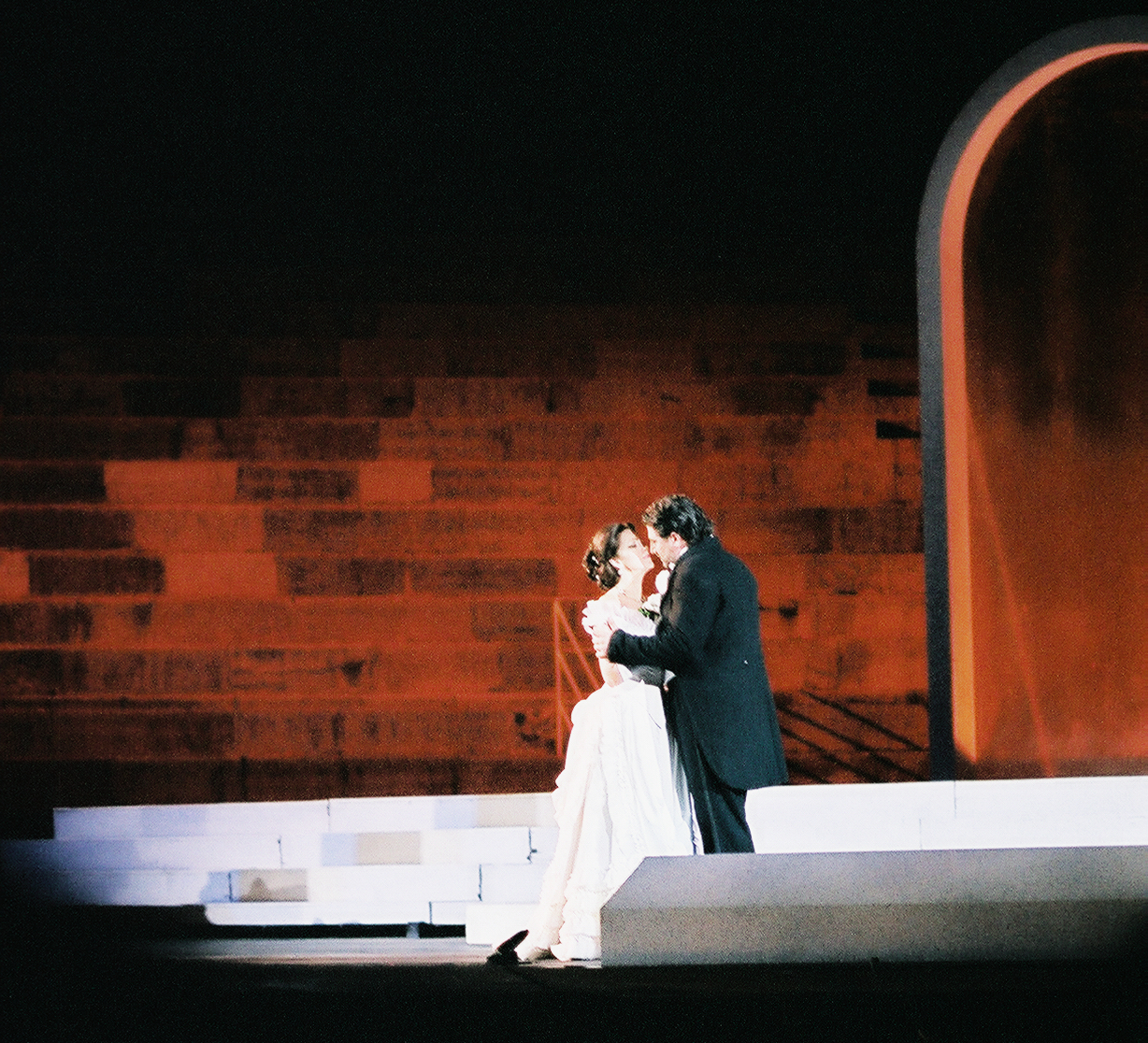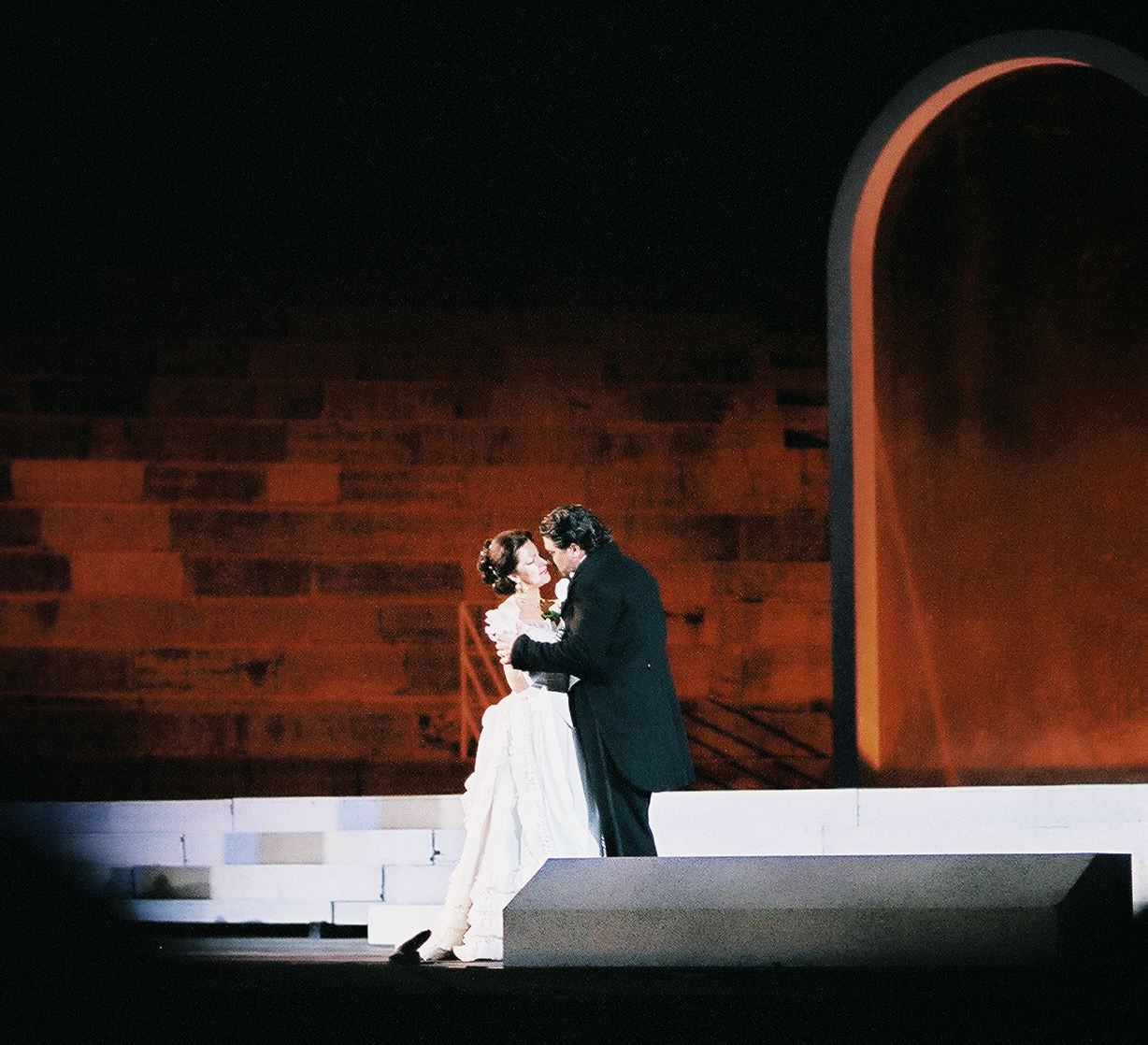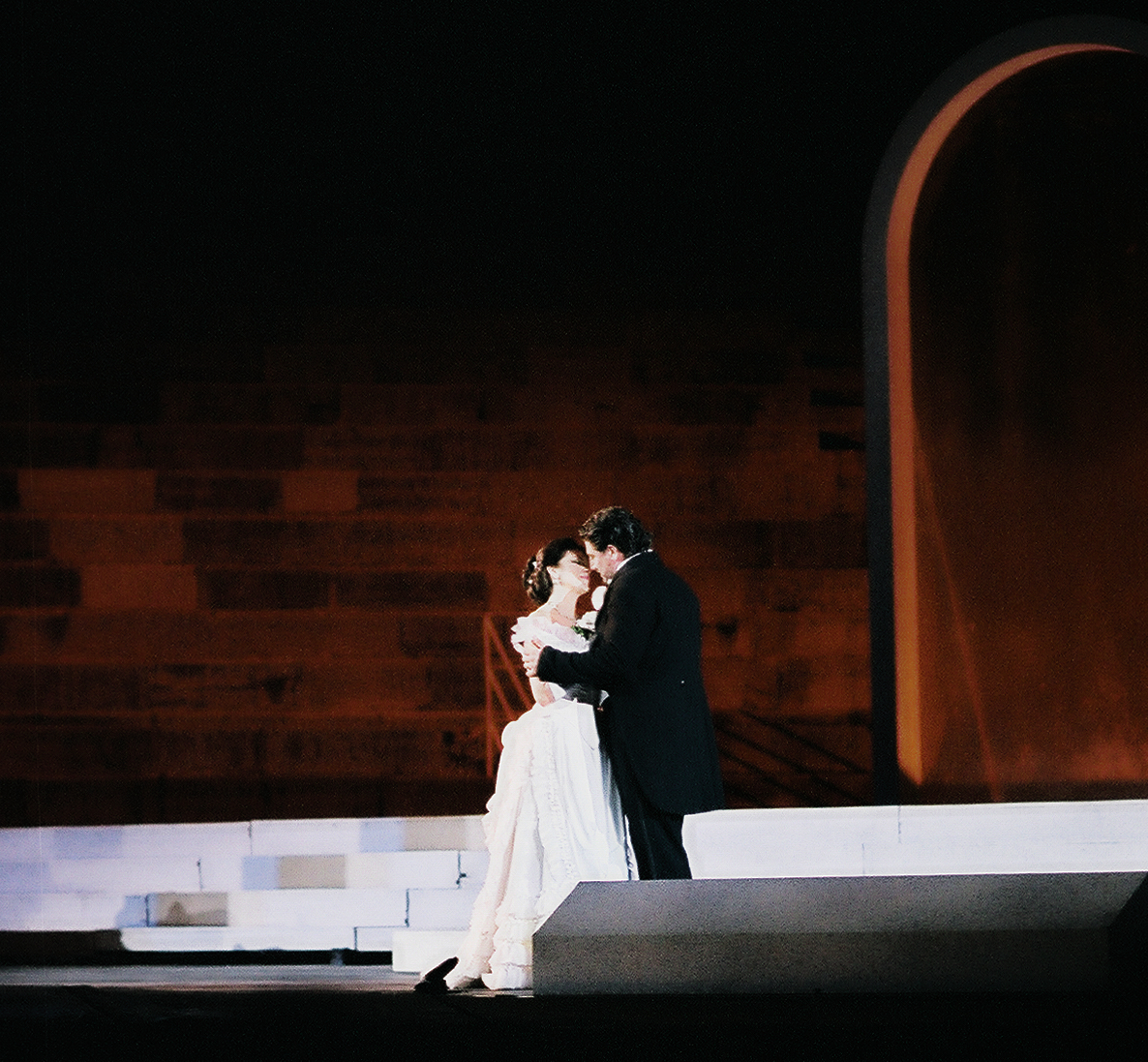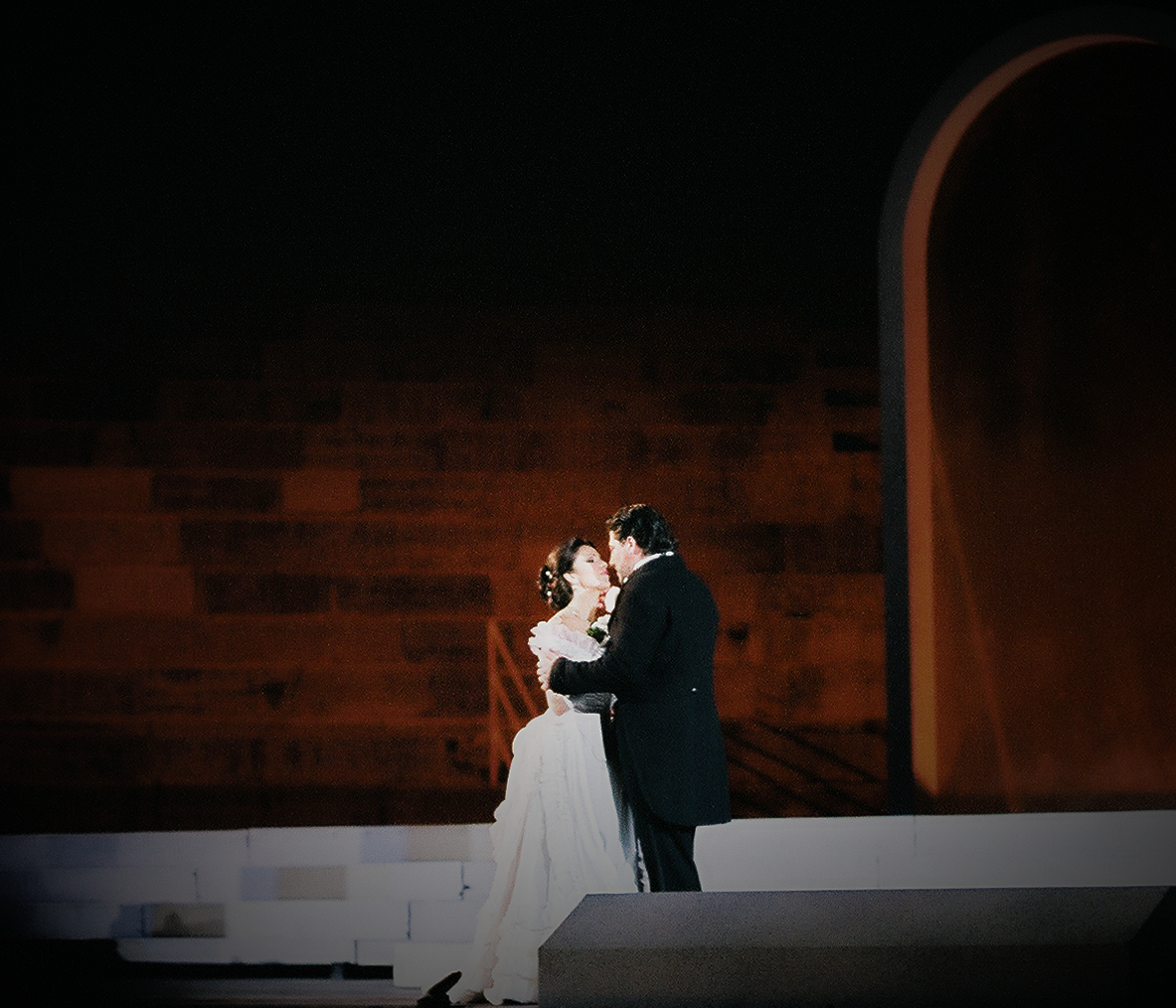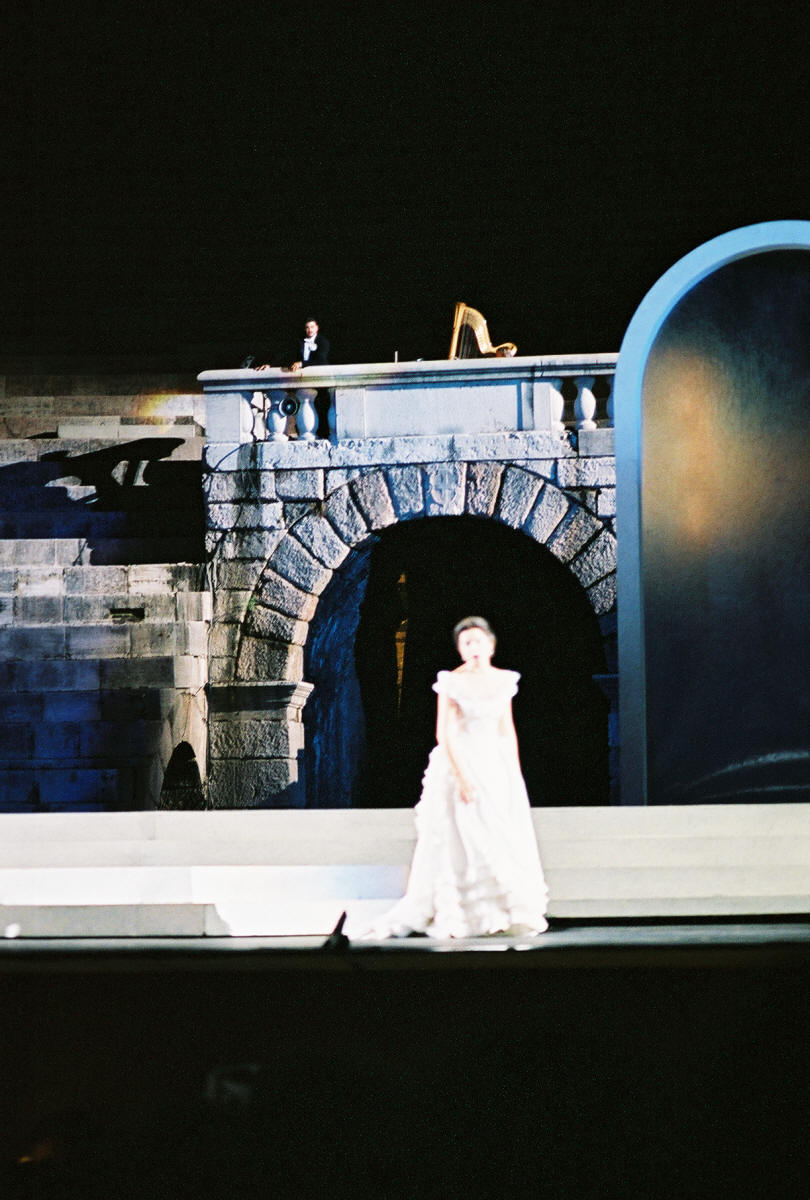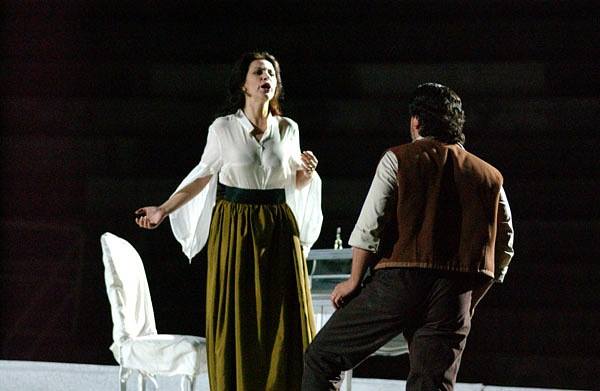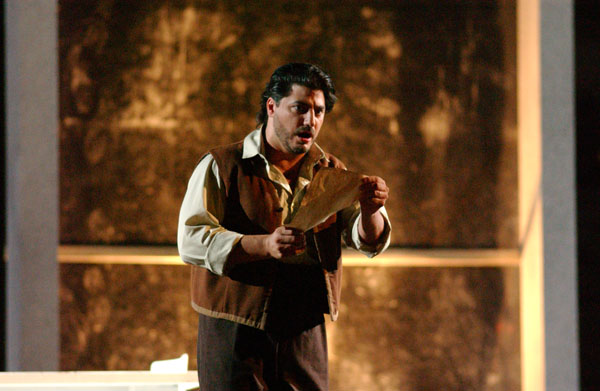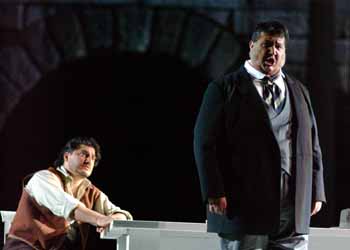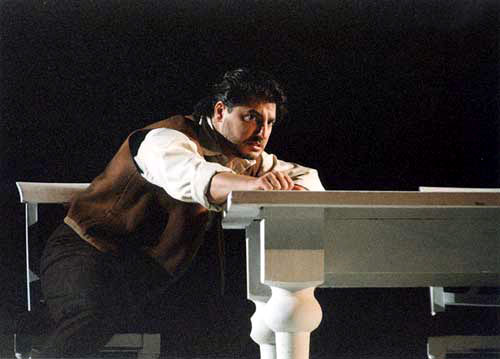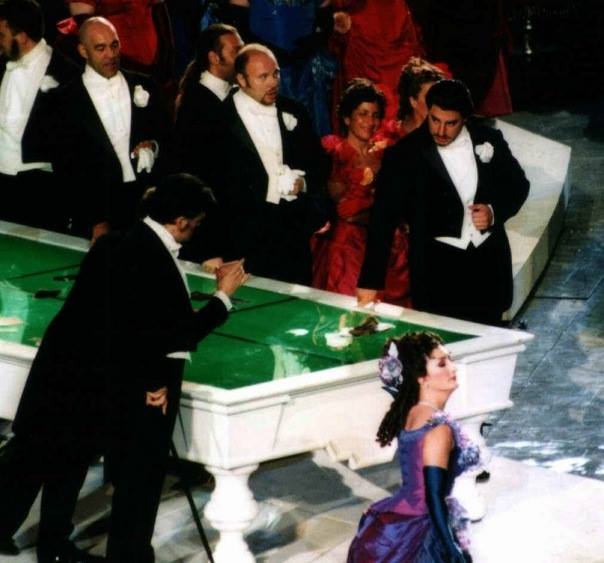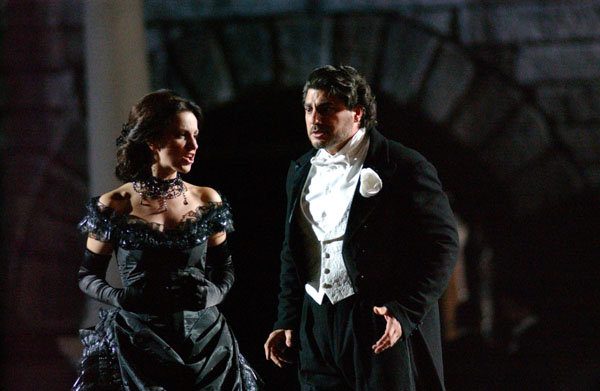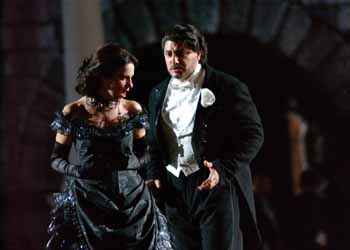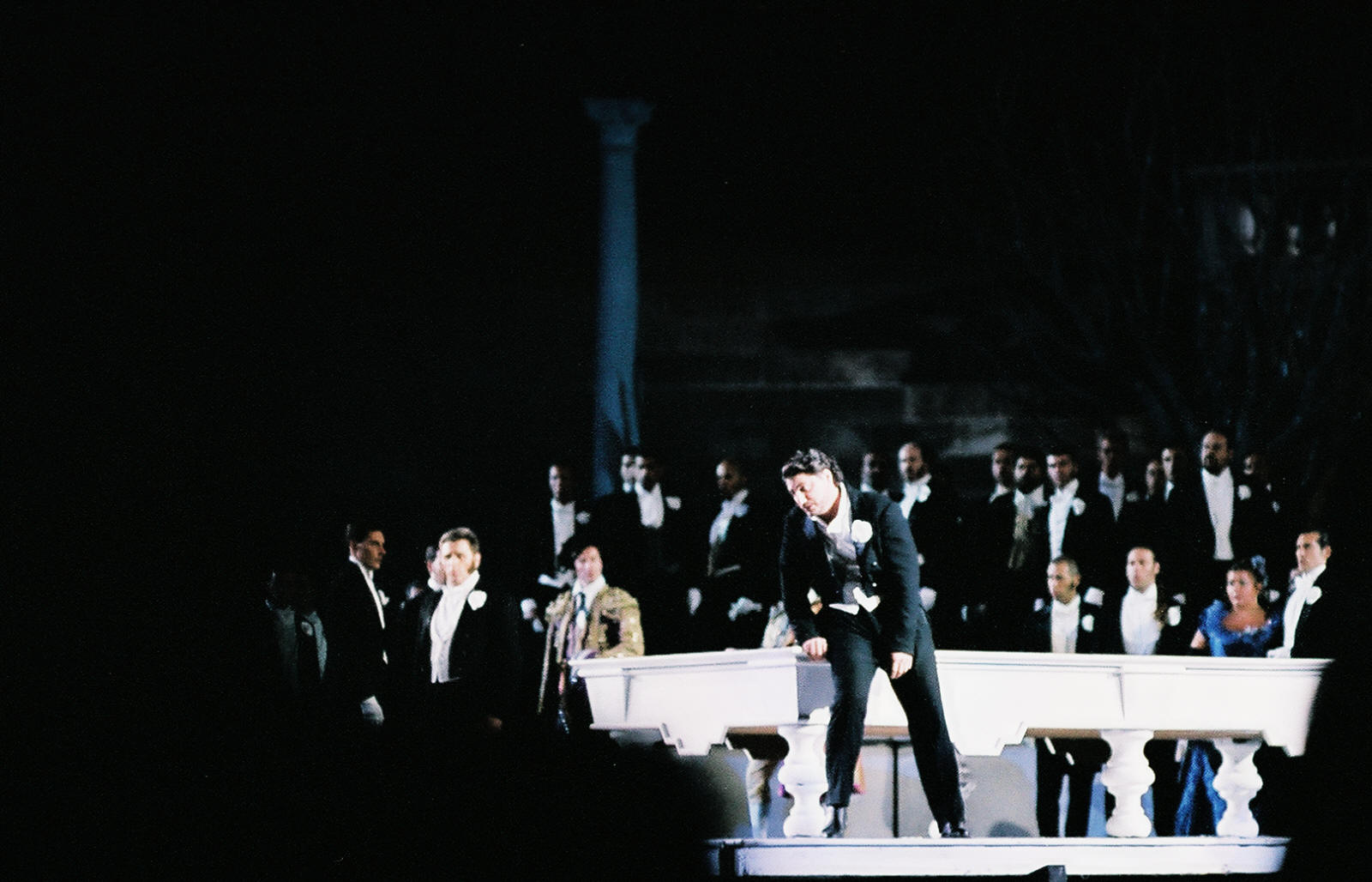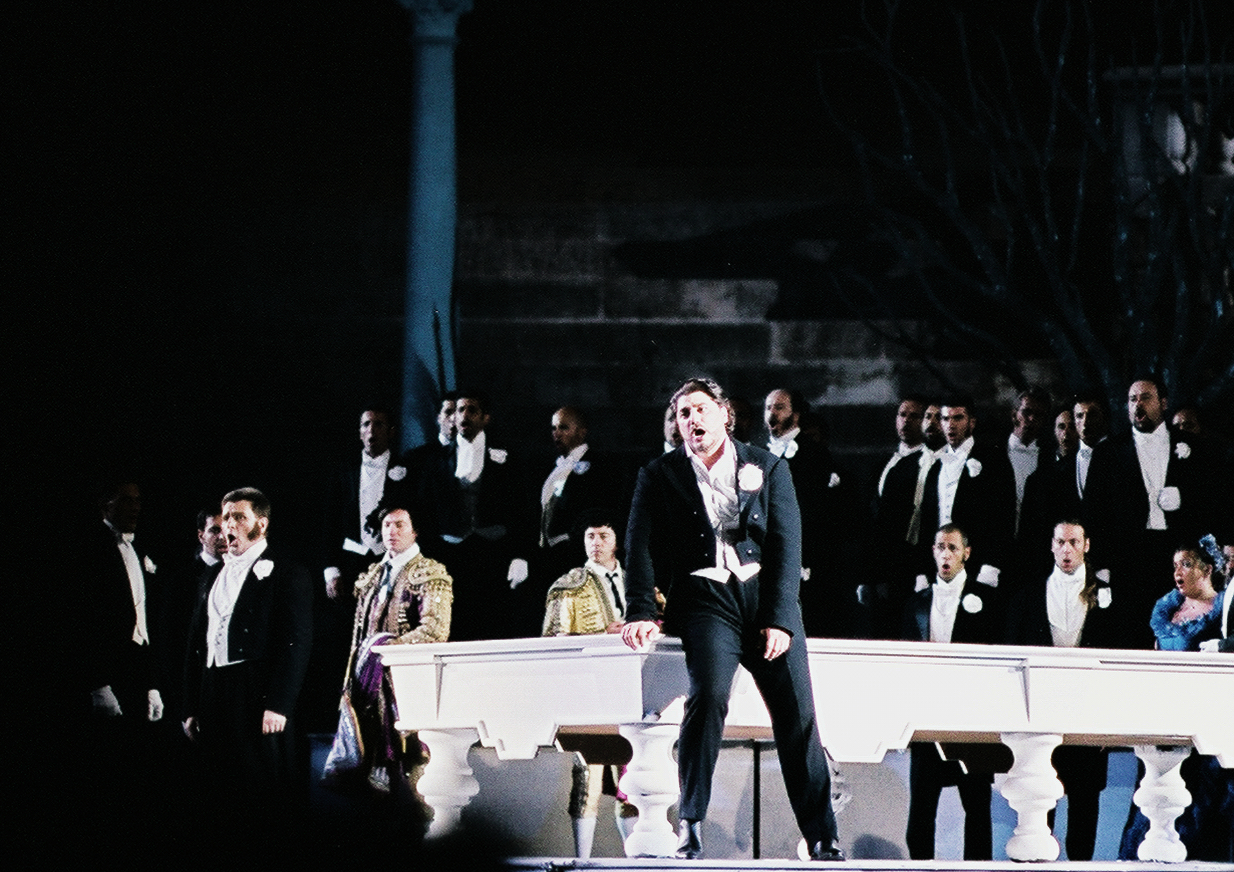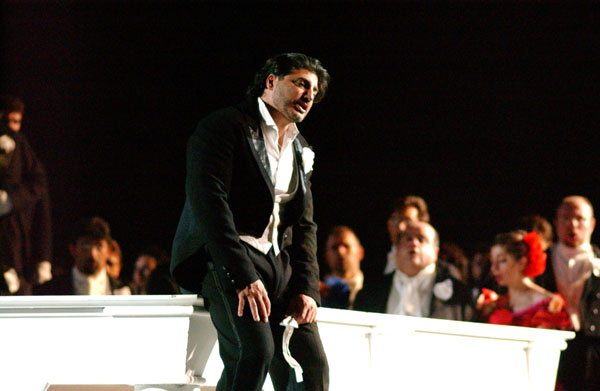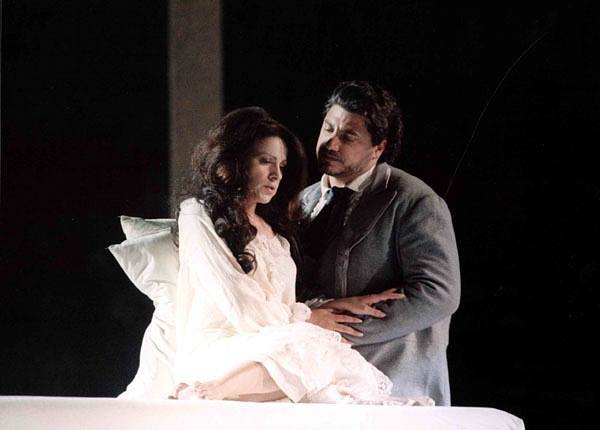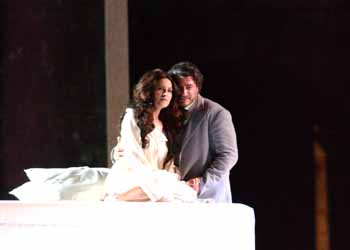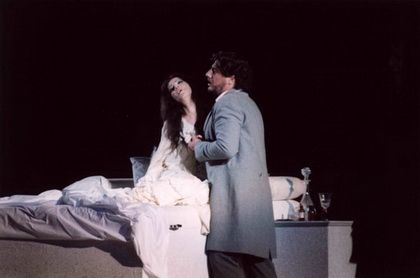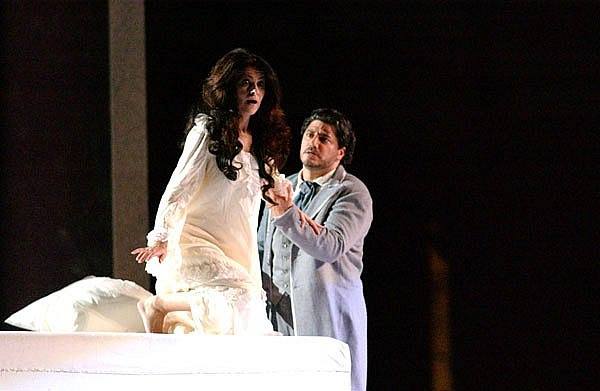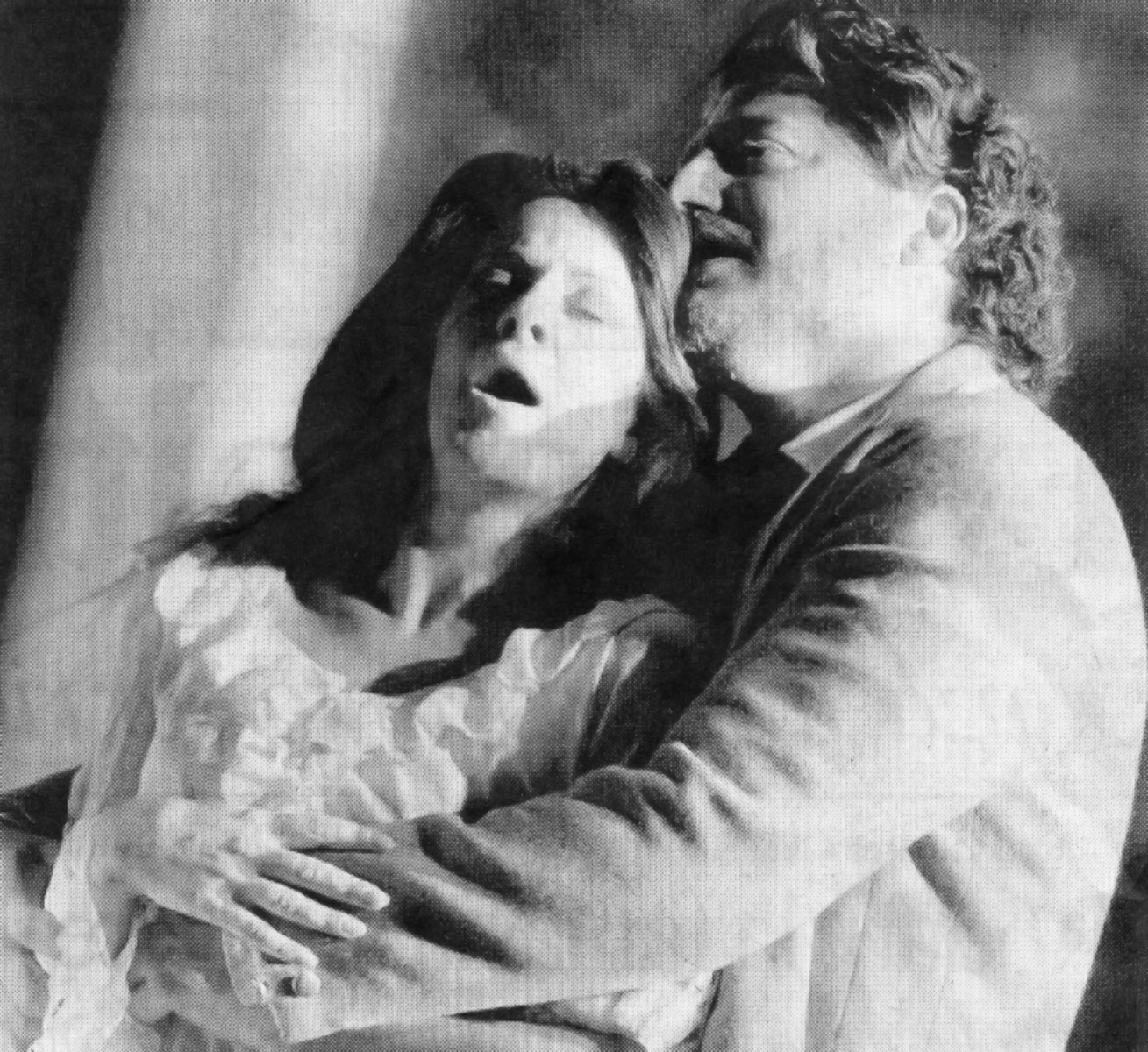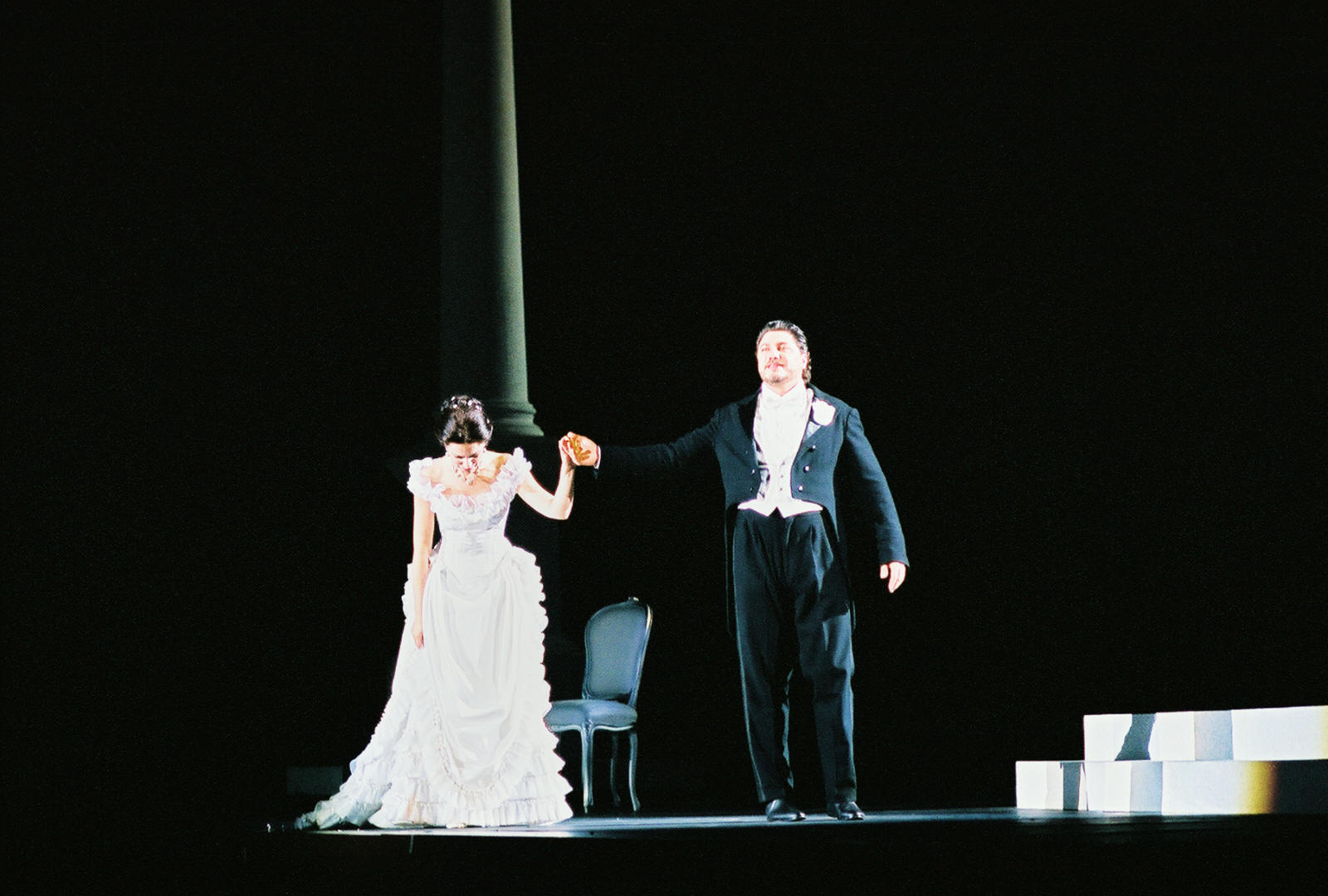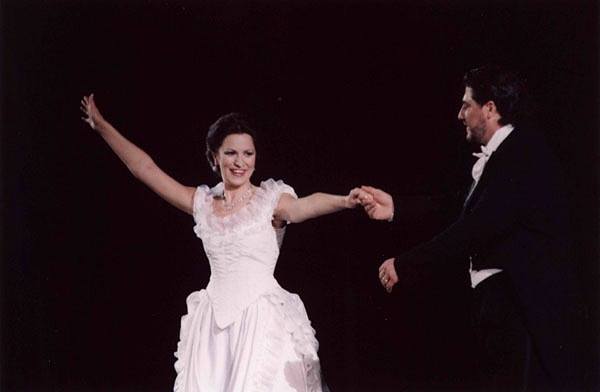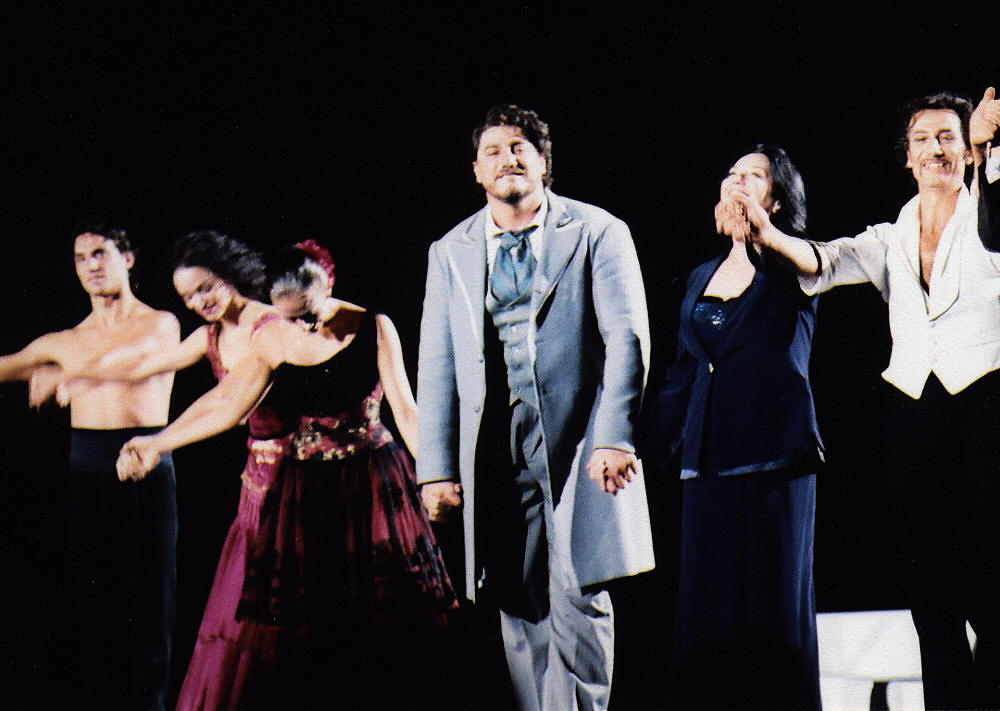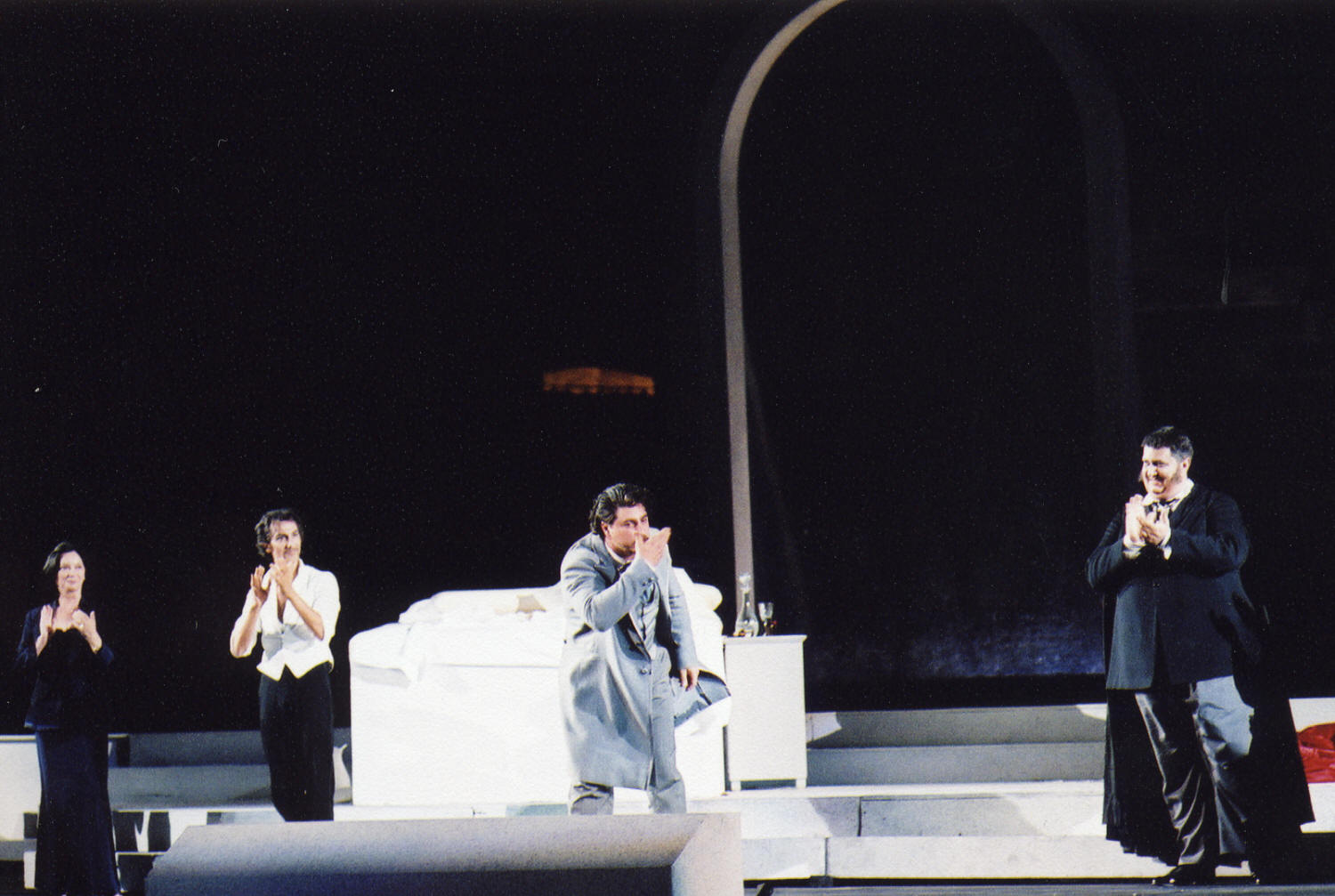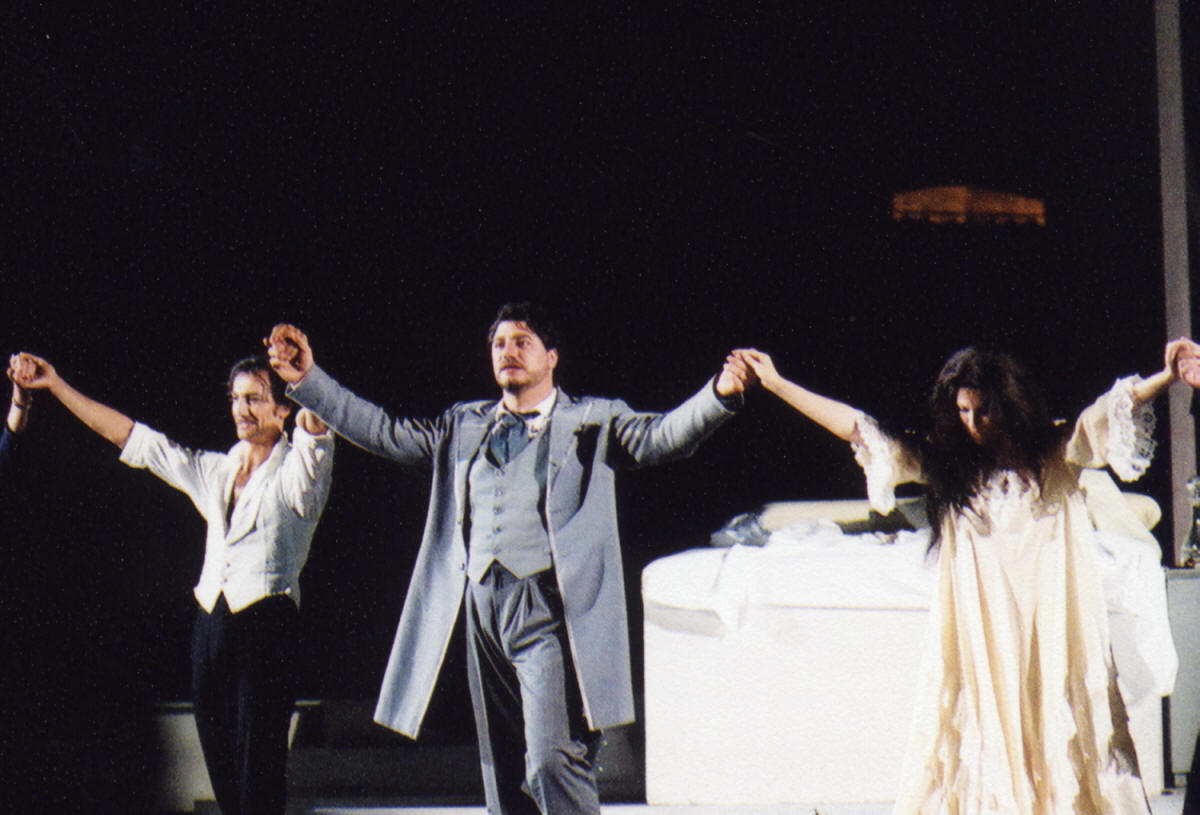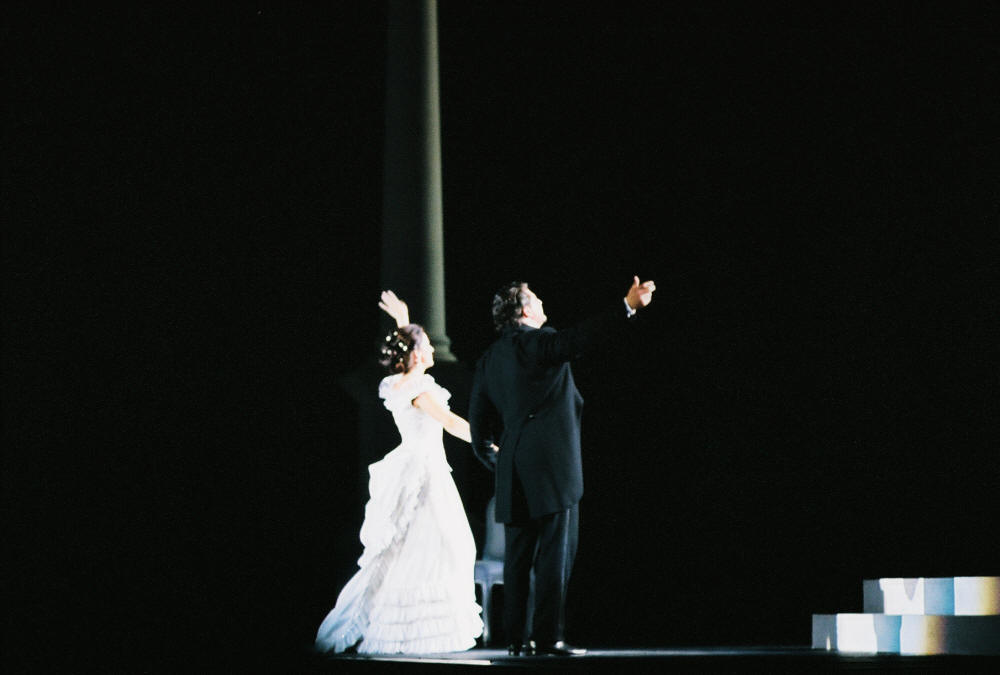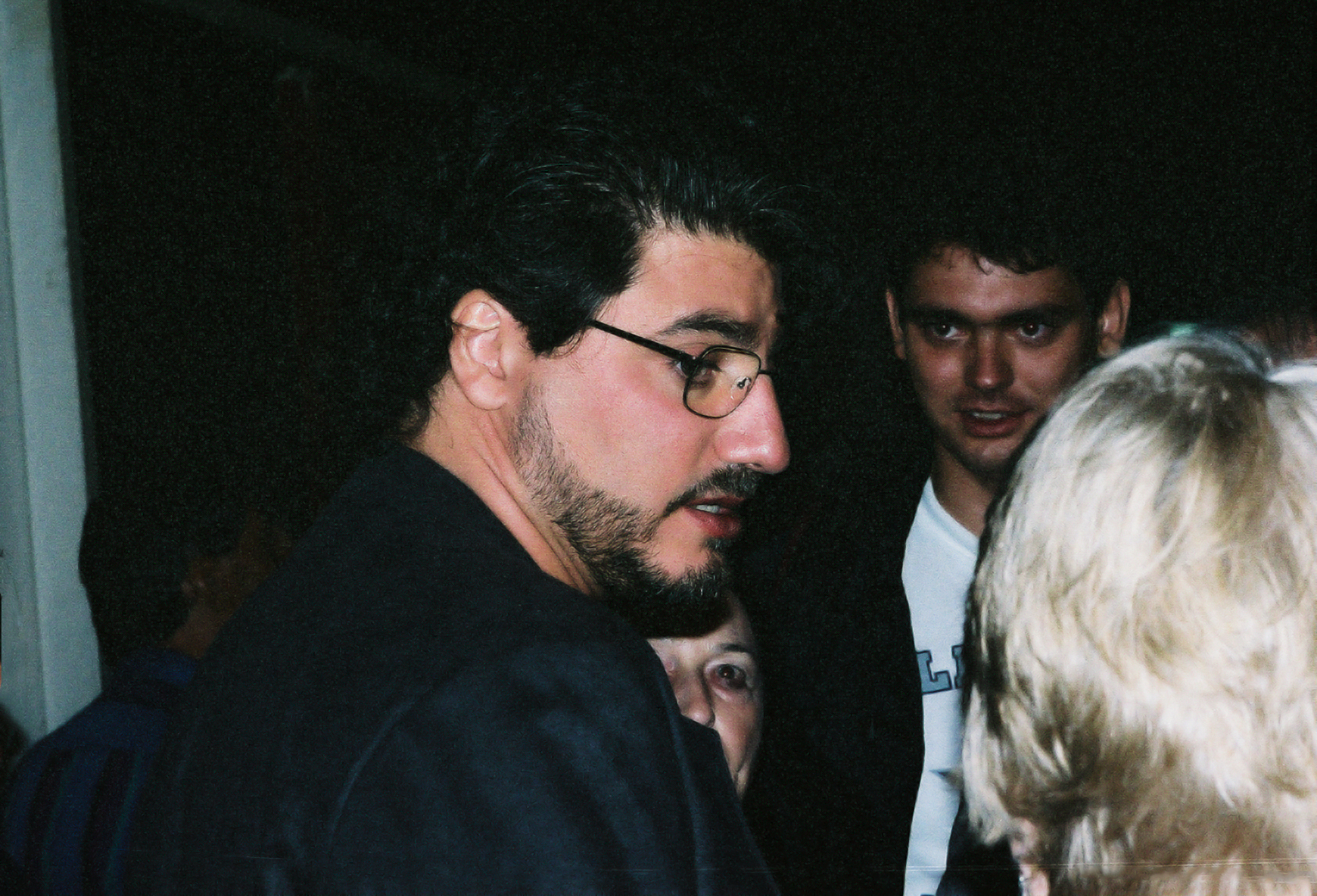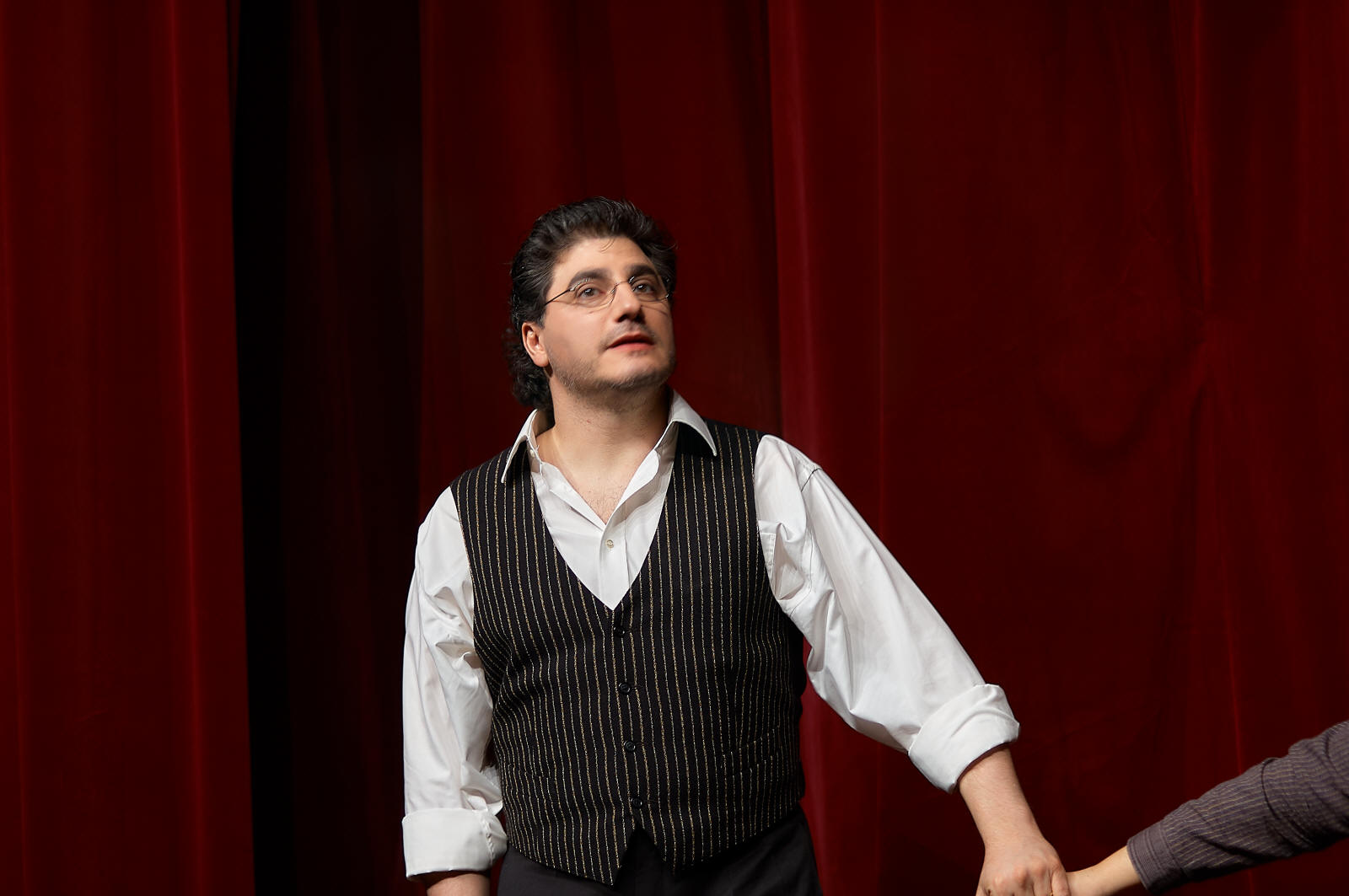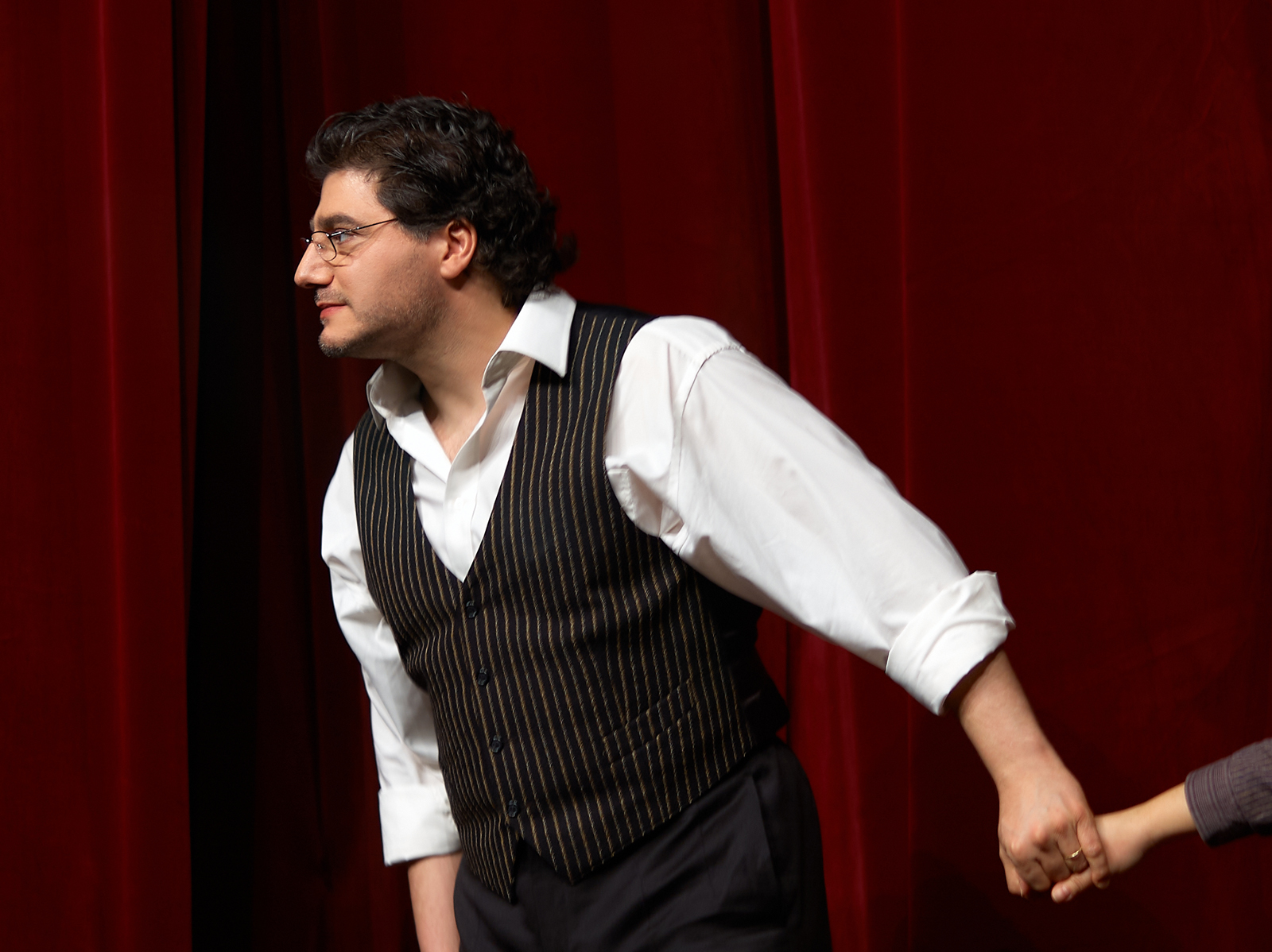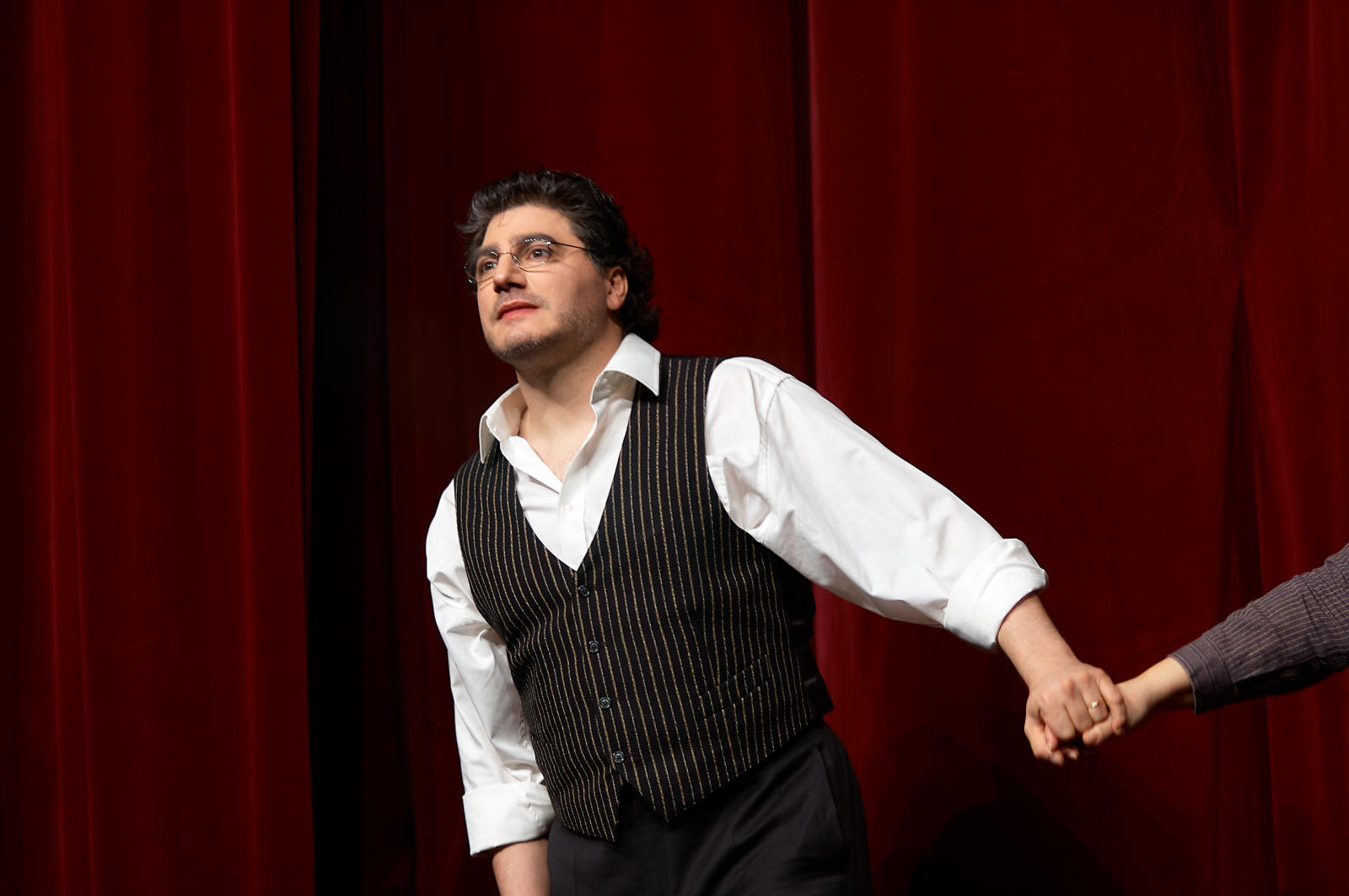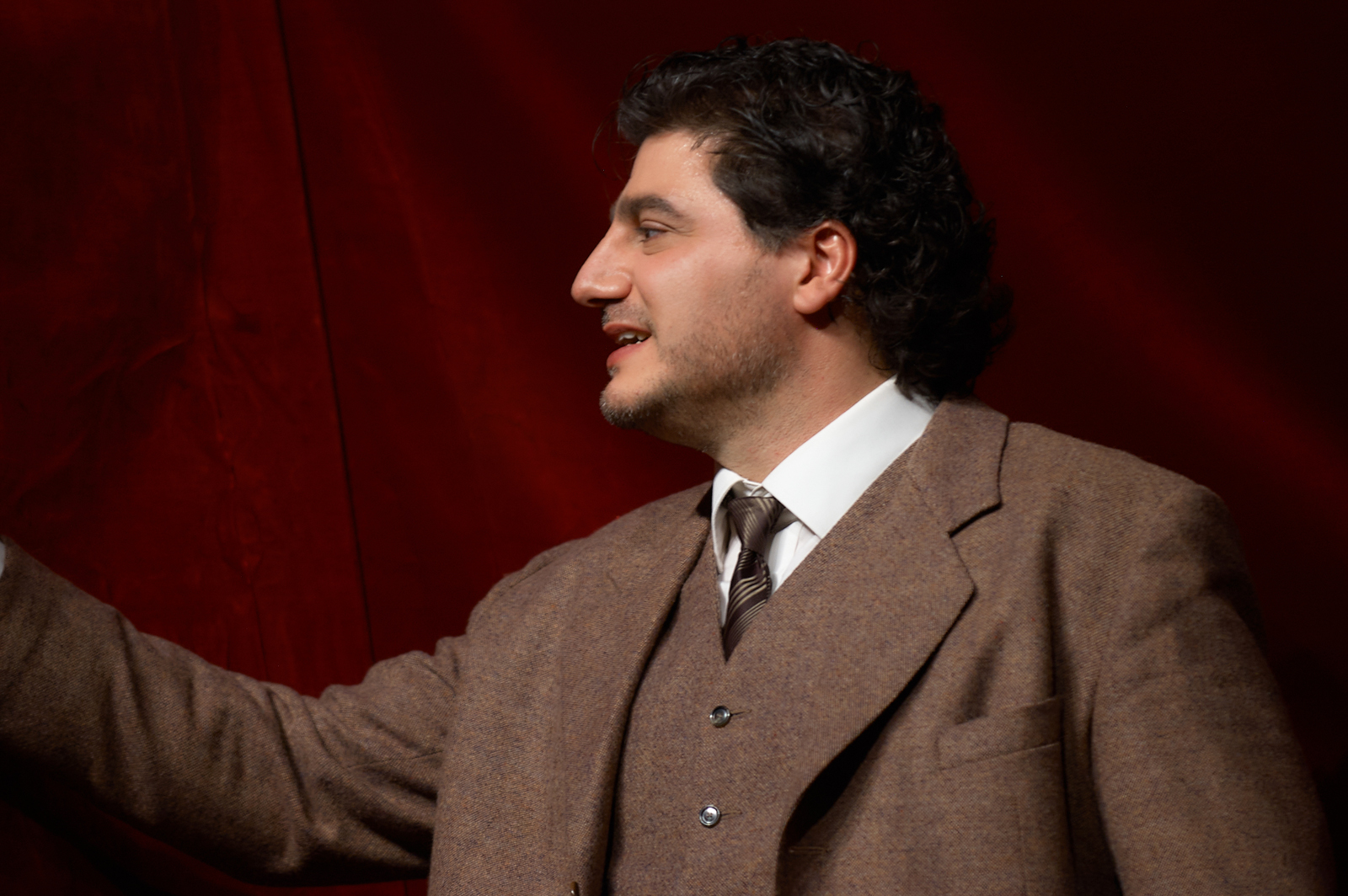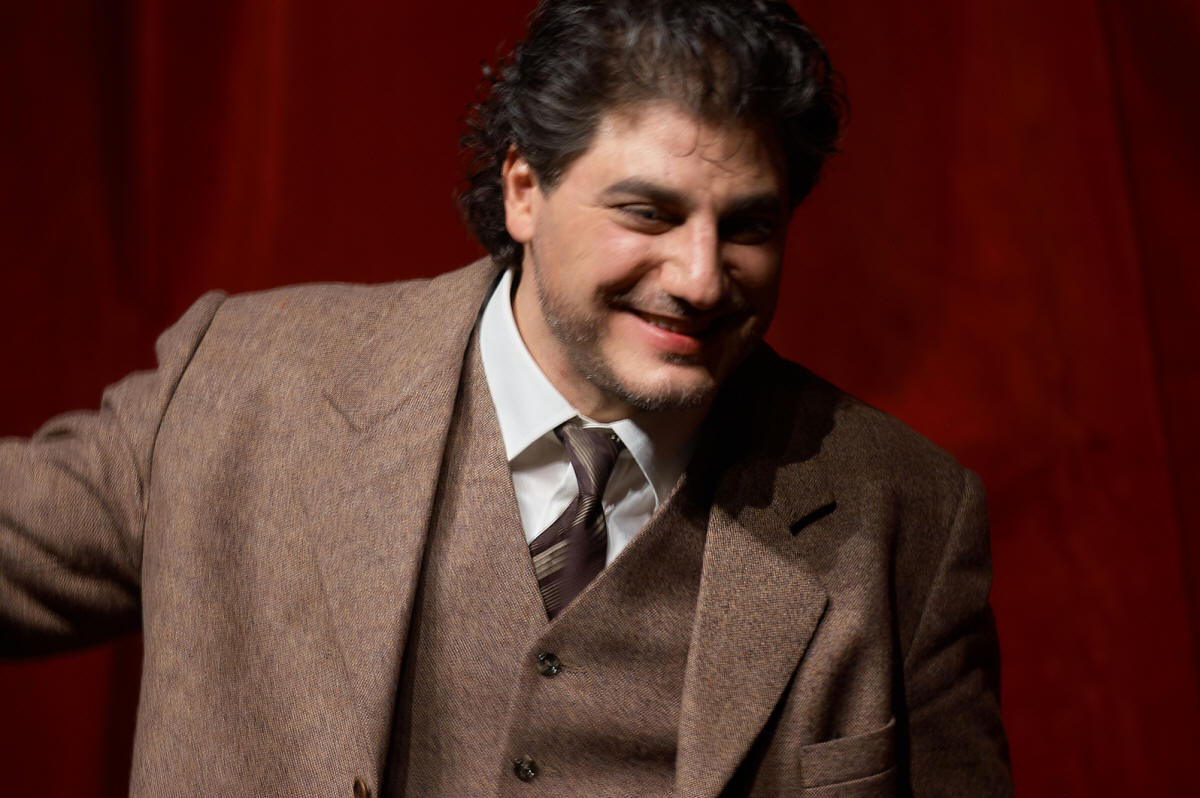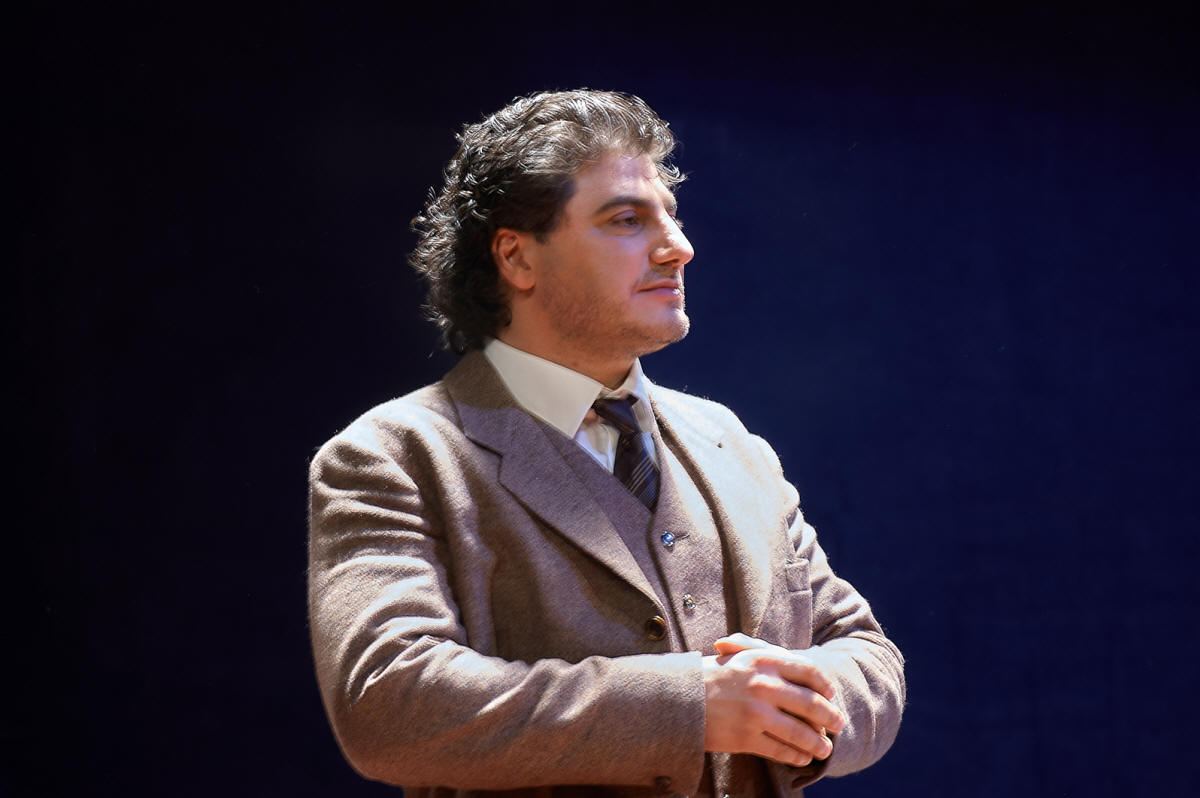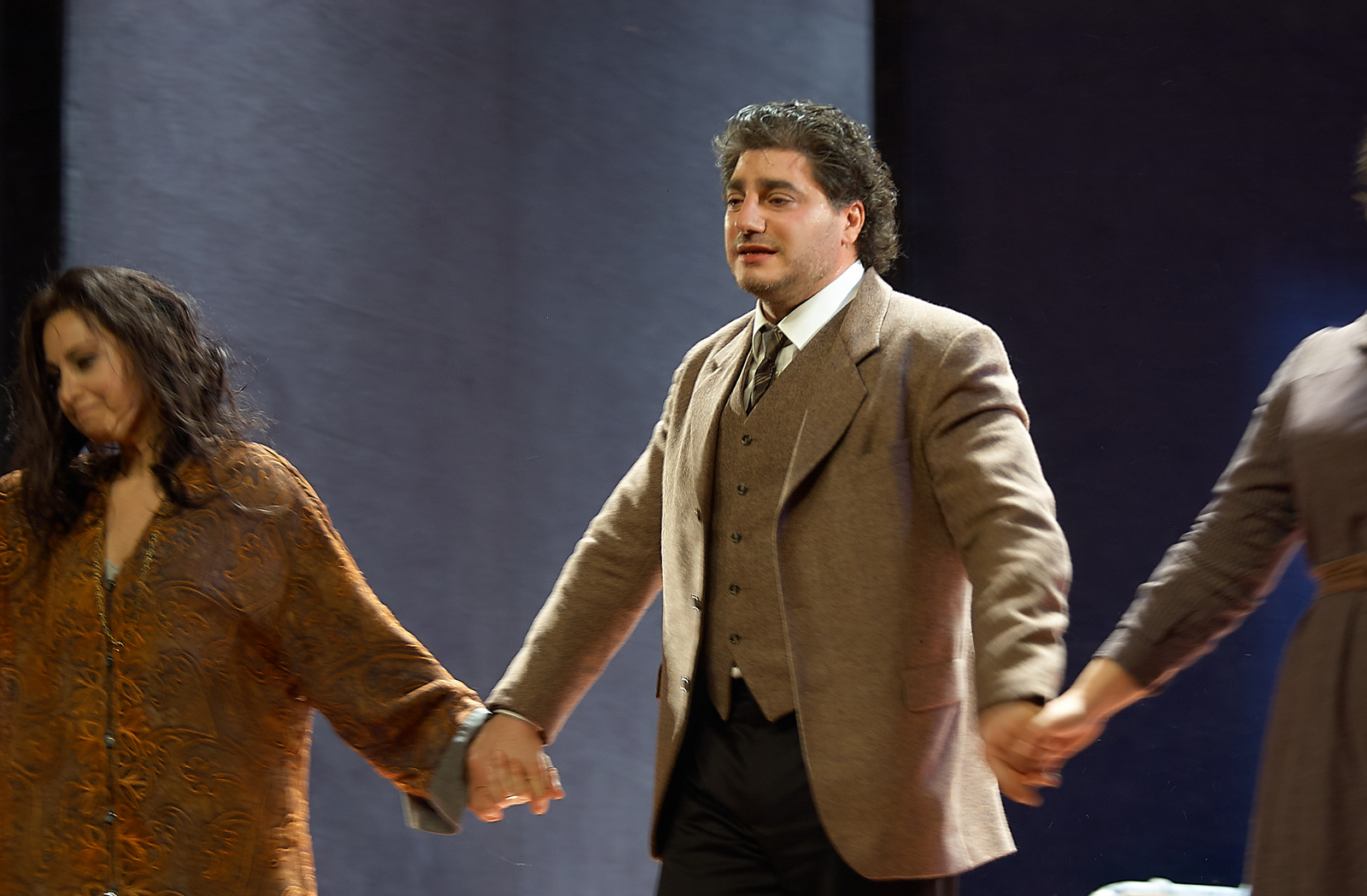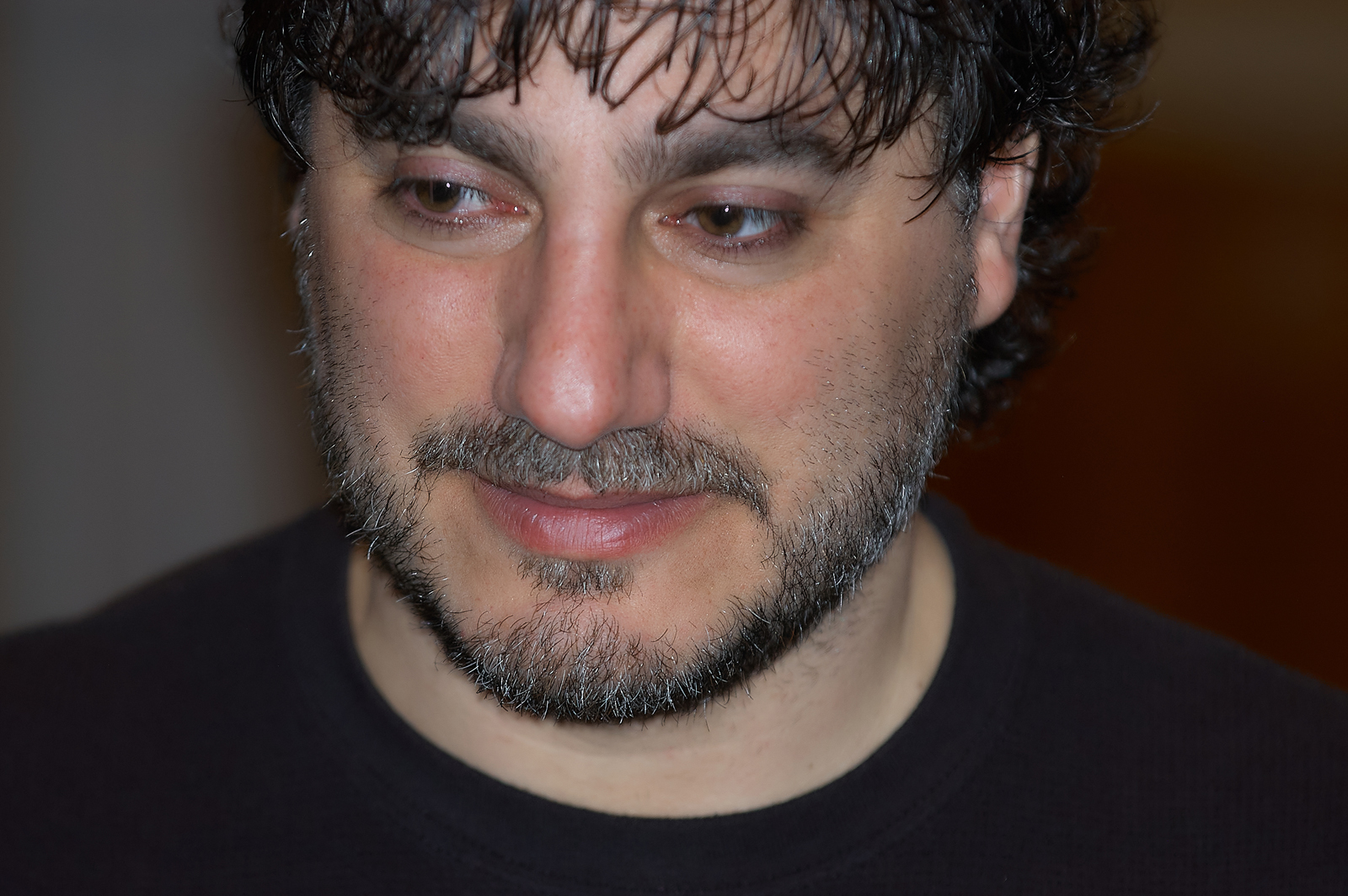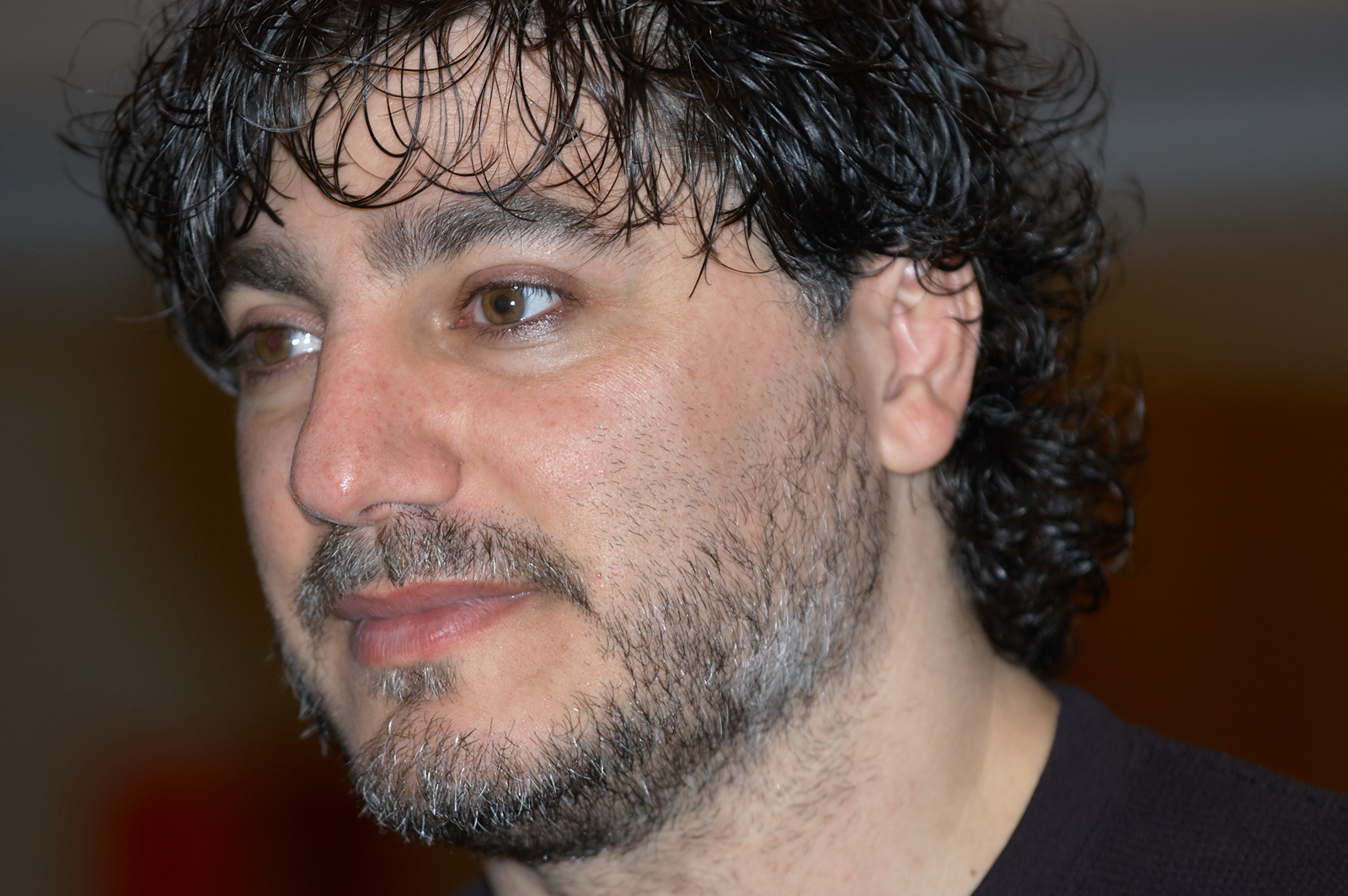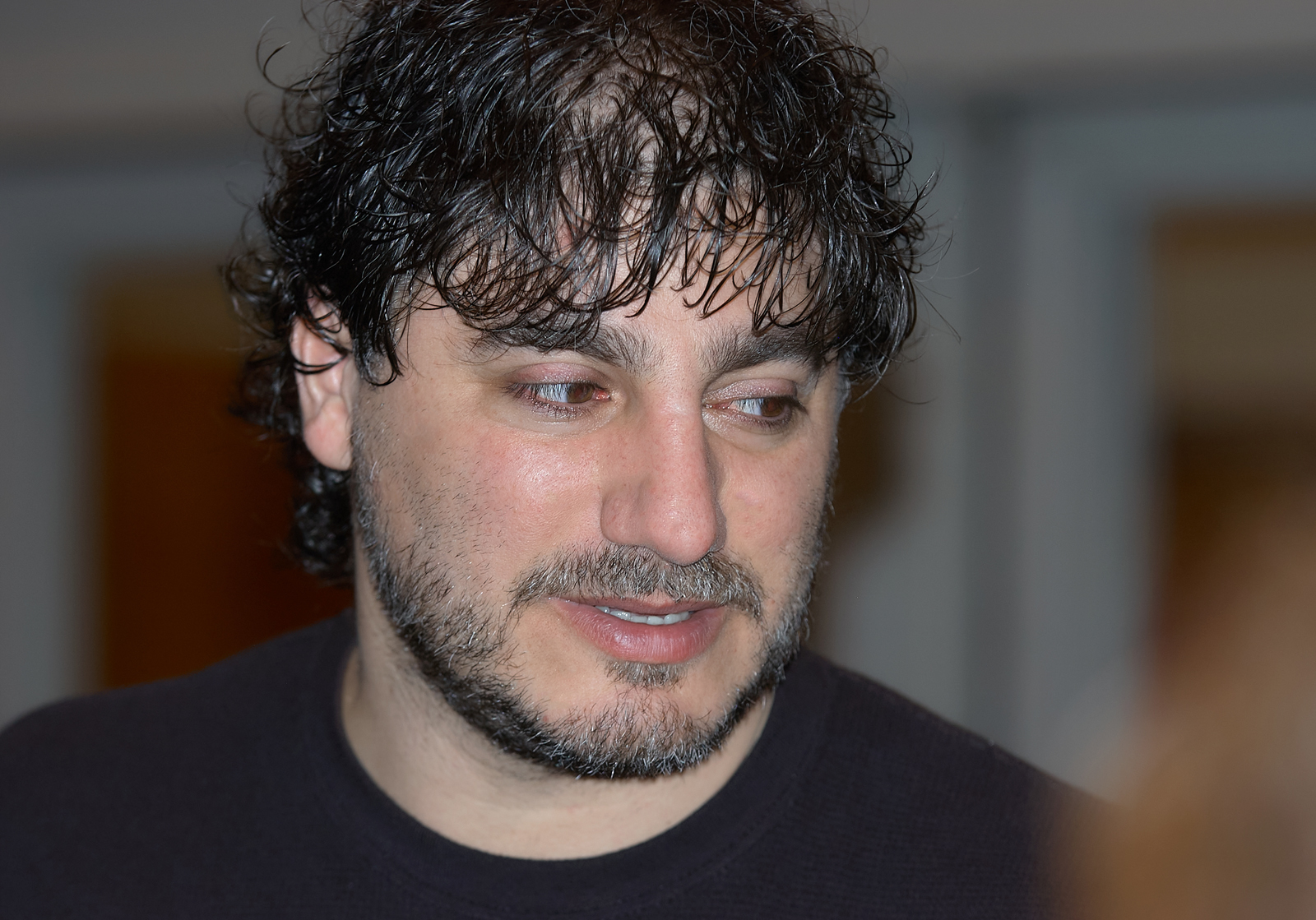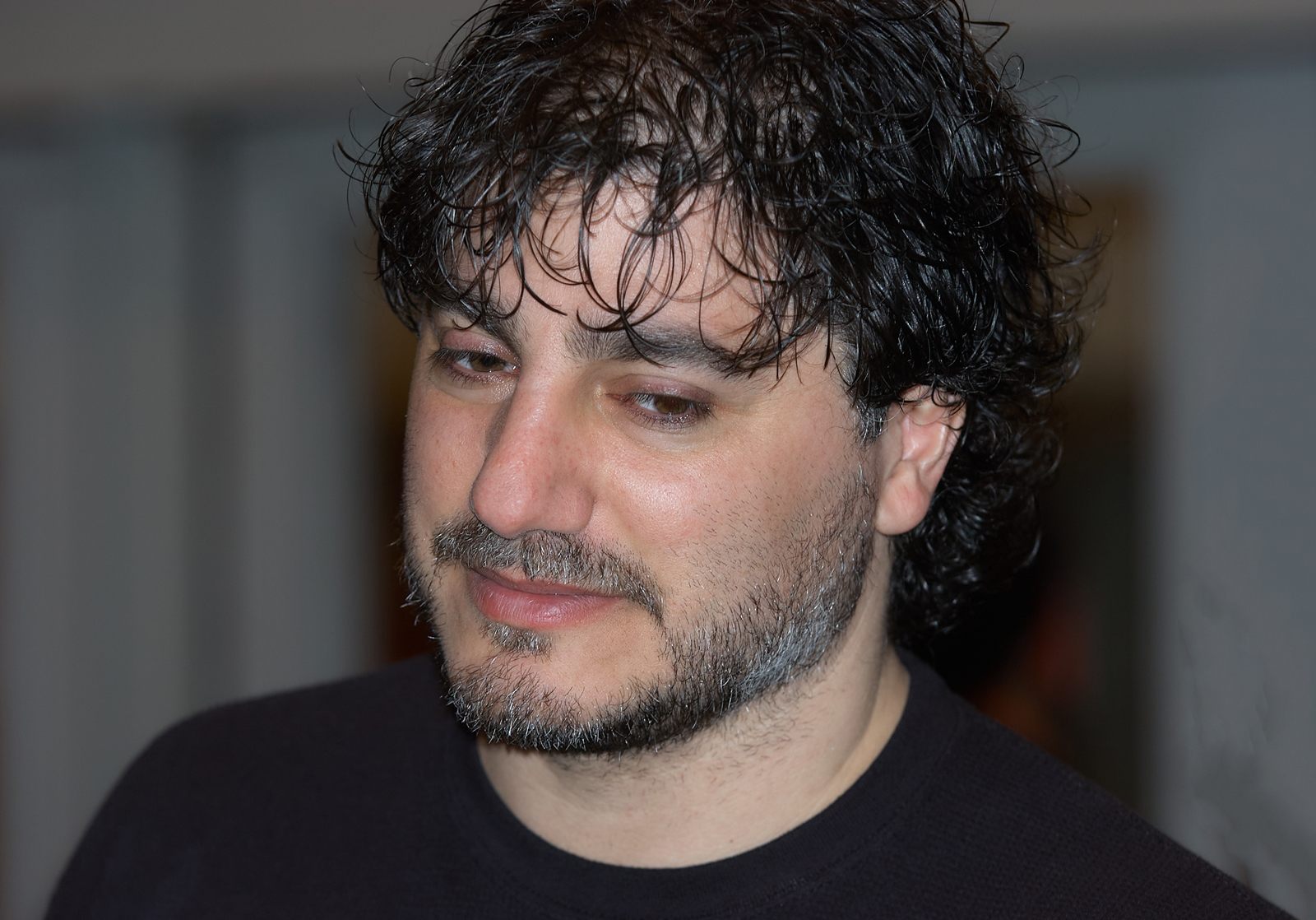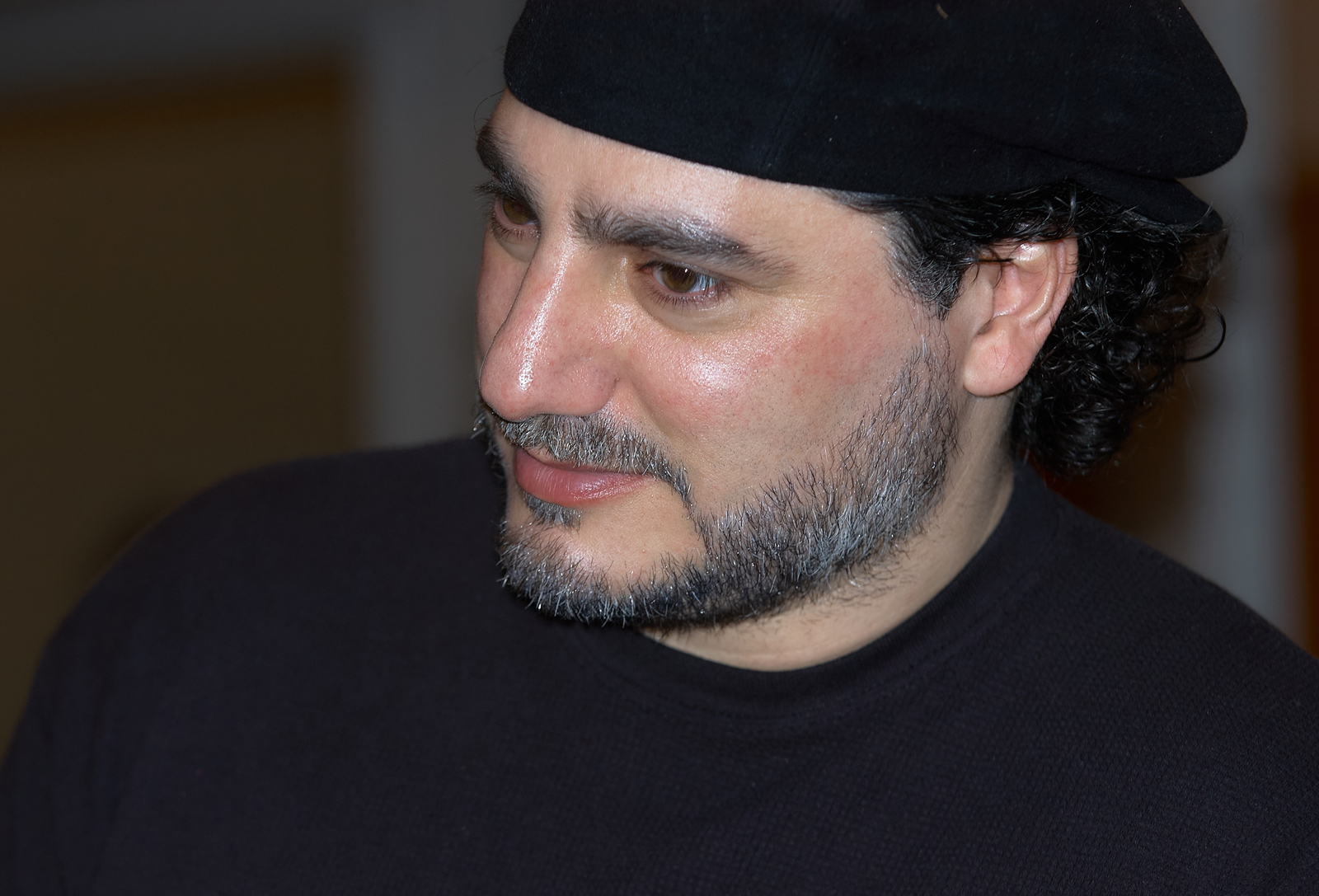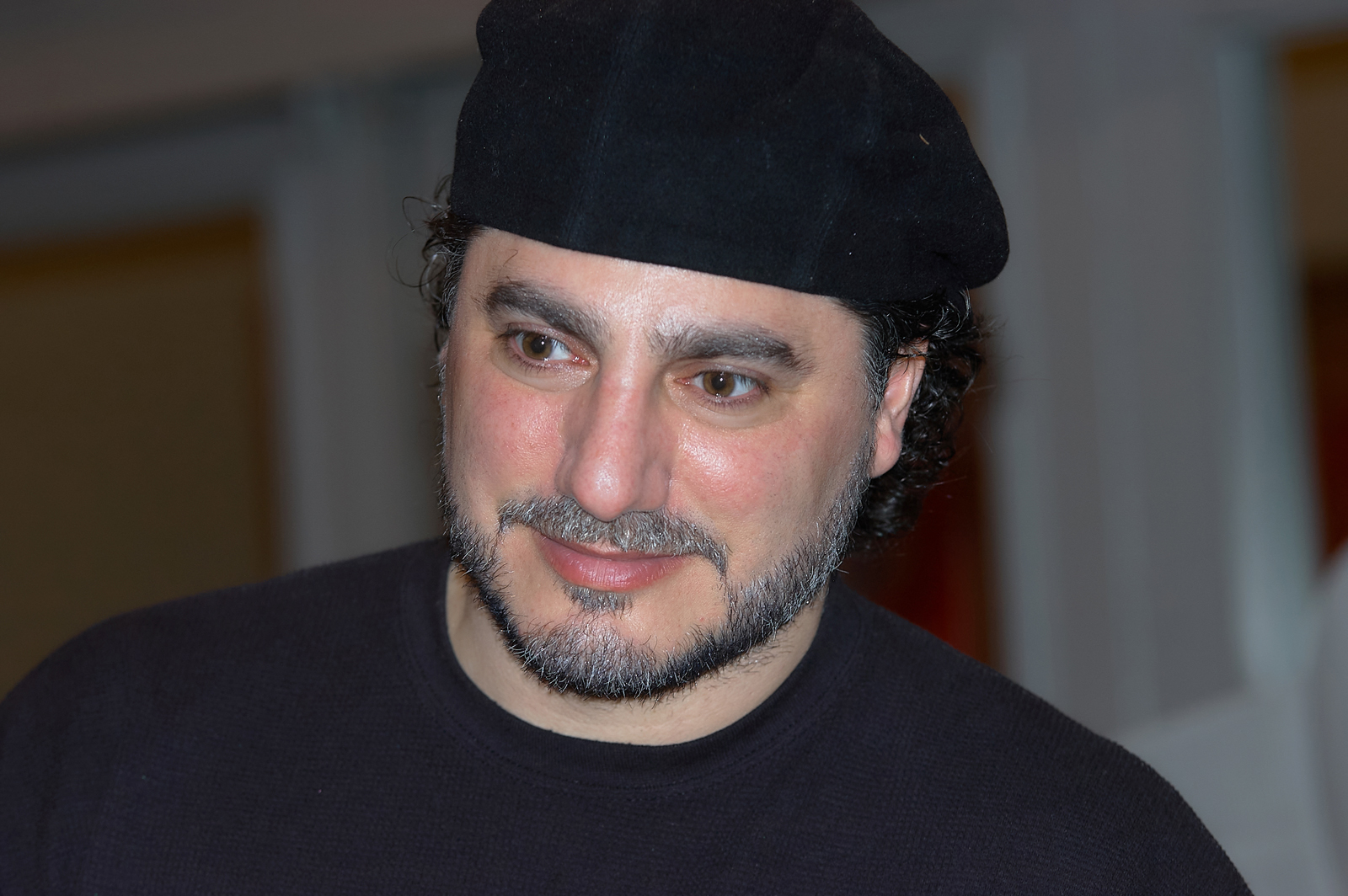|
Year |
Month |
Dates |
Work |
Theater |
City |
Notes |
Country |
|
2023 |
December |
1, 2, 3, 5, 6, 7, 9 |
La Traviata |
Teatro Massimo Bellini |
Catania |
Conductor |
Italy |
|
2006 |
March |
17, 22 |
La Traviata |
Opernhaus |
Zürich |
|
Switzerland |
|
2003 |
November |
21, 23, 28 |
La Traviata |
Opernhaus |
Zürich |
|
Switzerland |
|
2003 |
July |
31 |
La Traviata Gala (semi-staged) |
Arena di Verona |
Verona |
Gala performance |
Italy |
|
2000 |
June |
3, 4 |
La Traviata a Paris |
Locations around Paris |
Paris |
Live streamed internationally; CD; DVD |
France |
|
La Traviata a Paris, June 2000: “Argentinean tenor José Cura is the splendid Alfredo, a role ideal for the smooth, elegant middle of his voice. One of the two verses of Alfredo’s often-cut “Oh mio rimorso” has been left in, filmed with the camera about two inches from his nose. Has it never occurred to camera folk that the human mouth while singing is seldom if ever a thing of beauty?” LA Weekly, 23 August 2000
La Traviata a Paris, June 2000: “Don't miss this one. There have been more than a few film and television versions of La Traviata, but Giuseppe Patroni Griffi's may be the most original and certainly one of the most exciting. As Alfredo, Cura proves again that there is no more exciting young tenor on the scene today. His dashing looks and heroic timbre, the impulsive thrust of his singing and his attention to words come together in a complex portrait of a man caught in a maelstrom of emotion.” SFGate, 25 August 2000
La Traviata a Paris, August 2000: “José Cura is already recognized as the leading tenor of our time and is without doubt the best choice for the role of Alfredo.” TV2, 23 June 2000
La Traviata a Paris, August 2000: “This version confirmed the first place status of Argentinean tenor José Cura. An excellent actor and singer, José Cura has the presence of a Placido Domingo, the vocal finesse of a José Carréras.” Le Parisien, 12 June 2000
La Traviata a Paris, August 2000: “[This production] is intriguing and gives some insights into the proper milieu of the tale and the effect Verdi may have wanted in his single realistic (i.e., set in his own time) opera. And Gvazava and Cura are certainly worth hearing.” Denver Post, 26 August 2000
La Traviata a Paris, August 2000: “You can catch Cura in his portrayal of Alfredo in a rare 360-degree camera angle shot in four locations across the city of Paris over a period of two days. From Versailles to the Eiffel Tower, Cura sings, dances, and makes the ladies swoon in his first national television appearance.” Classical Star, 26 August 2000
La Traviata a Paris, August 2000: “Cura’s Alfredo will delight his many fans and further frustrate those who, like me, don’t quite get him. His blunt, throaty delivery negates a lot of the manliness of his basic sound. And while the Argentinian tenor’s swarthy looks make a dashing first impression, close-ups reveal one or maybe two expressions. In other words, he’s an OK singer and not much of an actor.” Boston Herald, 1 September 2000
La Traviata a Paris, August 2000: “Cura, one of the hottest new tenors on the international scene, is an elegant, dashing Alfredo, fully in command of Verdi style and the role’s dramatic needs.” Cleveland Plain Dealer, 27 August 2000
La Traviata a Paris, August 2000: “The Siberian soprano Eteri Gvazava looked unsuitably healthy for someone in the last stages of TB, while José Cura did not suggest the younger lover. Still, over the next 24 hours one learned to sympathize, and the final scene grasped us by the throat. An unforgettable event.” Financial Times, 9 June 2000
La Traviata a Paris, August 2000: “Cura is a sexy, charismatic Alfredo both in voice and presence.” Philadelphia Inquirer, 24 August 2000
La Traviata a Paris, August 2000: “No doubt about the Argentine singer’s passion (look, he’s shedding real tears!), but his voice is far too hefty at this point for Alfredo; all that scooping up to the note is not what the composer ordered.” SF Gate, 25 August 2000
La Traviata a Paris, August 2000: “An ultrarealistic version of La Traviata…Argentine tenor José Cura was a convincing Alfredo….” New York Times
La Traviata a Paris, June 2000: “Jose Cura was at first altogether too macho and confident for the supposedly shy Alfredo, and his Otello-like voice is hardly the instrument for Alfredo' music. He was, predictably, happiest in the denunciation chez Flora-that is until Act 3 when suddenly he forgot self and sang the role, a finely moulded, piano 'Parigi, o cara , movingly directed by Patroni Griffi. Indeed the whole scene, with Gvazava really death-haunted, was in itself a justification of the whole project, and as deeply eloquent and tragic as it should be. Shot in soft light and focus, the twilight feeling mirrored the heartache of Violetta's dying moment…. this was a performance that surely will have won converts to opera for the best reasons. It was a pity that most of the broadsheet chose to ignore the whole event.” Opera
La Traviata, Verona, July 2003: “For his part, José Cura was clearly suffering from the fatigue of a season that had subjected him to a terrifying and consequential tour de force—just two days earlier the tenor had performed in Carmen after engaging in almost all the performances of Turandot. His Alfredo was blurred, devoid of expressive softness, too pushed with an oscillating and forced emission, in search of- subtleties almost never adequately calibrated. Still, in the end, a festive conclusion [of the season].” L ‘Arena, 1 August 2003
La Traviata, Verona, July 2003: “From the cast list appeared a name which, due to the role assigned, was immediately perplexing: José Cura as Alfredo Germont. The role had not suited him even in the now famous television Traviata three years earlier, years during which the Argentine tenor has devoted himself exclusively to the lyric-spinto / dramatic repertoire. How was it that he thought he could return to Alfredo's shoes? José Cura cannot think of singing Otello, Don José and Calaf and then "honestly" sing Alfredo with a song blinded by anger, as if Turridu had appeared on vacation in Paris. His singing was non-existent, as it was replaced by a continuous declamation, with disproportionately inflated centers forcing him to merely hint at high notes at the limit of intonation. Perhaps they thought of offering the role of Alfredo because Cura was already at the Arena to sing other works, and in any case his name, especially in the face of this unique evening, ensured greater visibility?” OperaClick, 31 July 2003
La Traviata, Zurich, November 2003: “José Cura was awaited with curiosity, even perplexity, in Alfredo, a role normally reserved for lyrical tenors at the start of his career. Familiar with a more dramatic repertoire, the tenor’s voice is now too dark and too heavy now to be totally credible as a young lover. While his luminous and insolent timbre and undeniable charisma have worked wonders, the overall impression is nevertheless tarnished by a blatant lack of rigor.” ConcertoNet, November 2003
|
La Traviata -- Catania
December 2023
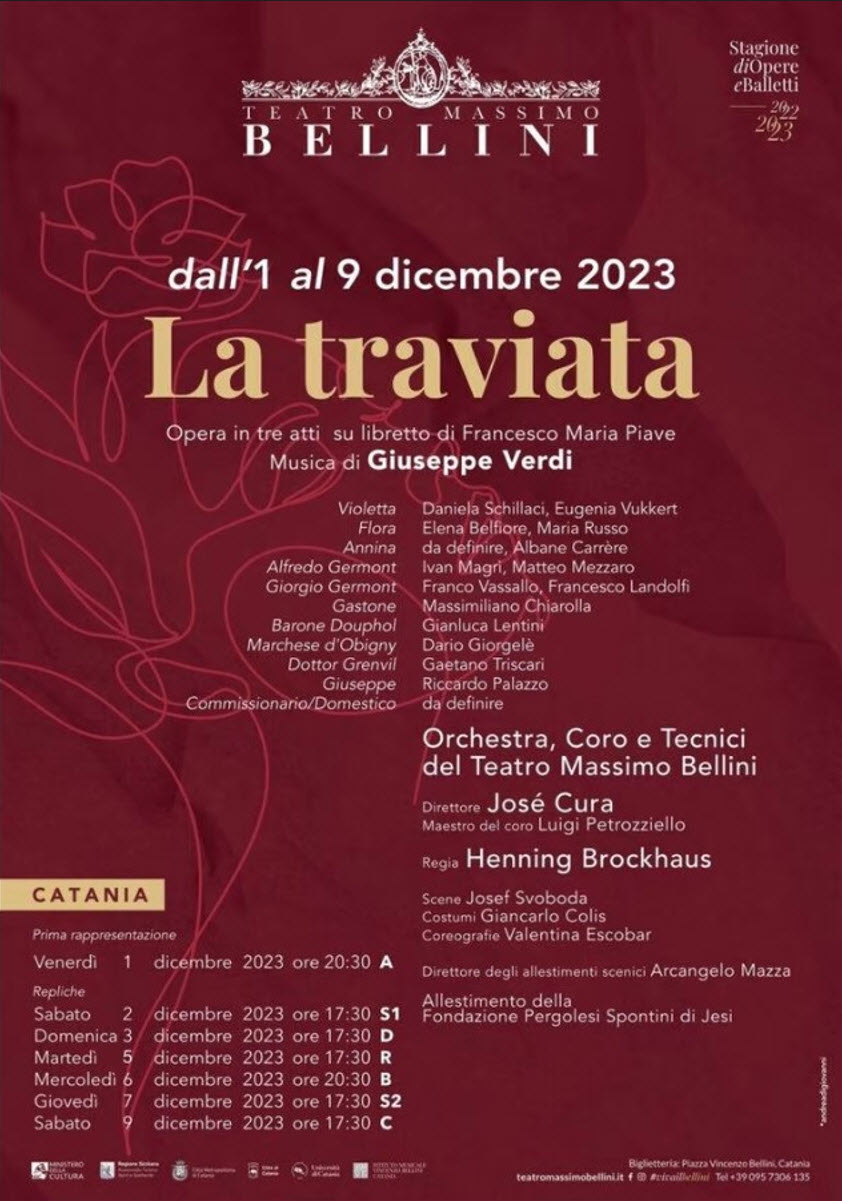

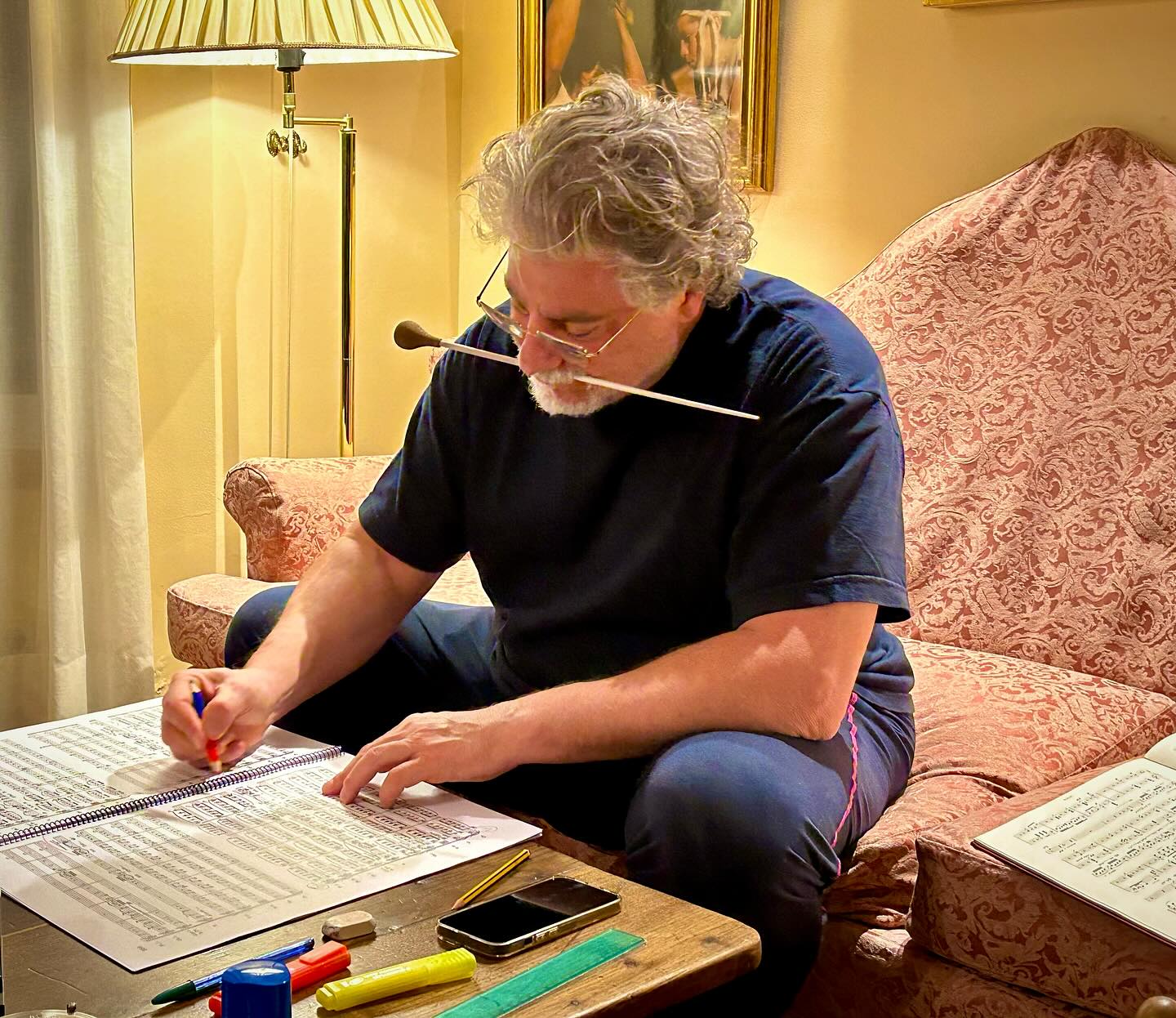
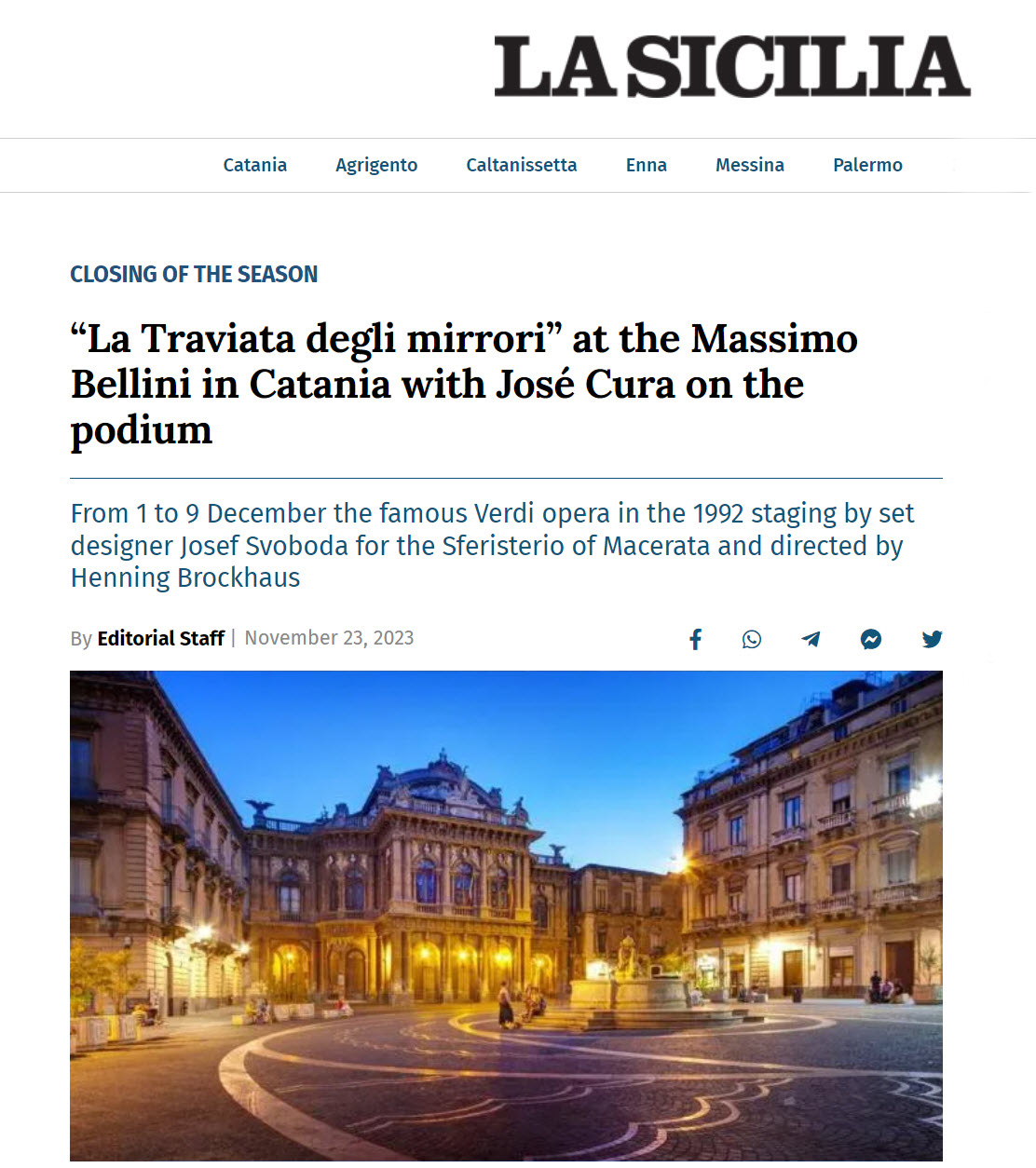
|
CLOSING THE SEASON “La Traviata degli mirrori” at the Massimo Bellini in Catania with José Cura on the podium From 1 to 9 December the famous Verdi opera in the 1992 staging by set designer Josef Svoboda for the Sferisterio of Macerata and directed by Henning Brockhaus La Sicilia Editorial Staff 23 November 2023
[Mostly computer translation / excerpts]
A large mirrored wall reflects the stage to make the audience feel an integral part of the performance and magnetically attract it into a vortex in which voyeurism turns first into indignation and ultimately into tragedy. The Massimo Bellini Theater will host the edition of an opera production that has now become legendary: Verdi's La traviata staged in 1992 by the famous director Henning Brockhaus in the staging created by the brilliant set designer Josef Svoboda for the Sferisterio of Macerata. La Traviata of mirrors, as it is called, arrives in Catania at the end of the 2023 season of operas and ballets. Seven performances will be held from 1 to 9 December. In the foreground the Orchestra and Choir of the Etna opera institution once again hosts artists of clear renown. On the podium will be José Cura, conductor as well as tenor of international stature. Completing the roster will be Choir Master Luigi Petrozziello; costumes by Giancarlo Colis, choreography by Valentina Escobar, lights by Brockhaus himself. Installation by the Pergolesi Spontini Foundation of Jesi. In the title role the soprano Daniela Schillaci, in that of Alfredo the tenor Giorgio Misseri, in that of Giorgio Germont the baritone Franco Vassallo; performances will alternate respectively with the soprano Evgeniya Vukkert, the tenor Matteo Mezzaro and the baritone Francesco Landolfi . They have the task of animating a production that has become the best business card for the original Marerata staging, where it first saw the light and was revived in July for the tenth time. And the production has been exported to Beijing and Seoul, Nagoya to Melbourne and Baltimore, from Istanbul to Ljubljana, from Valencia to Muscat (first Traviata staged in Oman ). And then in Italy, in equally prestigious spaces: Opera of Rome, Teatro Massimo of Palermo, Lirico of Cagliari, Regio of Turin, and again in Florence, Naples, Parma, Genoa, Trieste, Verona, Sassari, Busseto, Arezzo, Ascoli Piceno , Fermo and Jesi. It is Brockhaus himself who speaks of the longevity of the staging: “I do it all the time, yet this Traviata never bores me. And I believe it has not lost its original freshness and impact. Everywhere the public is deeply impressed, reacting with long applause, in Turkey as in Korea, in Japan, in Italy. In broad terms it is always the same show, even if the details may change to adapt to the physical characteristics of the vocal performers.” Brockhaus's reading moves the setting forward to the early twentieth century of the sensual Belle Epoque, taking inspiration from the painting of Giovanni Boldini to reproduce the opulence but also the decadence of the Parisian demi-monde. Everything is ready, therefore, at the Bellini to once again relive the immortal love story of Violetta and Alfredo, the melodrama in three acts set to music by Verdi with a libretto by Francesco Maria Piave, in turn based on the drama La Dame aux camélias by Alexandre Dumas fils. |
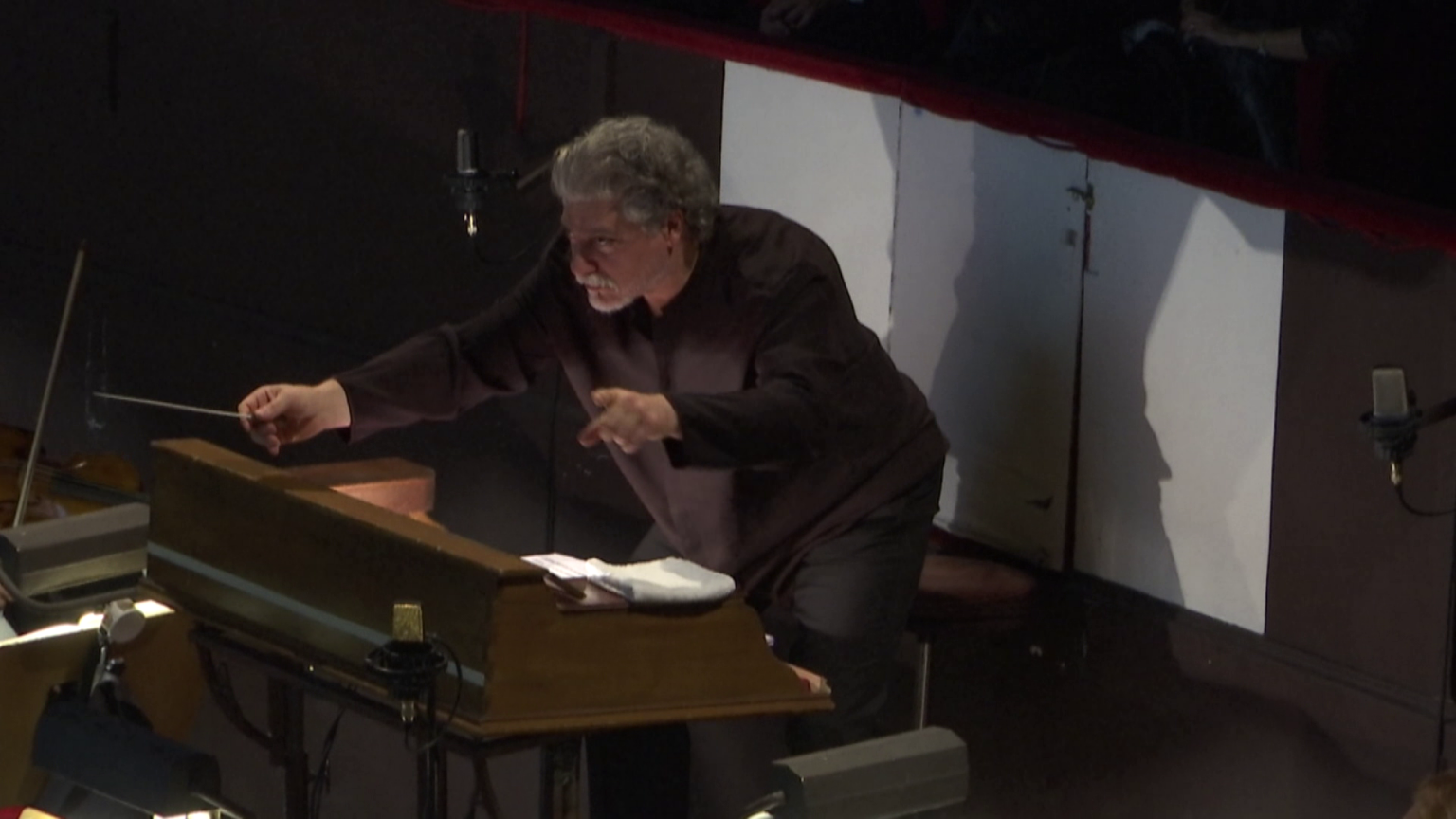
|
La Traviata, December 2023, Catania: “The capacity audience in attendance enthusiastically applauded a performance that, in every respect, proved noteworthy, starting with the conducting of Jose Cura, the great Argentine tenor who is also a conductor and composer and who brought all his experience as a Verdi singer to the Orchestra Del Teatro Massimo Bellini Di Catania, so that Traviata could emerge in all its musical complexity, thanks to an excellent choice of tempos, capable of supporting the singers but also marking the different moments of the opera, from the frenzied tingling of the first act (clearly intended) with tight, tight rhythms, at times almost ruthlessly so, then calming in the second act, in the heartfelt lyricism of the duets, proceeding with extreme skill in the final concertato of the second act, where every voice could be perceived with rare clarity, and then concluding in the inevitability of death in the finale of the third, where the final bars of the percussion, bronze, pressing, but endowed with an enviable roundness of sound, sealed the most tragic and painful aspect of the score. Noteworthy in every respect were the contributions of the string section, delicate and suffused in the prelude to the third act, and of the interventions of the first violin and solo clarinet, which helped to confirm once again the sure growth of the Bellini orchestra, both in terms of cohesion and sound quality.” Bellini News, 2 December 2023
La Traviata, December 2023, Catania: “It is worth highlighting the presence of the great José Cura on the podium as Concertmaster and Orchestra Director. Maestro Cura, like all conductors who have also sung, has an extra edge in terms of identification with the problems the orchestra, often pushed to too high volumes by rampant Maestros perhaps of a more symphonic tradition that operatic, can potentially cause for the performers on stage. So, his was a calm, moderate conducting, admittedly a bit stingy with attacks, but absolutely free of any zum-pa-pà of perfunctory Verdi tradition. The Maestro also slightly slowed down the tempi in some parts to avoid precisely this age-old problem compared to other more lyrical and singable parts in the context of the entire opera. He can be credited, therefore, with making tasteful choices that never overstepped the guarded level required by the score.” Operaeopera, 3 December 2023 (also published in OperaLibera)
La Traviata, December 2023, Catania: “[The] staging risks polarizing the attention of spectators, almost placing the musical component in the background. However, what brought out all the values of Verdi's score was, first of all, the direction and coordination of José Cura, who drew from the highly concentrated orchestra (as well as from the brilliant choir, directed by Luigi Petrozziello, and from the soloists) a variety of sounds, timbres and rhythms that honored Verdi. One could perceive a precise desire to 'clean' the music of the maestro from Busseto from all the encrustations that have cemented uses and over time. Lean tempos prevented vocalistic excesses but were ready to linger if necessary; exemplary, for example, is the beginning of the third act with the dramatic trepidation of the strings through Violetta's sorrowful aria 'Addio del passa', performed in both verses. On the other hand, the opening of all the cuts that, in the past, caused havoc to the work was correct and careful.” I Vespri, 2 December 2023
La Traviata, December 2023, Catania: “All blended to perfection by the careful conducting of maestro José Cura, who knew how to perfectly measure the orchestral tension, just as Verdi required, suitable to supporting the corresponding dramatic tension of the voices, demonstrating an excellent chemistry with the Orchestra Del Teatro Massimo Bellini Di Catania. It is no coincidence, Daniela Schillaci reiterated in a recent interview, that all of Cura's reading ‘lets the emotion and tension of the characters shine through with wonderful colors and somewhat tighter tempi, but always animated by a profound respect for Verdi's will.’” Clessidra 2021, 3 December 2023 |
José Cura Statement on Violence


|
José Cura's Statement of Violence while in Catania for La Traviata Let's make noise, and not just another well-intentioned minute of silence. Let's make noise, shouting to the world our disdain for all forms of violence, with special attention to the violence that arises within our personal relationships, within our families, because that's where the poison grows before spreading like the worst of viruses. Let's make noise using every means at our disposal, from pacific gatherings in the square necessary to reassure ourselves that we are not alone in this fight, to the raw reading of our classics whose authors, men like us, knew so much about these and other struggles. What sense does it make to shout with nowadays voices against psycho-physical violence, if we become scandalized when, with earlier voices, the geniuses of the past alert us with their prophetic denunciations? "The Traviata of mirrors," as the historic production by Sbovoda-Brockhaus was baptized, and which we are reviving at the Bellini Theater in Catania these days under my musical direction, is yet another opportunity to reflect on our society, looking at ourselves in the (literal) mirror of that Parisian world described by Dumas, that first used and then condemned Violetta Valery: a woman whose “masterful” services, managed by “equals” for the pleasure of “certain”, did not even guarantee her the dignity of choosing how and with whom “fading away”… I am aware that speaking about "Traviata" without euphemisms may be scandalous... If that's the case, I apologize, not because I regret wanting to make people reflect, but because "offending" is not my intention. "Defending," on the other hand, is: defending the relevance of the messages contained in classical masterpieces against the conveniently set centenary. As long as we continue to repeat the classics without engaging with the warnings contained within them, not only will we be endorsing their death sentence —imposed by anachronistic approaches— but all the minutes of silence for the victims will unfortunately serve no purpose. Evil must be fought by educating in true love and sincere respect, or else we should prepare for many minutes of silence, so many that we risk remaining silent for life, something strongly desired by some... From my part, I will continue to use art to "make noise," supported by the masterpieces I have the privilege to navigate. In this case, reinforced by the overwhelming power of the Bellini Theater in Catania. (José Cura, November 2023) |
Birthday Celebration in Catania
